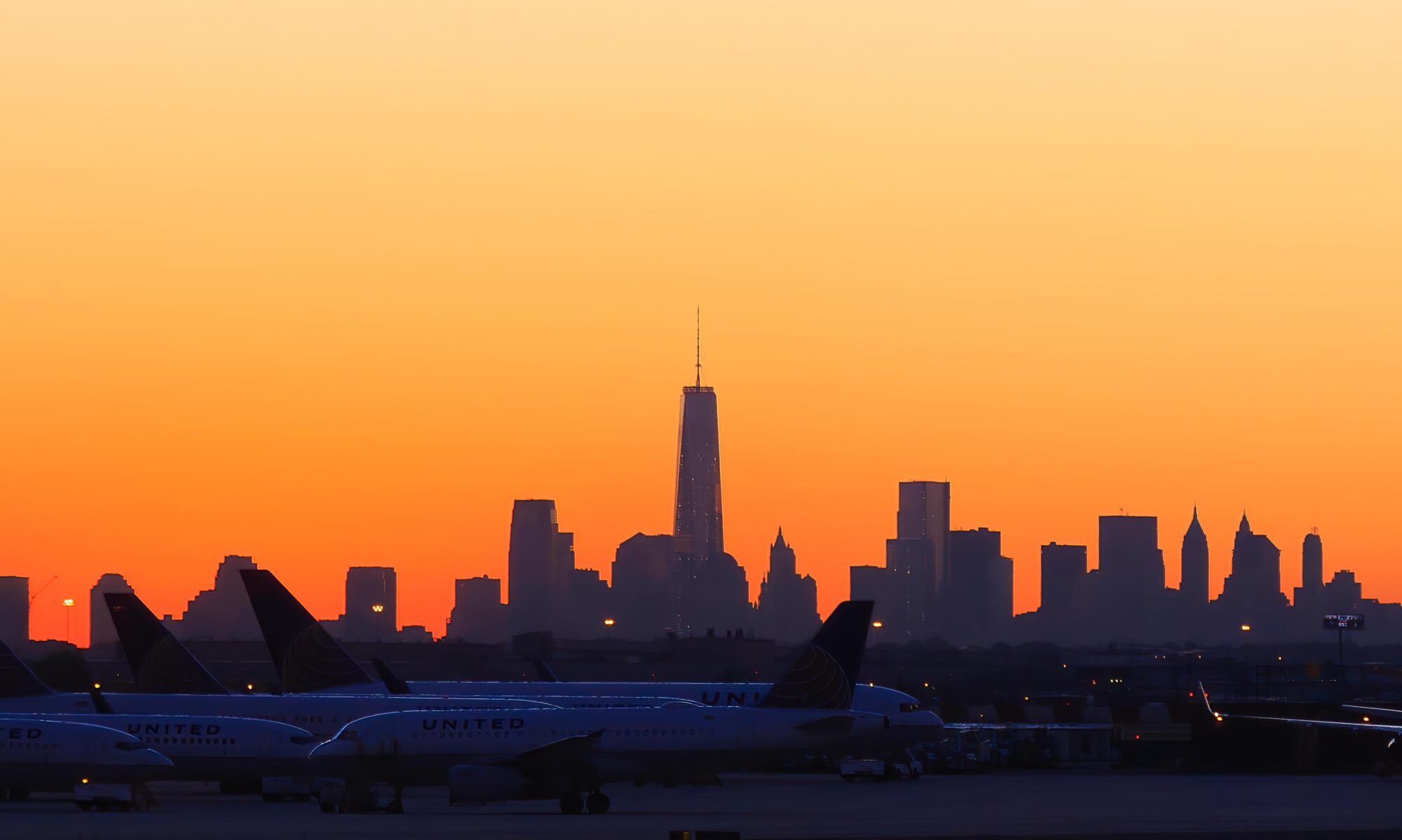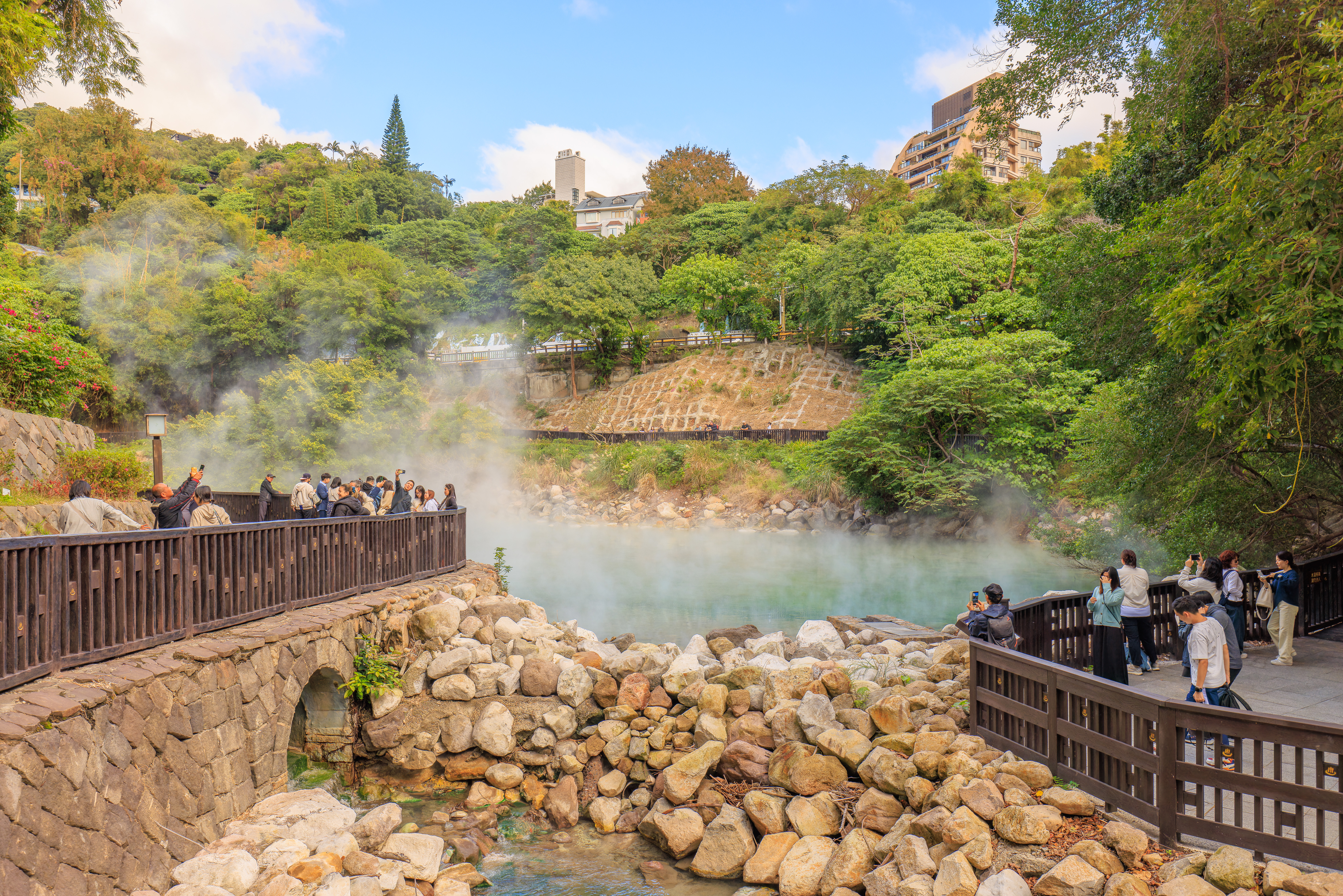Beitou, in northern Taipei City, is known for its hot springs. We visited to take a look at the thermal area and to soak at the Radium Kagaya, a hot spring hotel. We also had some good food throughout the day and ate at Din Tai Fung, possibly Taiwan’s most famous restaurant.
Din Tai Fung
After a light breakfast at the Grand Hyatt, we headed out to Taipei 101 to begin the day. We realized that it was just about opening time for 鼎泰豐 Din Tai Fung when we arrived. We decided to join the queue as the wait time was minimal, much better than the 3 hours one can expect to wait for later in the day!
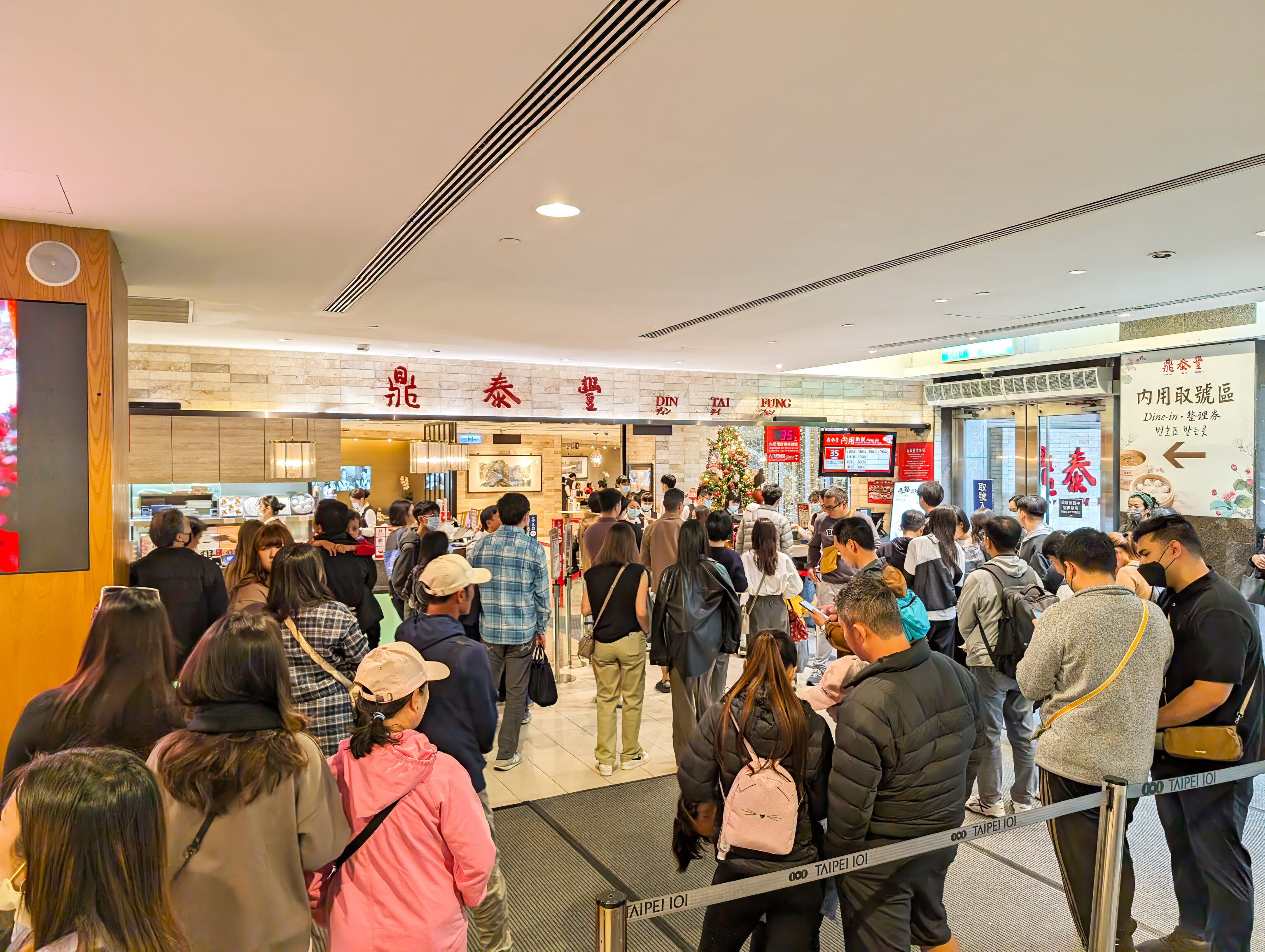
The way the queue works at Din Tai Fung is that you get a number when you join the queue. You then wait until the number is called. The current numbers are displayed on TV screens along with an estimated wait time if you join the queue right now. Here, at 5 minutes before opening time, they are showing a 35 minute wait.
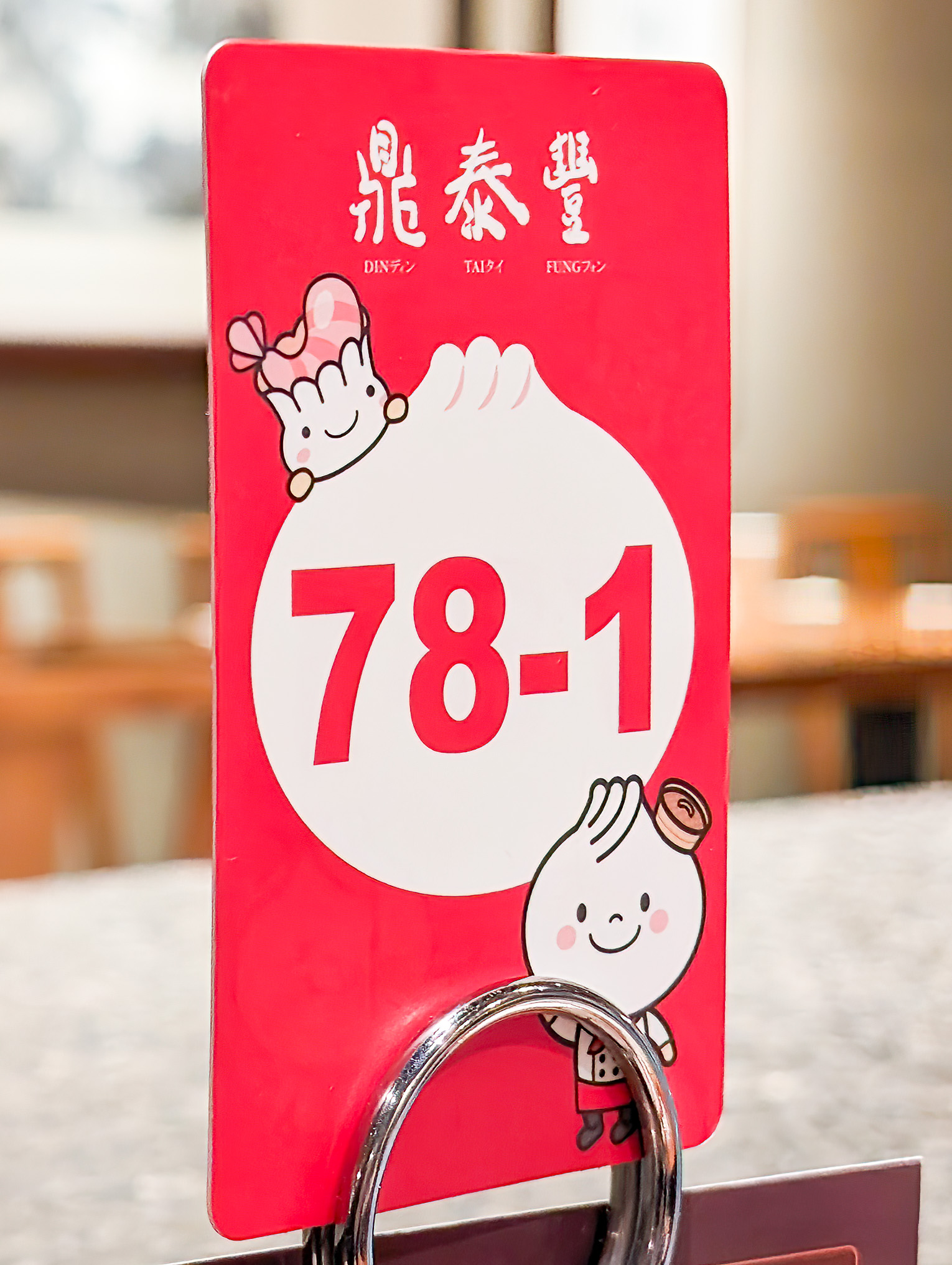
They started seating people a bit before the official opening time at 11am. It takes a bit of time for them to take each group in to their seats. The restaurant is huge inside. We got seated at around 11:10am.
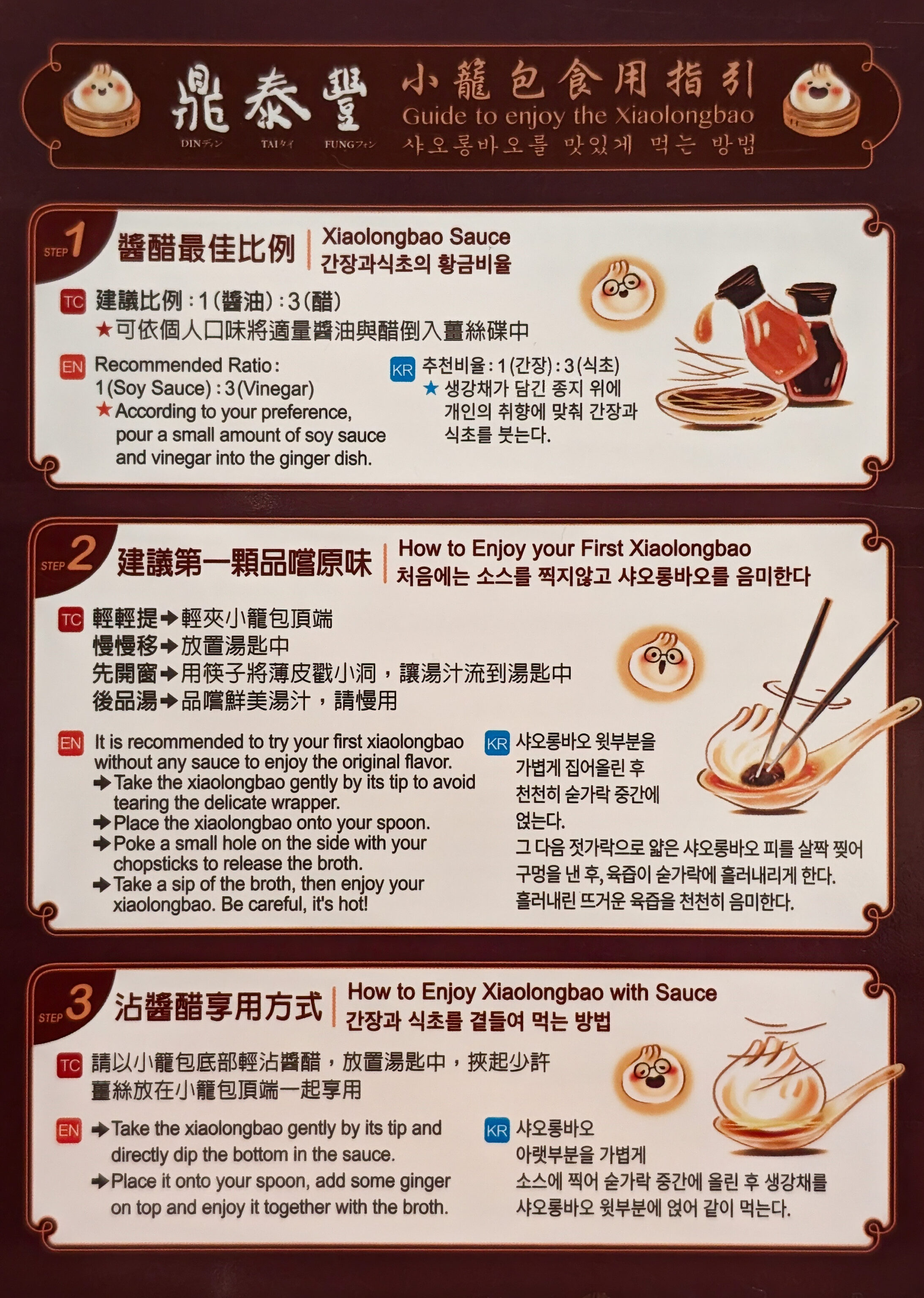
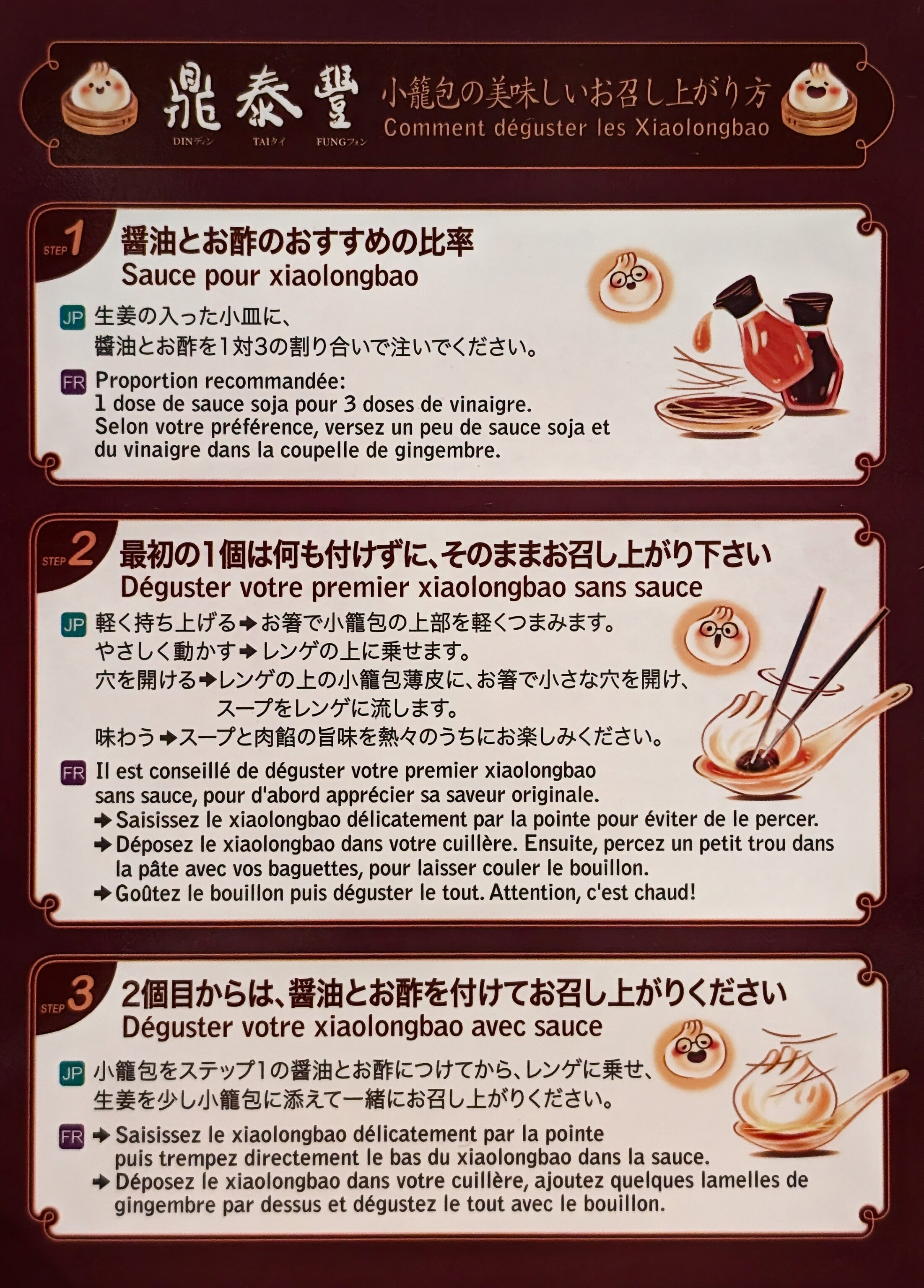
There are instructions in multiple languages for international guests who haven’t had xiao long bao before. The suggested eating method, in step 2, is a bit different from what we usually do, but maybe this way is easier as it minimizes the amount of time that the delicate xiao long bao needs to be handled. The way we usually eat them is to nibble a bit of the wrapper away on the side, but above the soup line, and then suck the soup out.
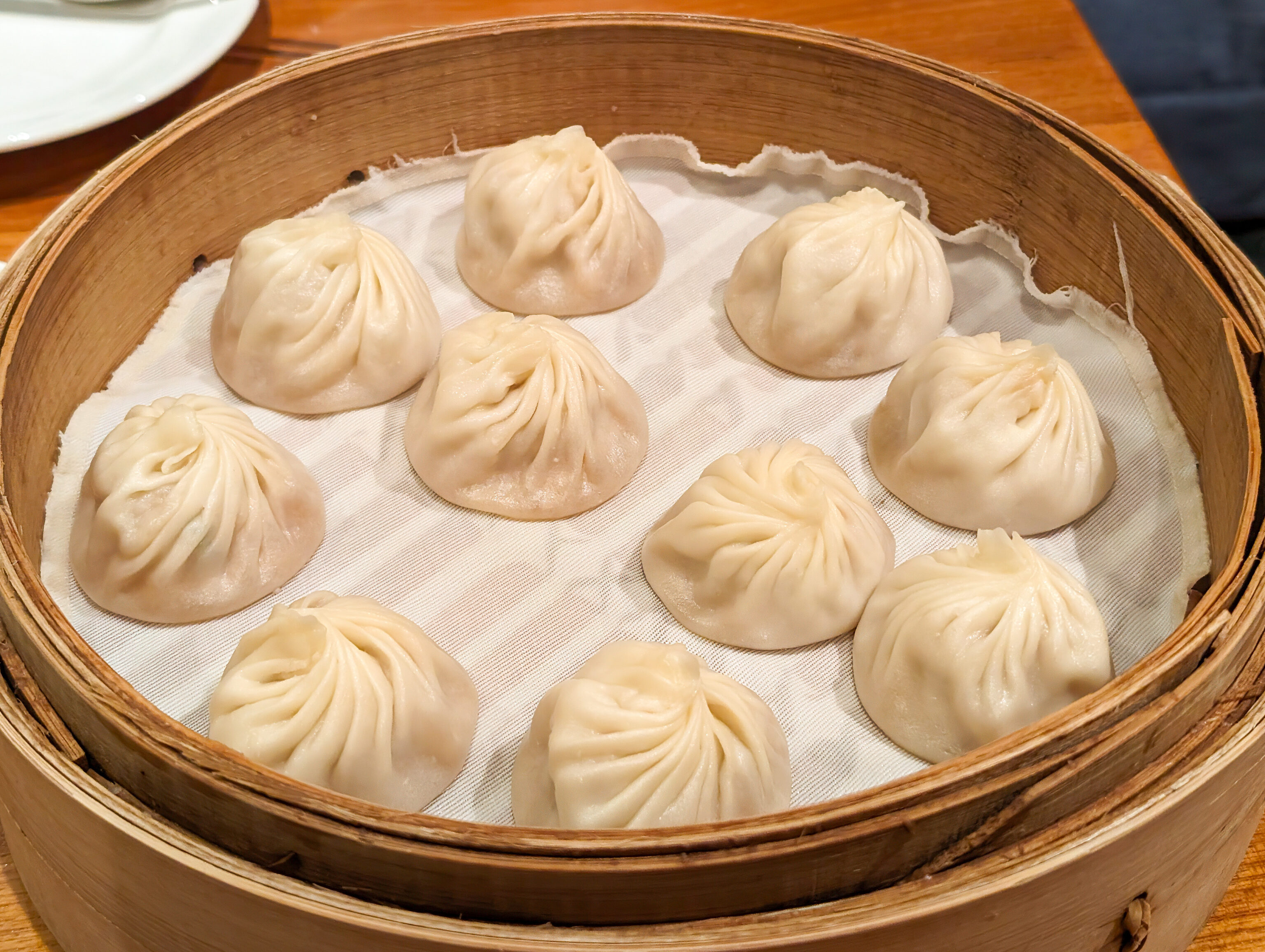
Din Tai Fung actually has a pretty extensive menu. But, they are famous for their xiao long bao so that is what we got! It is definitely a better experience eating them here rather than having them to go. The standard xiao long bao are pork based.
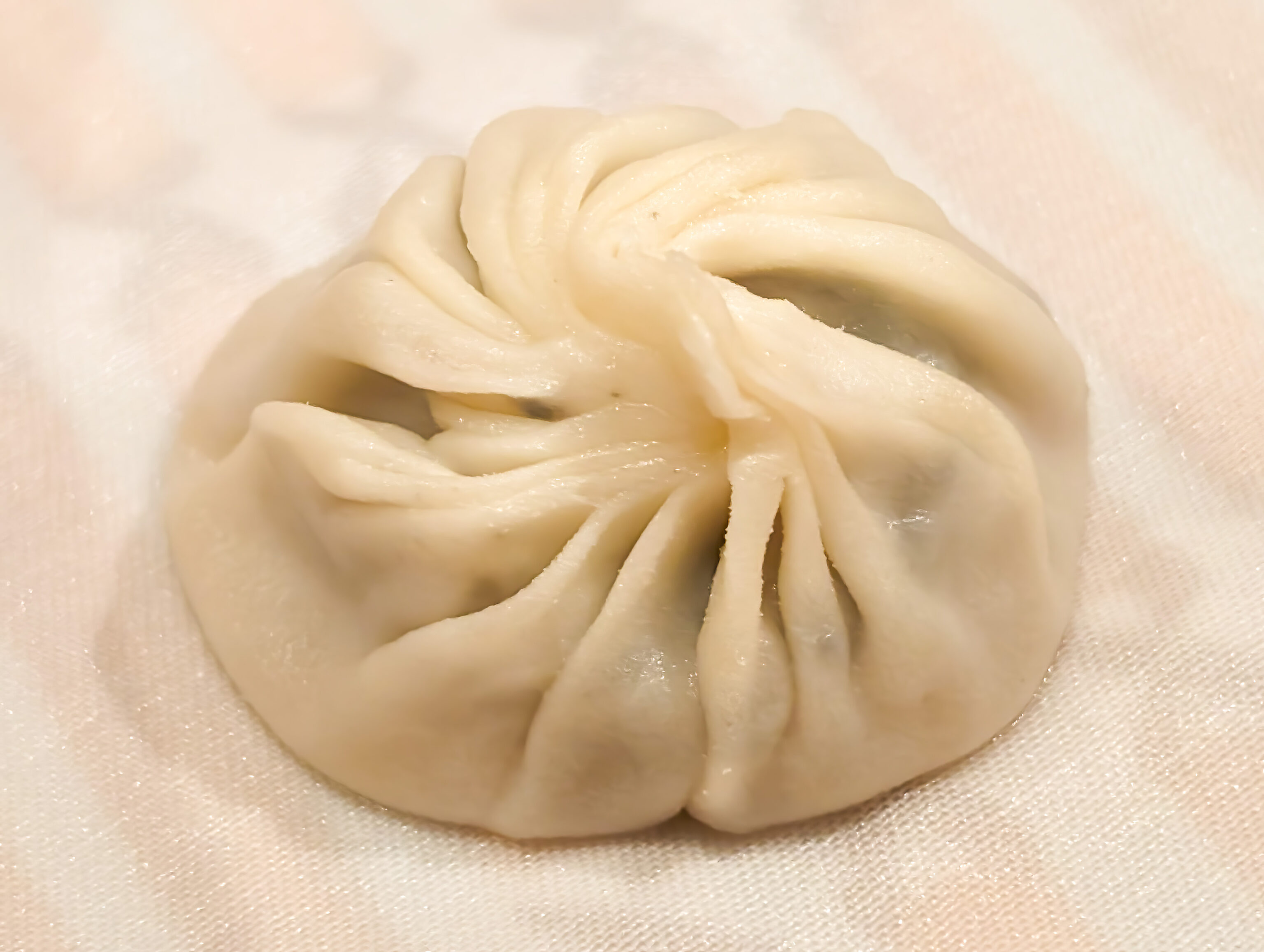
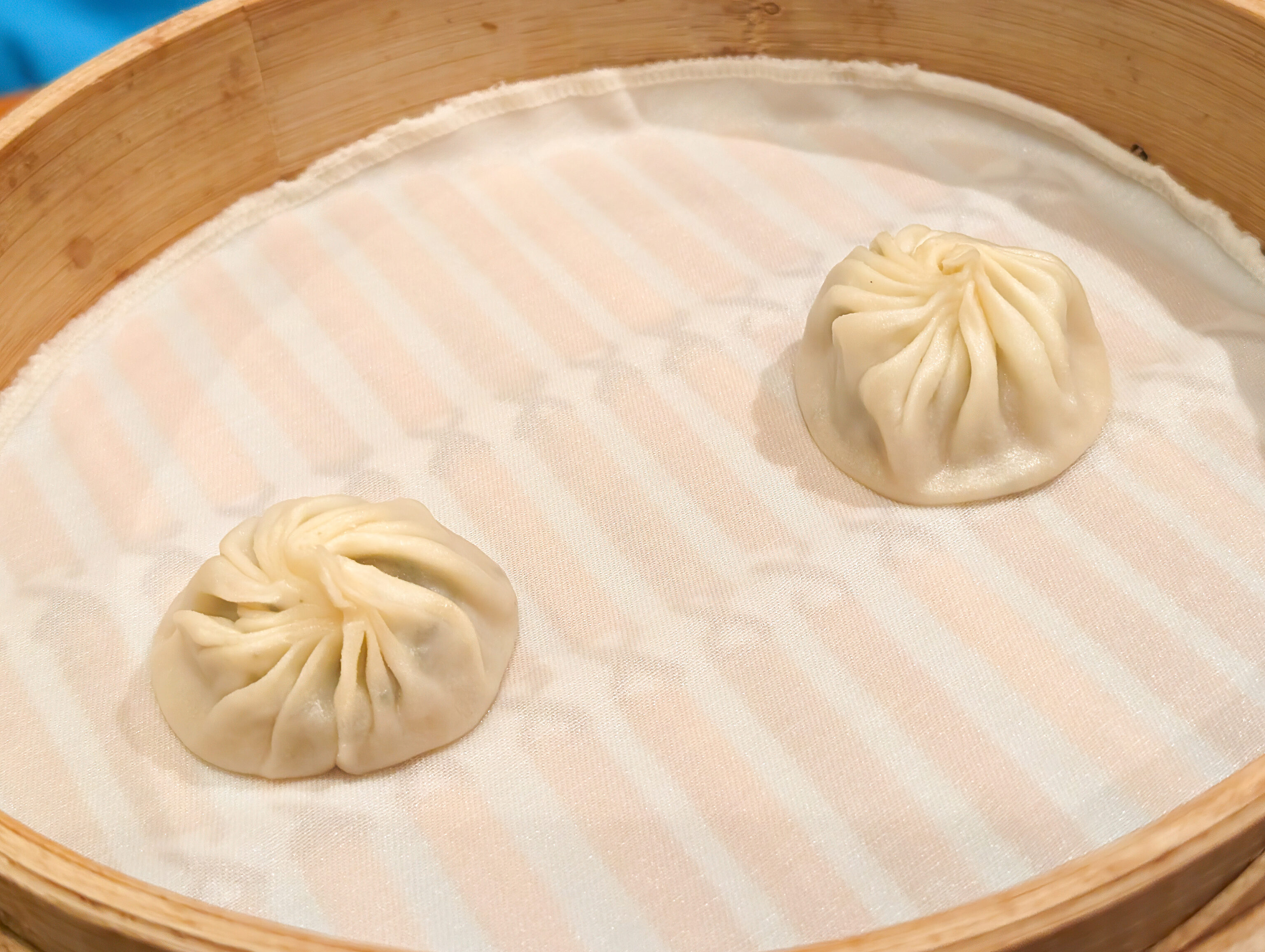
We also got a pair of truffle and pork xiao long bao. They are very good with a strong truffle flavor. They’re also much more expensive than the standard pork ones. But, definitely worth trying!
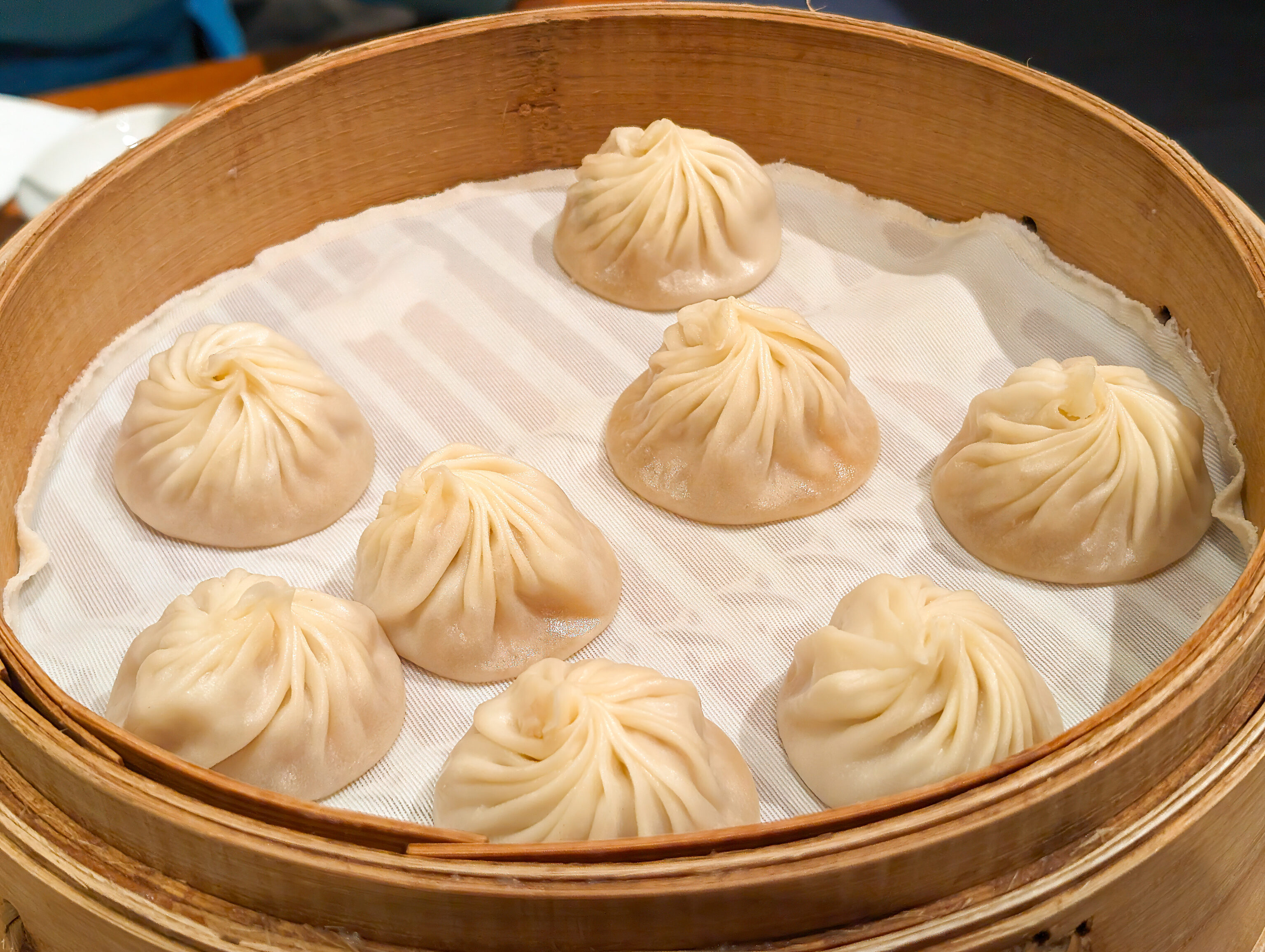
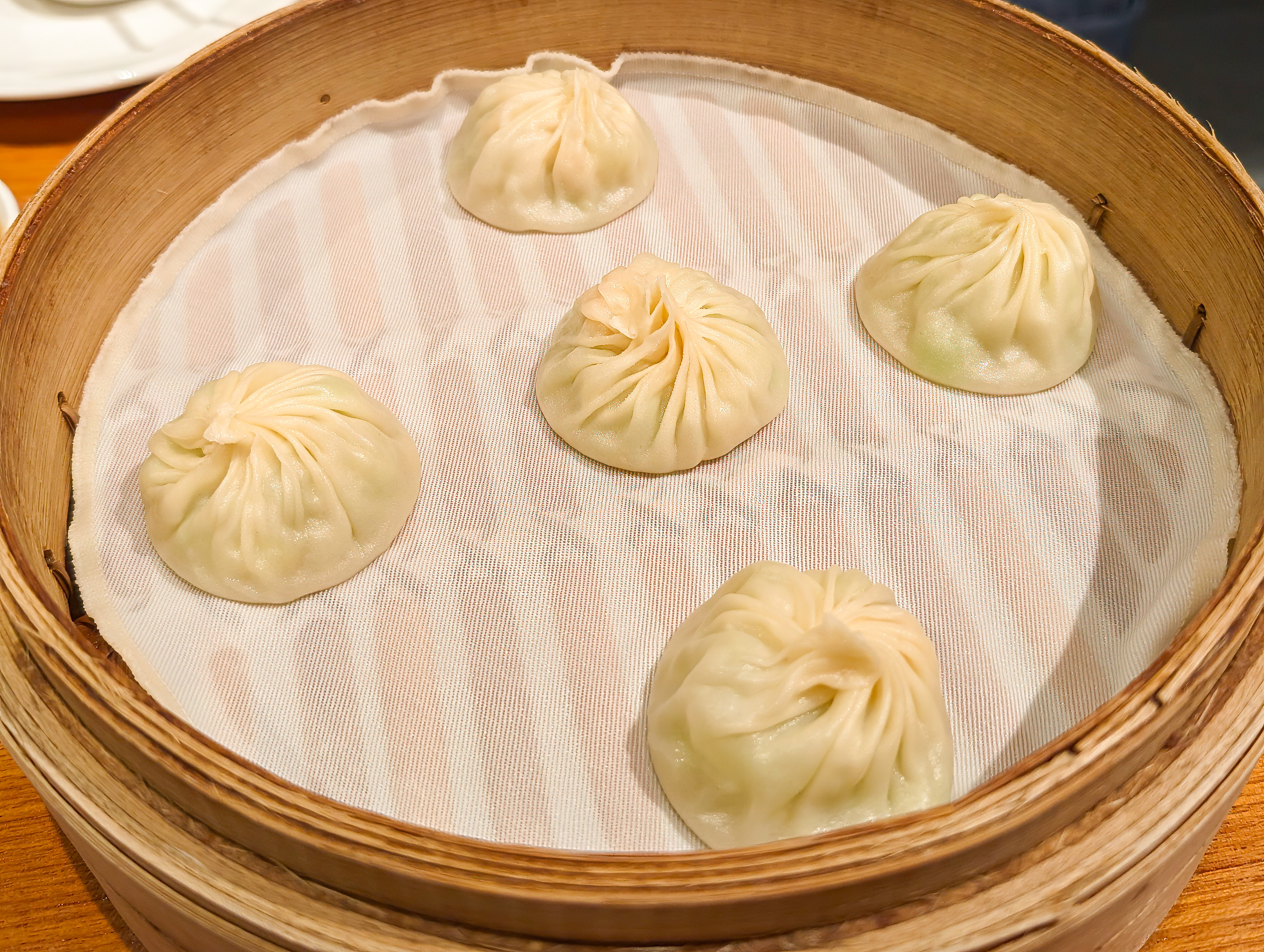
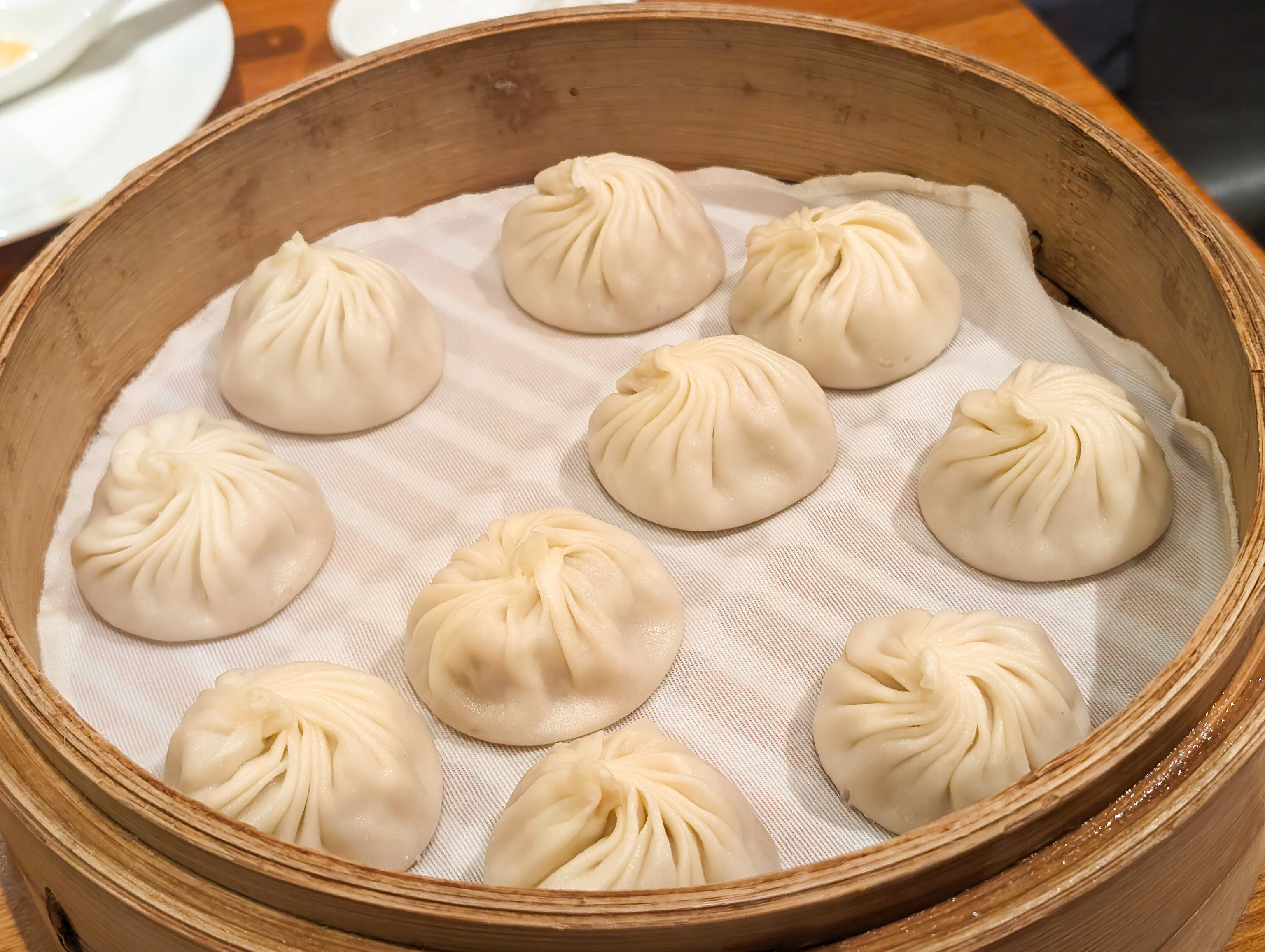
We tried a few varieties but the second best is definitely the standard pork flavor, though of course taste depends completely on personal preferences.
Din Tai Fung is extremely consistent in their preparation. We didn’t have a single xiao long bao break. Though, they have considerably less soup inside compared to our favorite in the US, Nan Xiang from Flushing, NY. Perhaps a good comparison would be that Din Tai Fung’s is the superior product in terms of consistency and quality but if I were Marie Kondo, I might say that I get more joy out of Nan Xiang’s ridiculously soupy yet inconsistent and not as refined product.
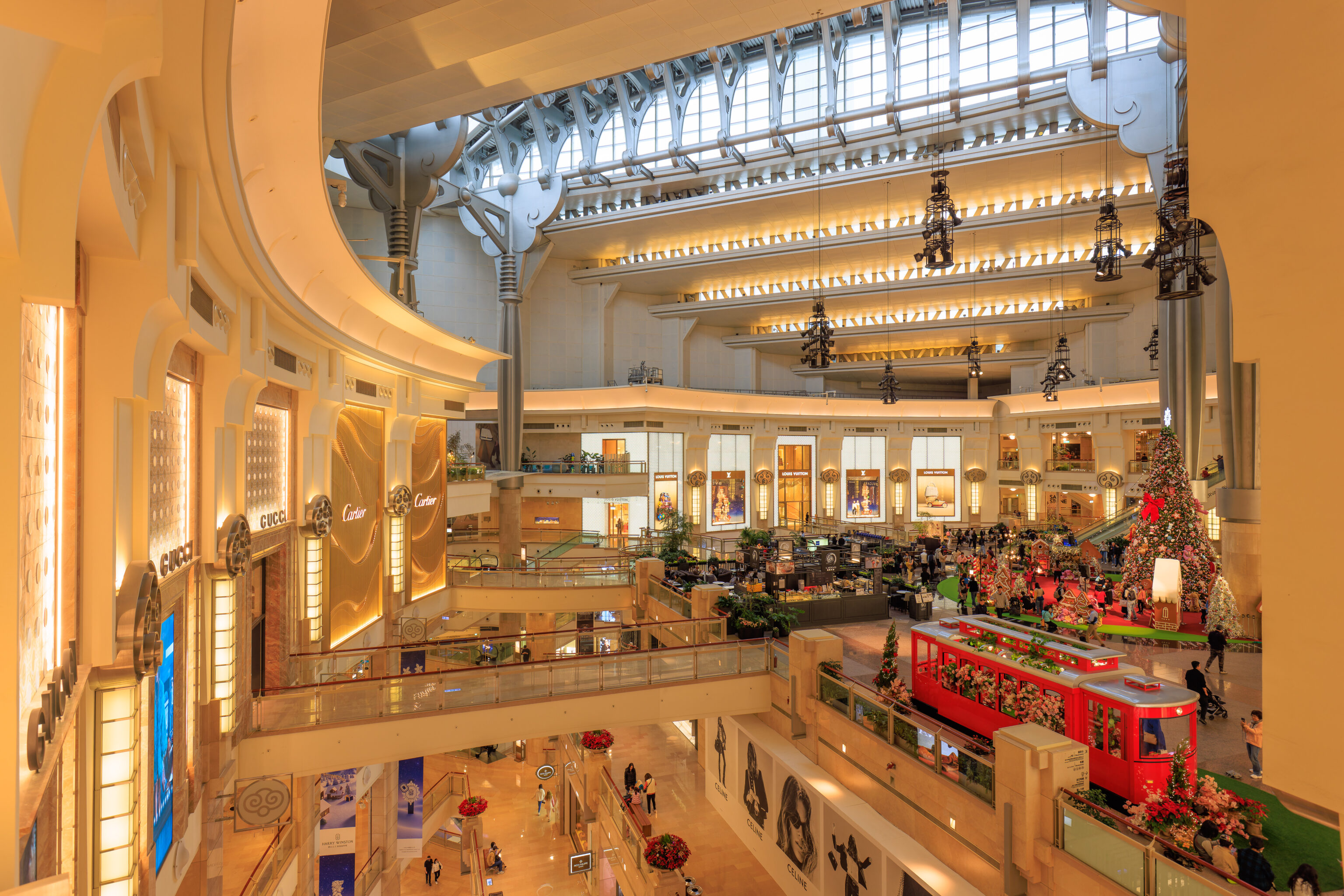
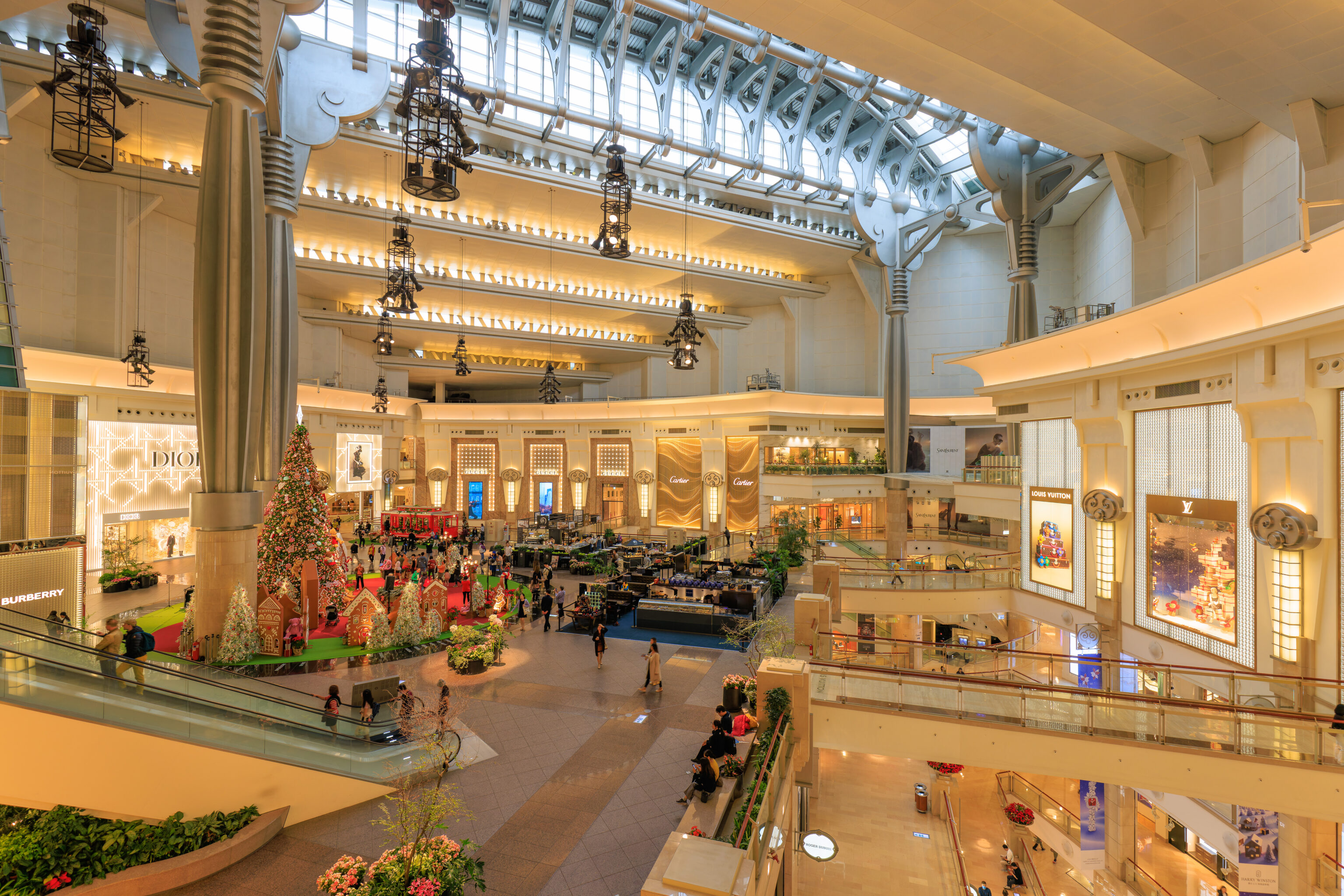
After lunch, we walked around the Taipei 101 Mall a bit. Most of the stores above the food court are very high end. While it was interesting just to walk around, there wasn’t really any store that we wanted to go into.
Beitou Hot Springs
From Taipei 101, we took the MRT to Beitou. It is 19 stops away on the same line with the trip taking about 35 minutes. After reaching 北投 Beitou, we transferred to the short one stop MRT line that goes to 新北投 Xinbeitou (New Beitou).
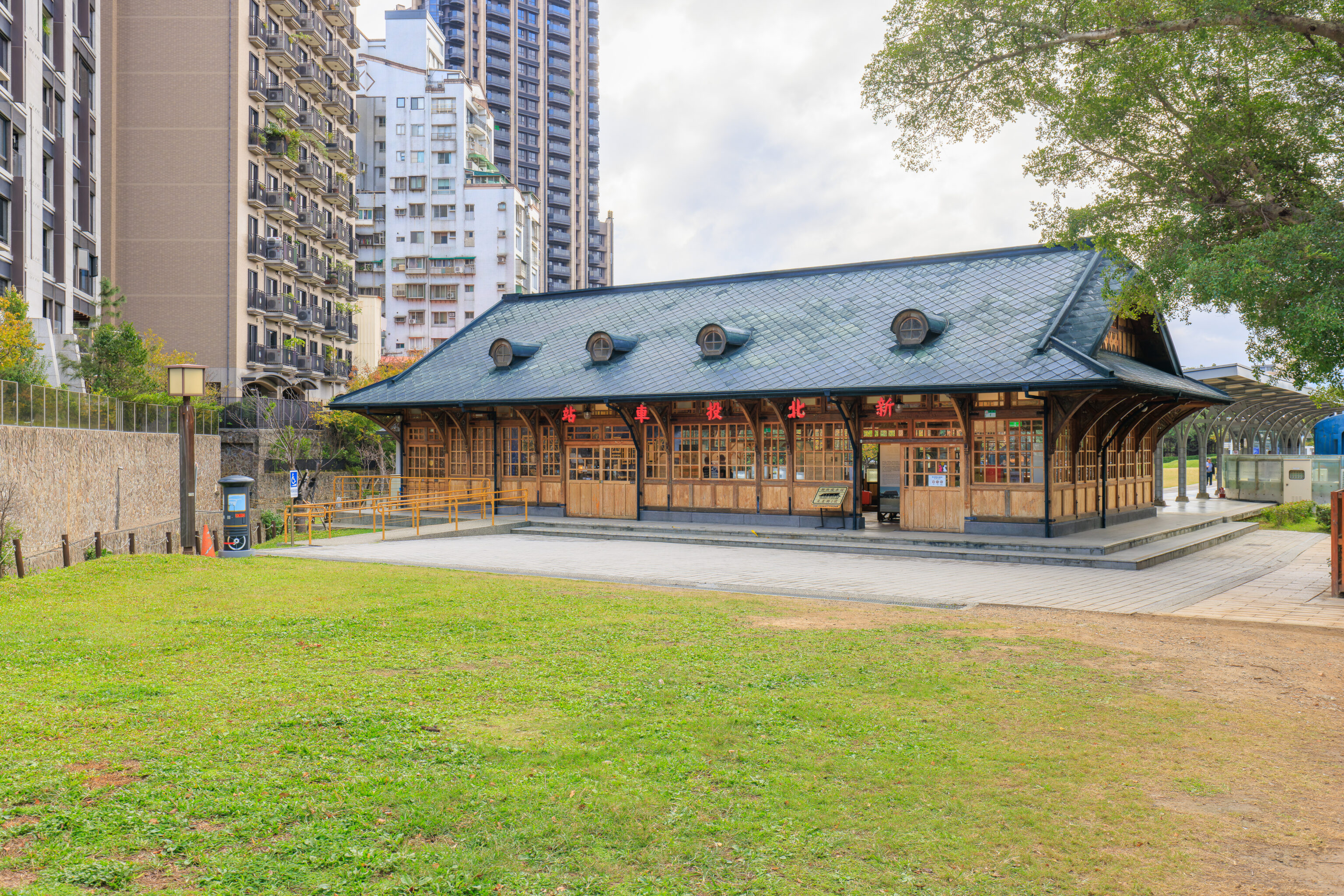
After arriving at Xinbeitou, we crossed the street to check out the historic 新北投車站 Xinbeitou Station. This station dates from the Japanese colonial era and was built to provide easier access to this hot spring region1.
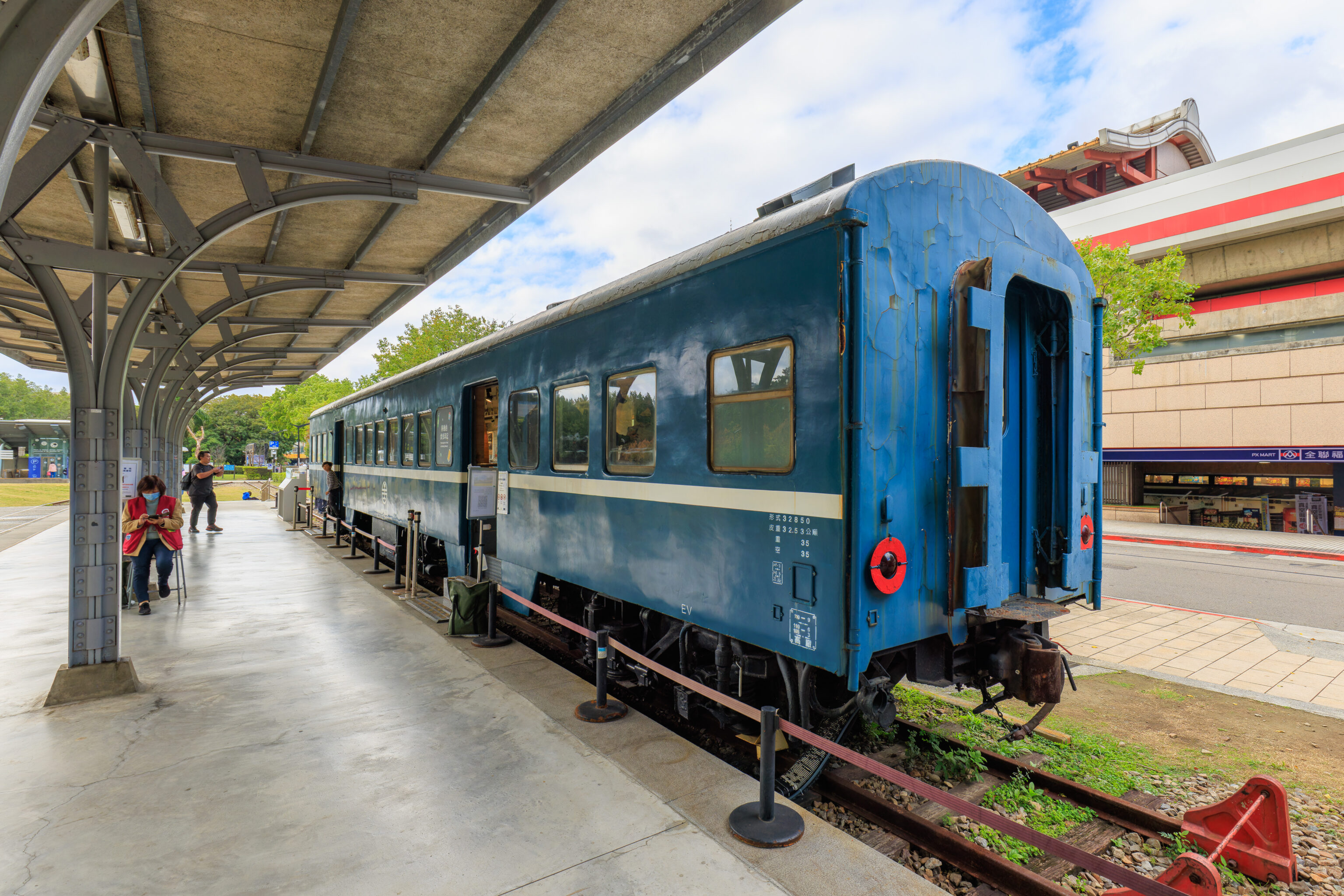
There is an old passenger carriage on the platform next to the station.
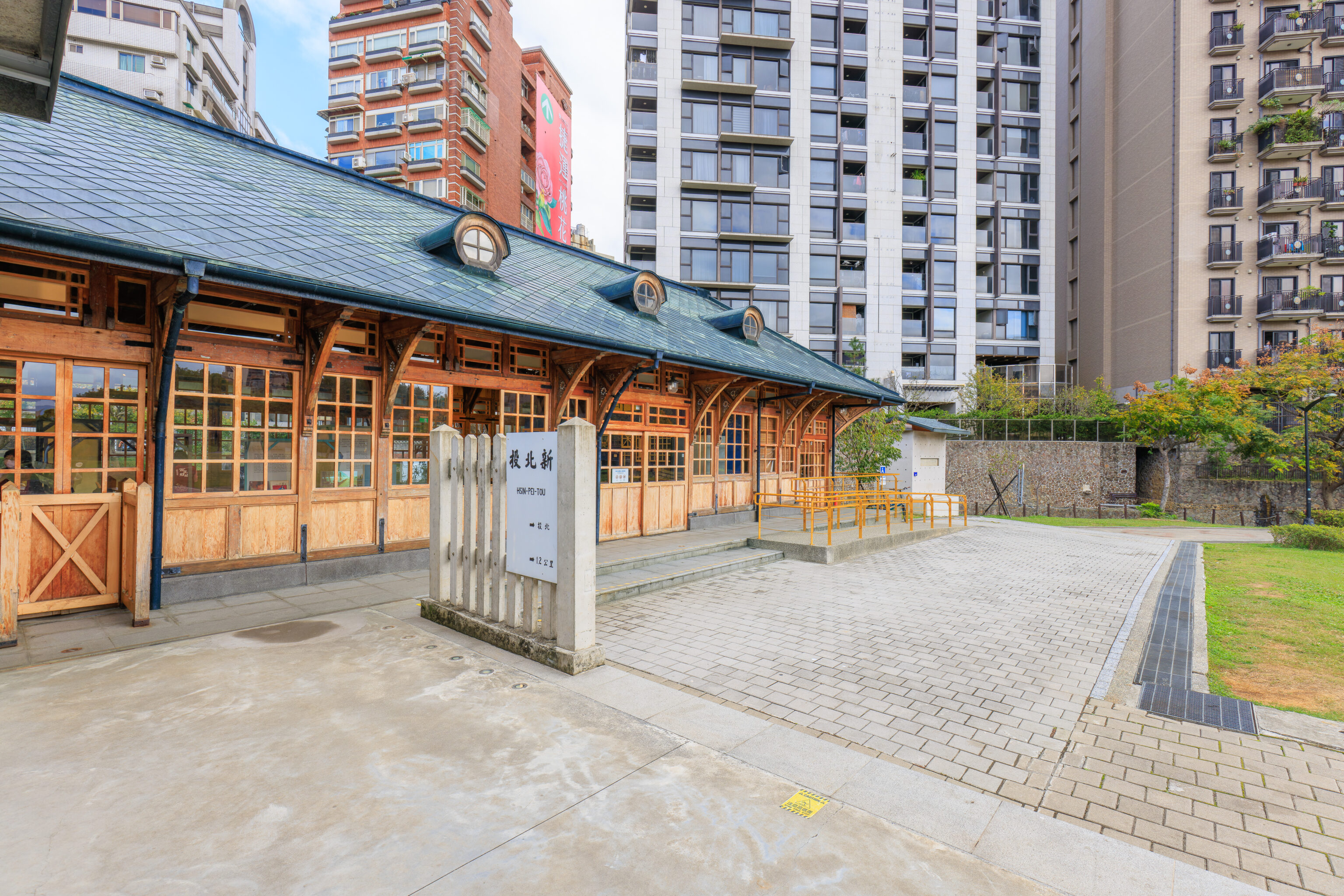
The historic station building and the passenger carriage serve as museum spaces.
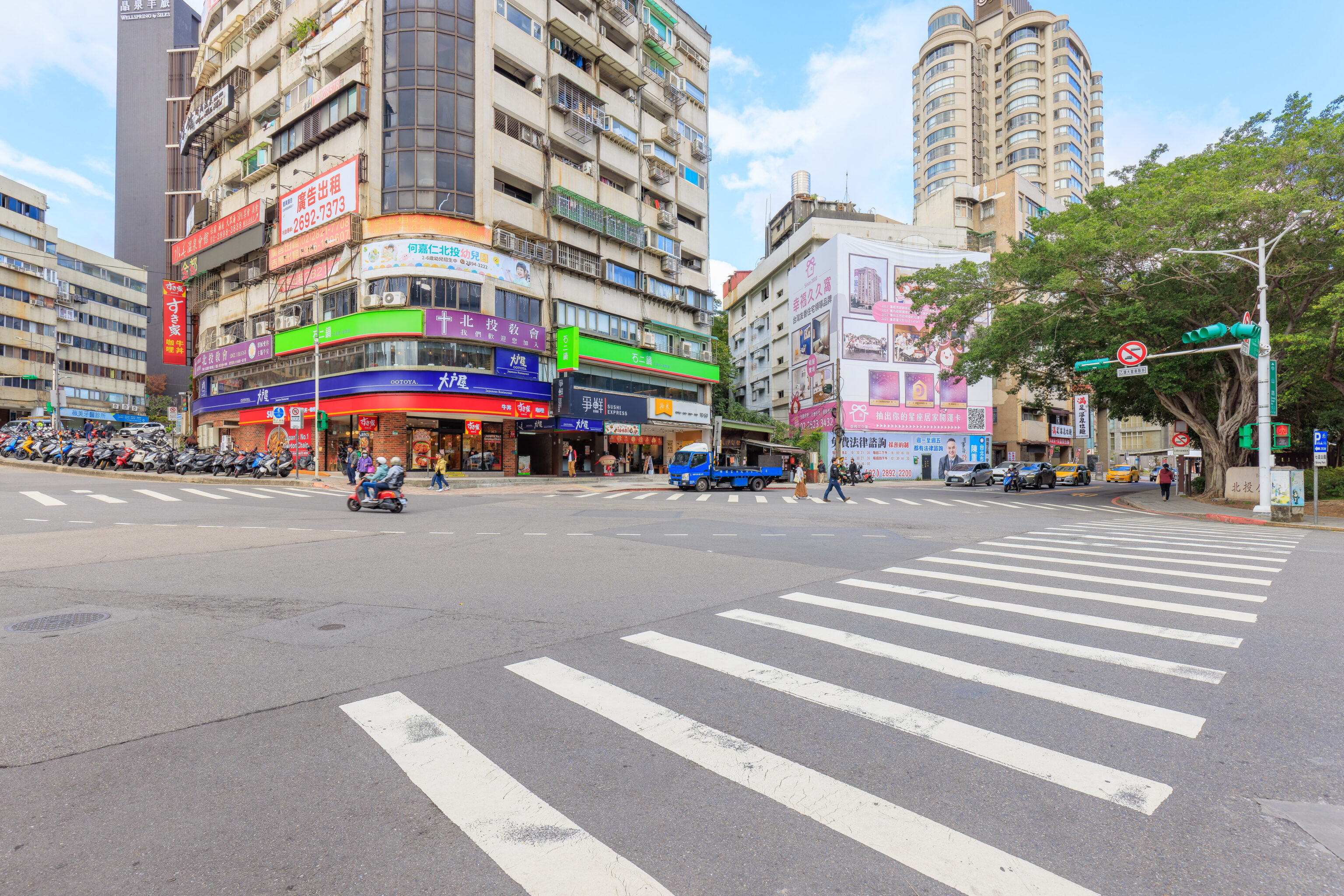
After enjoying a hot spring hand soaking station just to the east of the historic train station, we started walking to the east to go to the hot spring area. Beitou Park, which contains a thermal area, begins beyond this intersection on the right. A sign by the entrance provides some history:
The development of the Beitou area started with You Yorghe's sulfur mining operation in the Qing Dynasty, followed by the large-scale construction of public hot springs, eventually reaching its peak with the construction of the New Beitou Train Station. Other notable historic buildings were also constructed during this period, including Acaianatha Temple, Puji Temple, the old dormitory of the Bank of Taiwan, Yinsongge Inn, and the Beitou Public Baths. Modern additions to the architecture of the city include the Ketagalan Culture Center and the Beitou Branch of the Taipei Public Library, which was awarded the Best Green Building Design. This plaza, located at the entrance of Beitou Park, area was an extension of the beitou Shinto Shrine during the Japanese colonial period. Locals viewed the surrounding area as sacred ground, and as such the land saw little development. At the time, activities such as fire drills and Shinto celebrations were held here. Also, a newspaper office used to sponsor a local Summer Gathering event here.
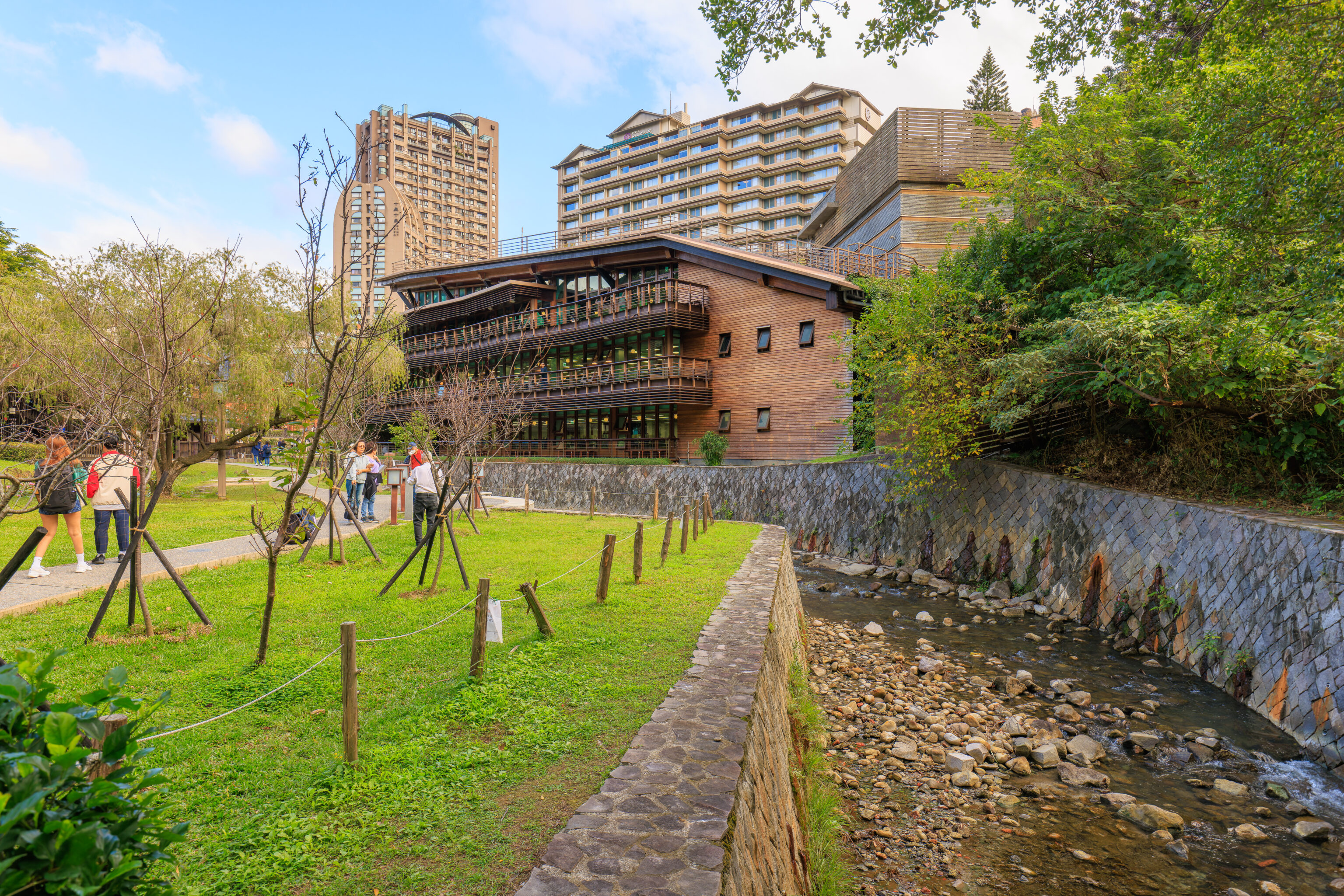
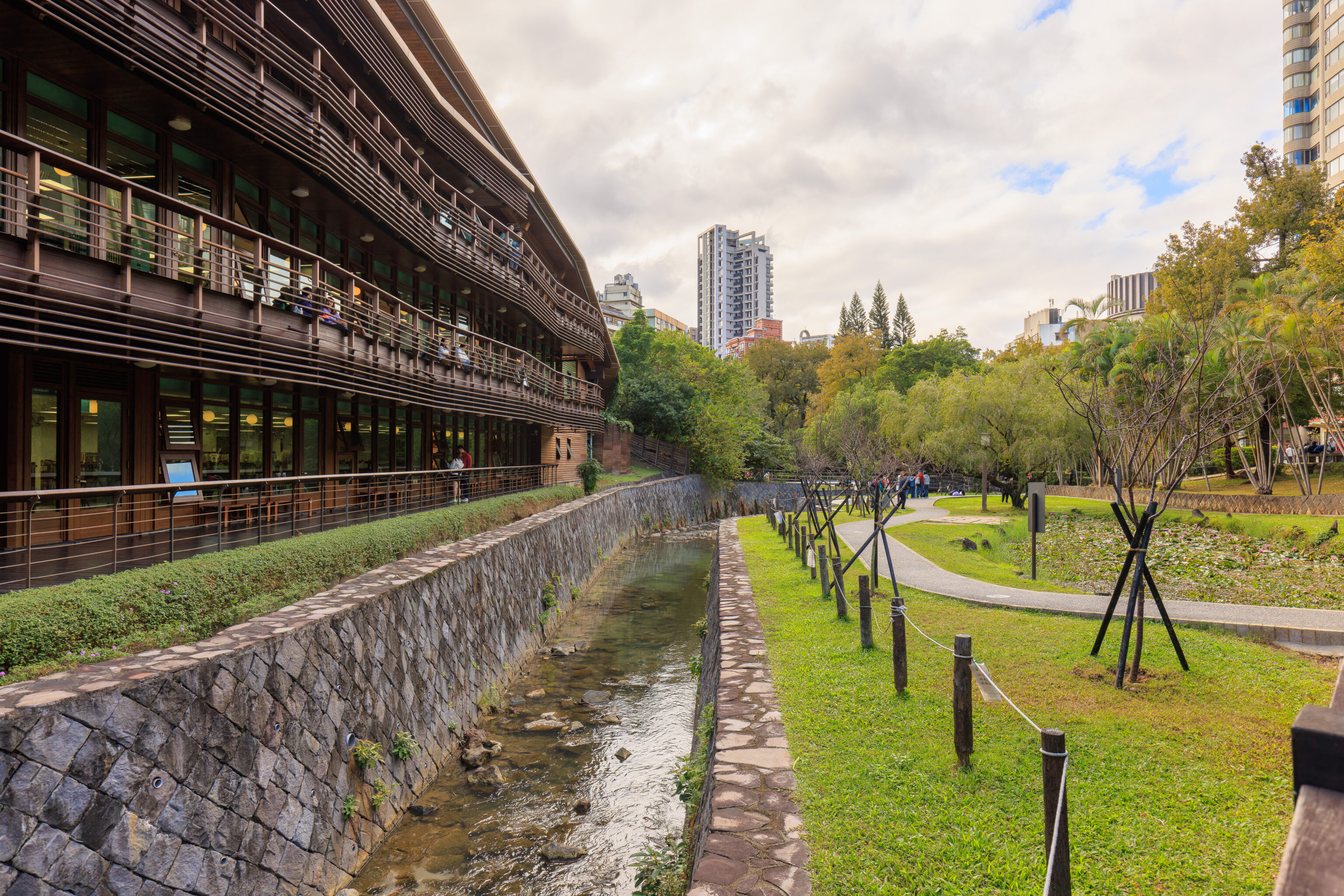
This wood clad building is the public library. The small river next to it flows down from the thermal area to the east.
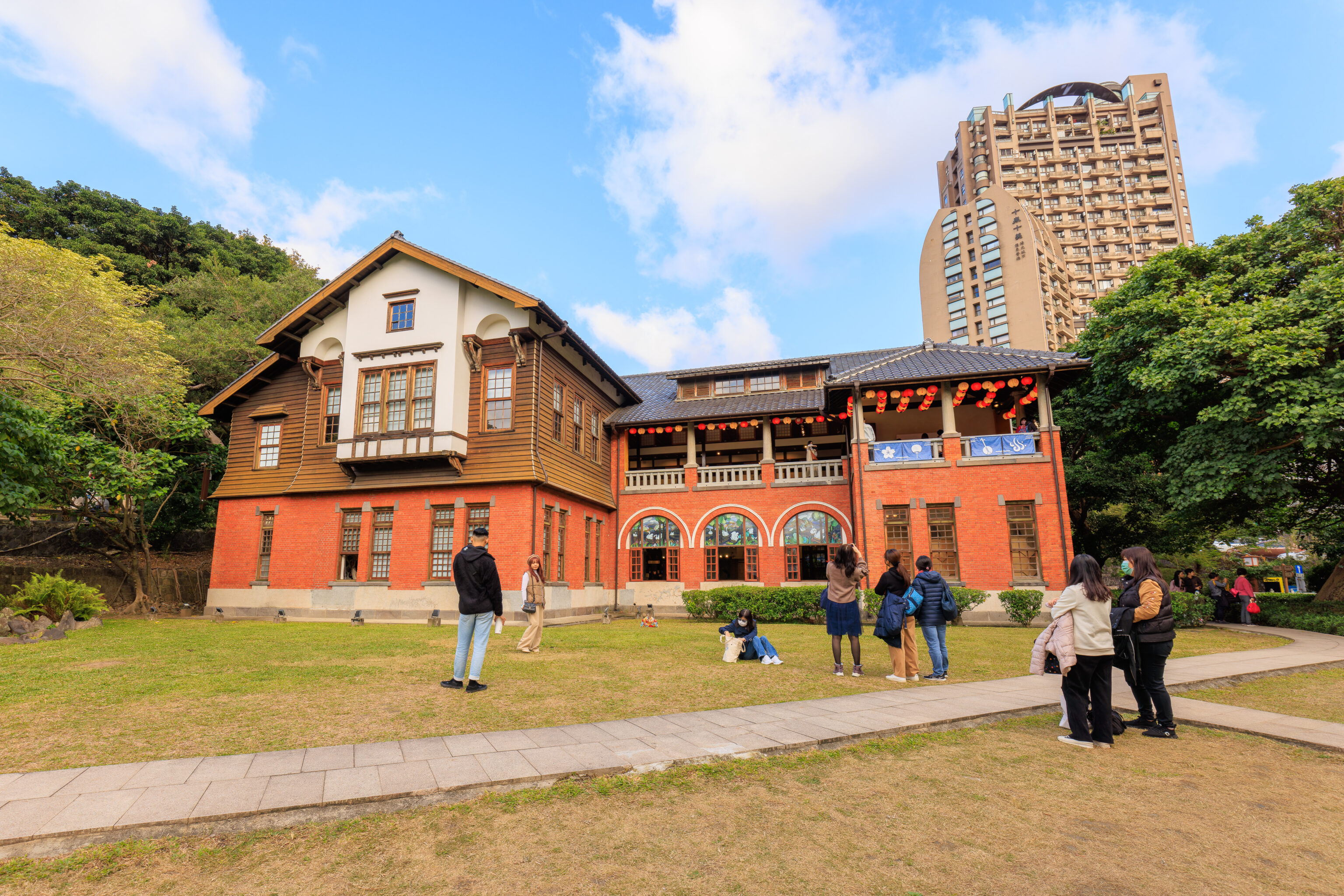
This western style building currently houses the 北投溫泉博物館 Beitou Hot Spring Museum. It seemed to be a somewhat popular photo spot. The building is a former public bathhouse from the Japanese era2.
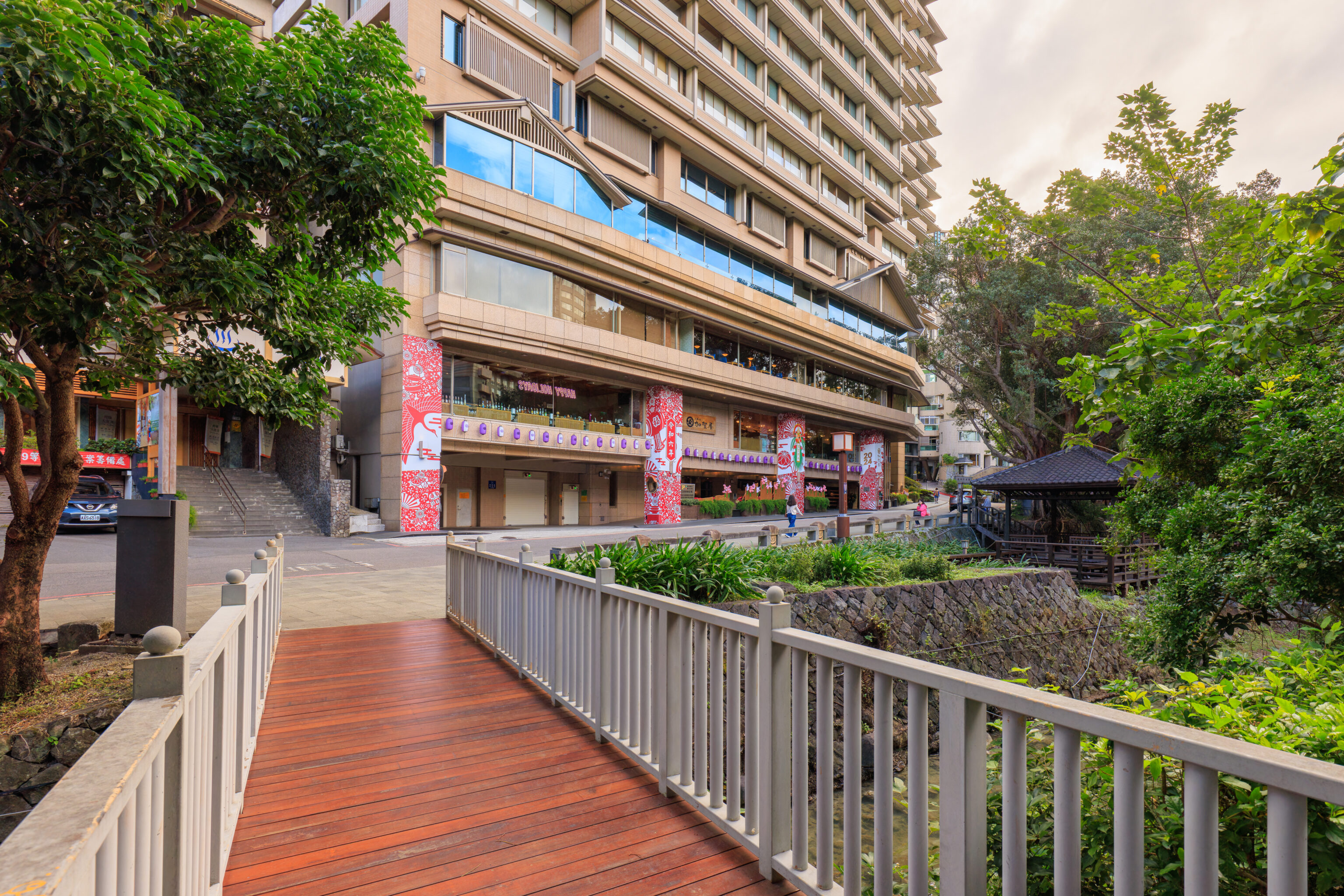
The 北投加賀屋 Radium Kagaya hot spring hotel is just to the south of the museum. We have a reservation for a private hot spring room at 6:15pm. Still plenty of time before then!
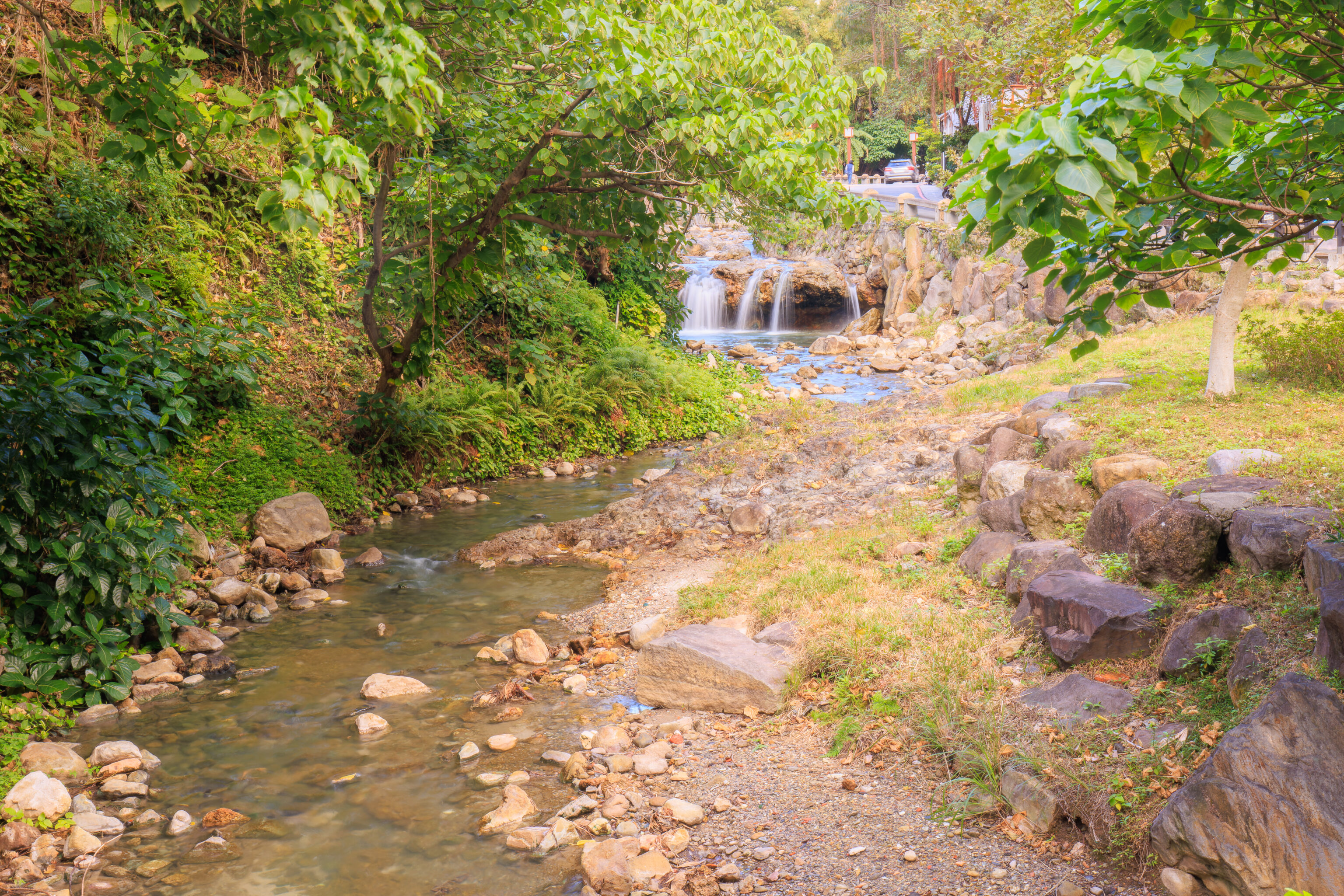
There was a tiny waterfall in the river just to the east.
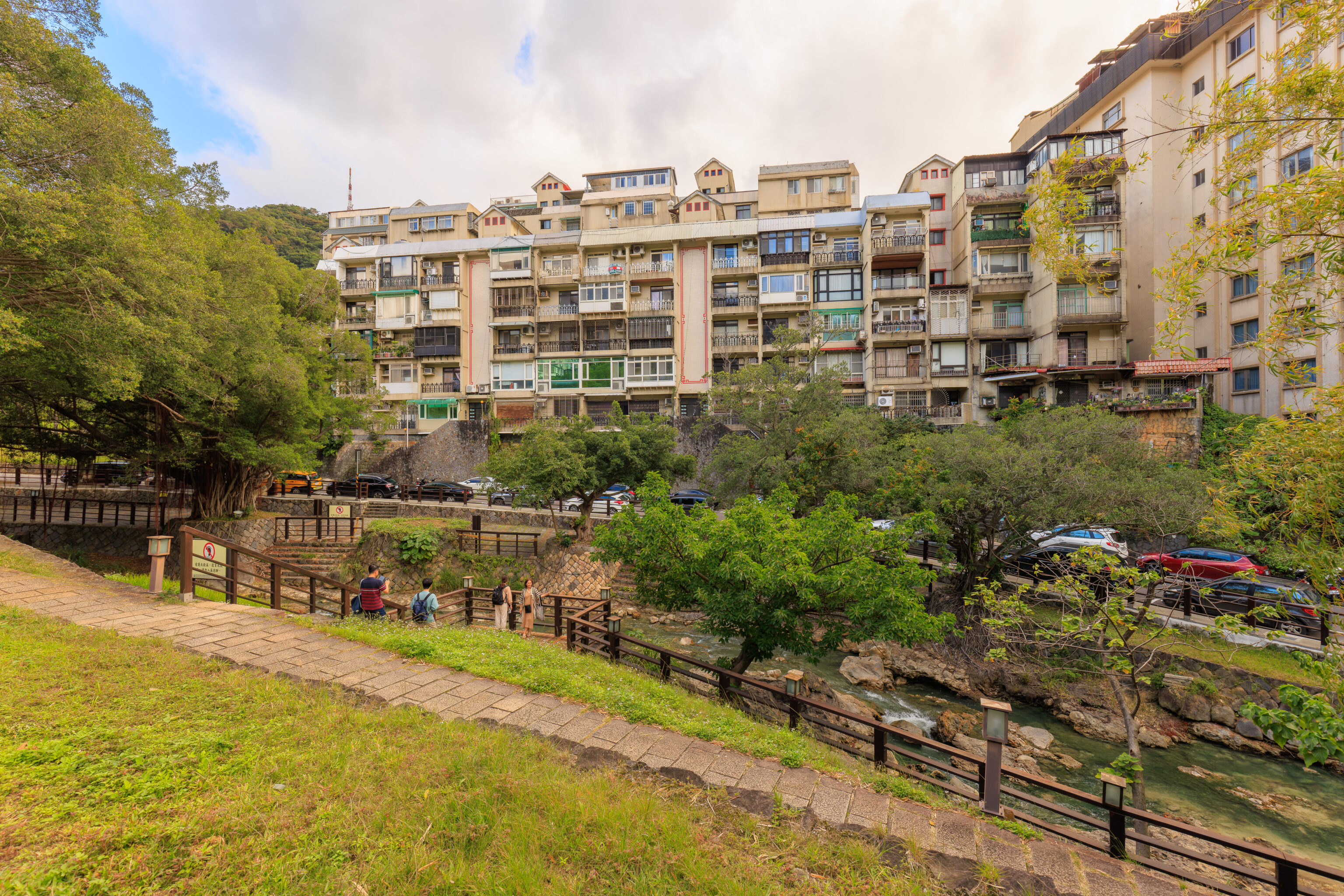
Other than the various hot spring businesses here, this is mainly a residential area.
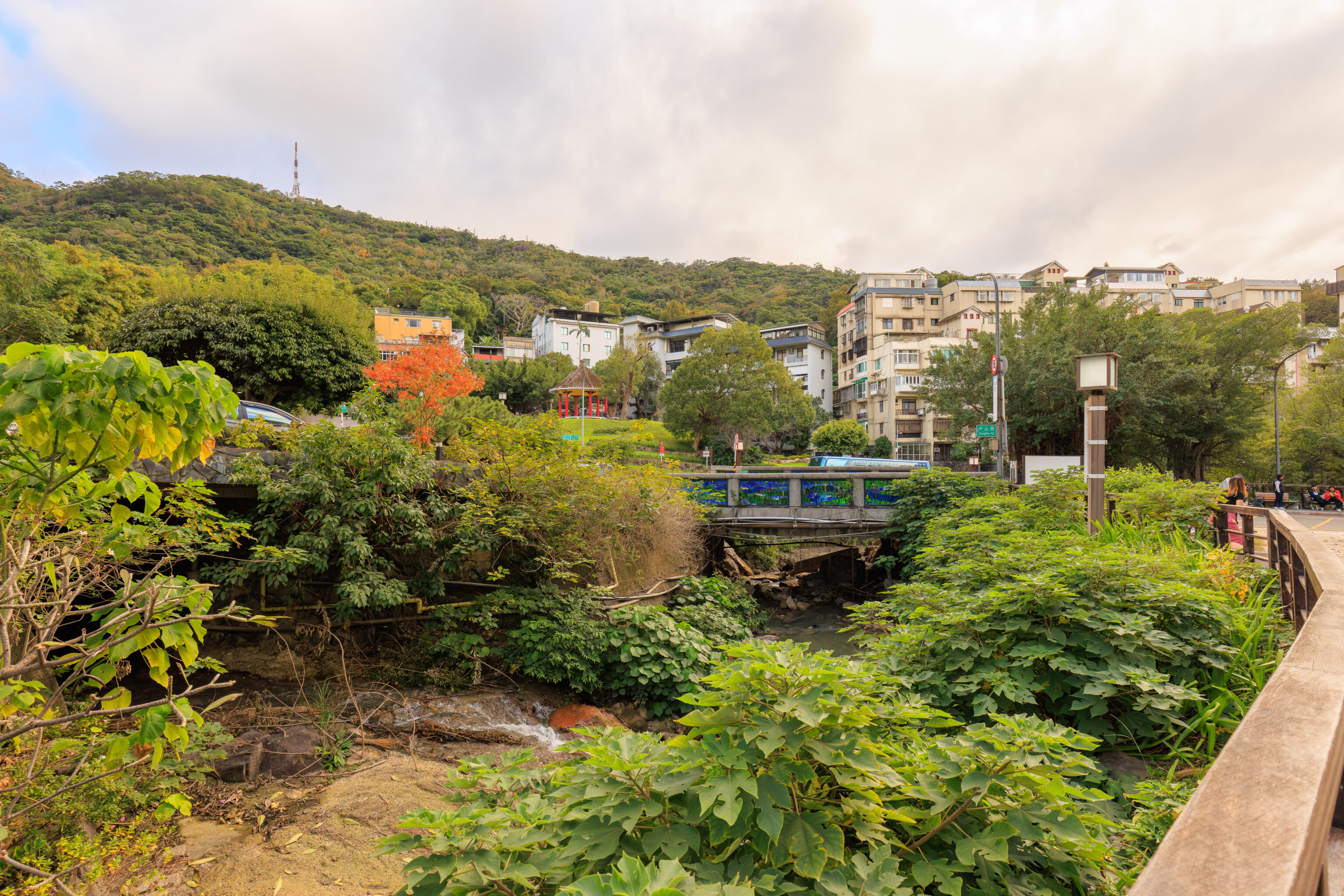
Almost at the thermal area!
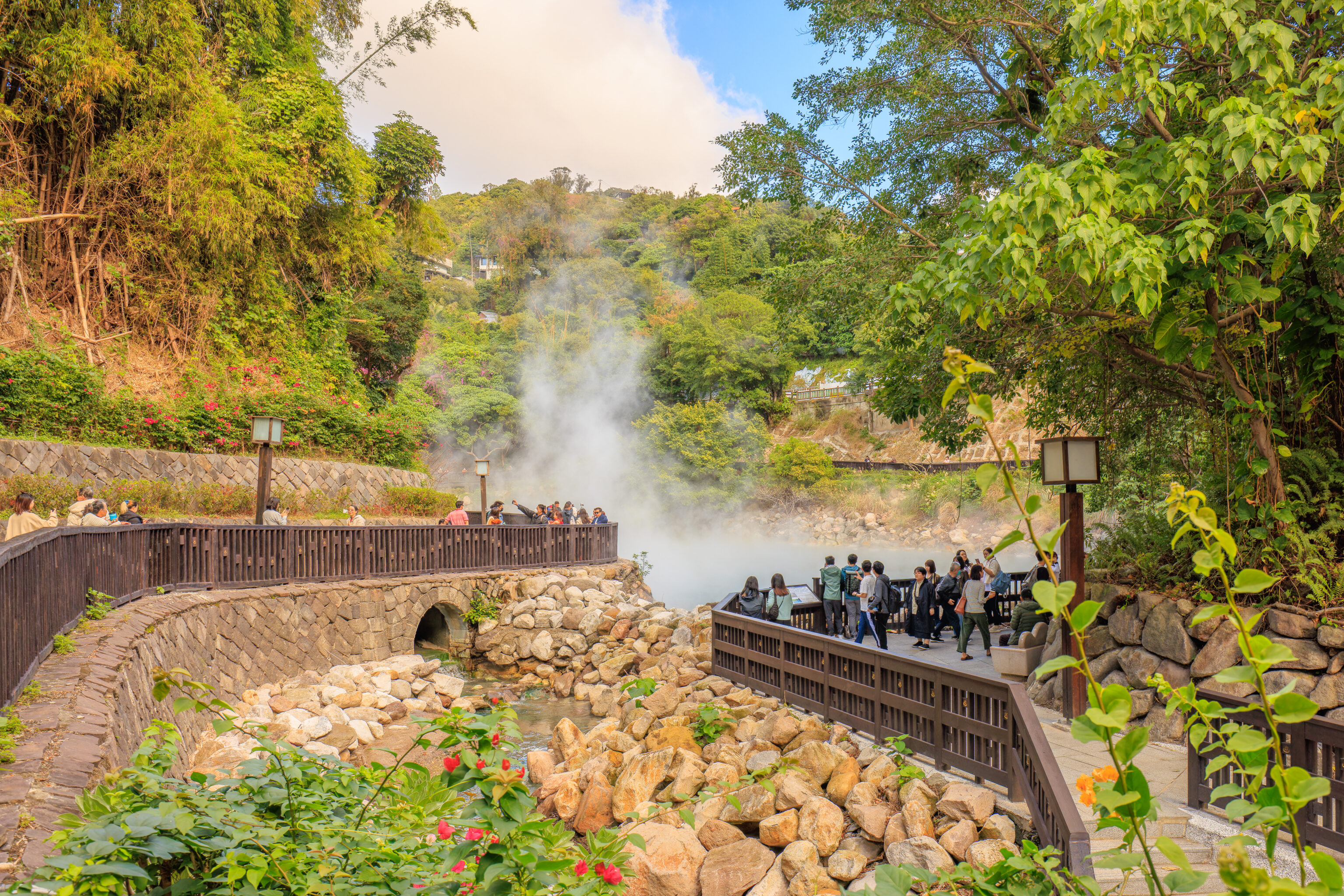
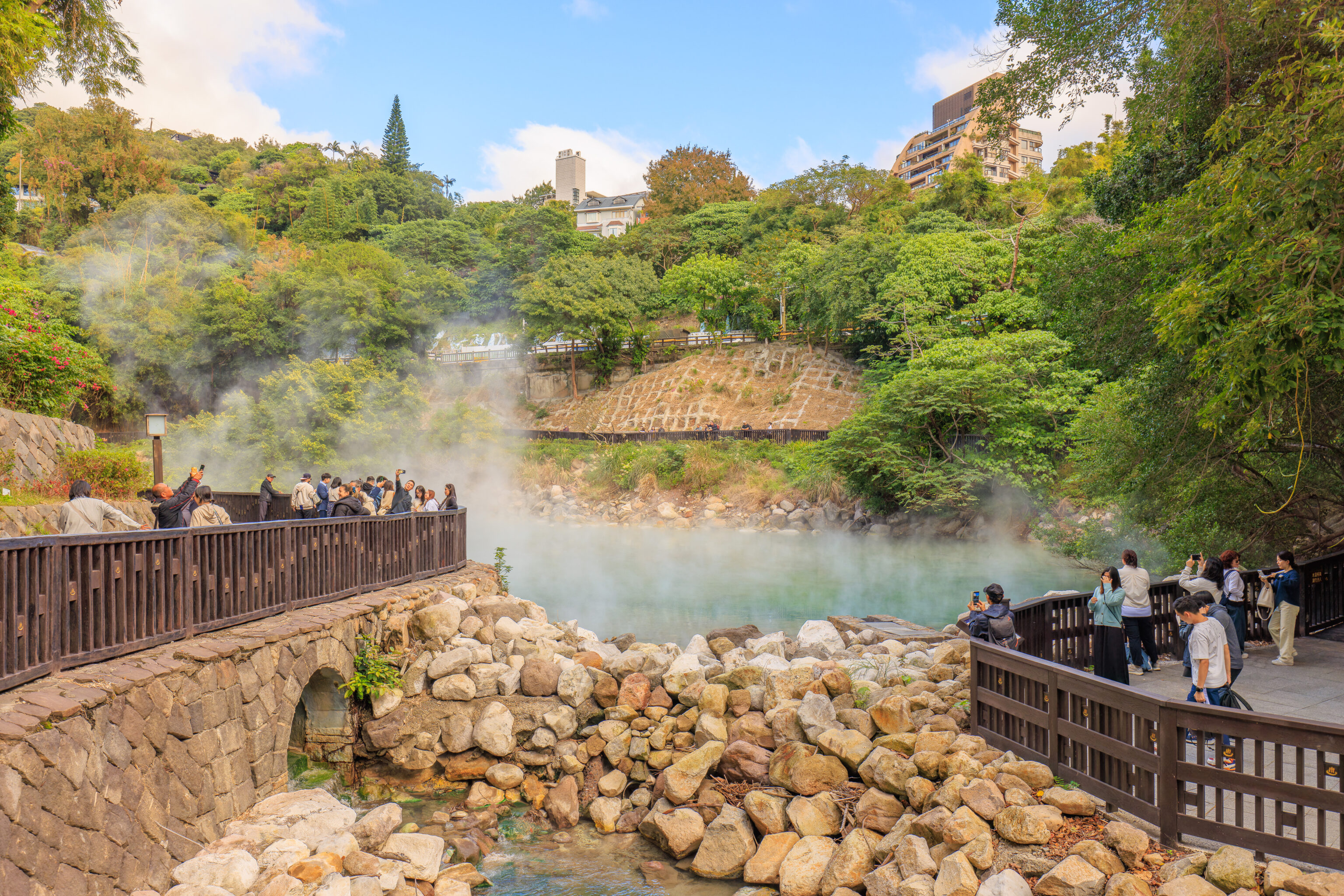
Soon, we saw a large thermal lake in front of us!
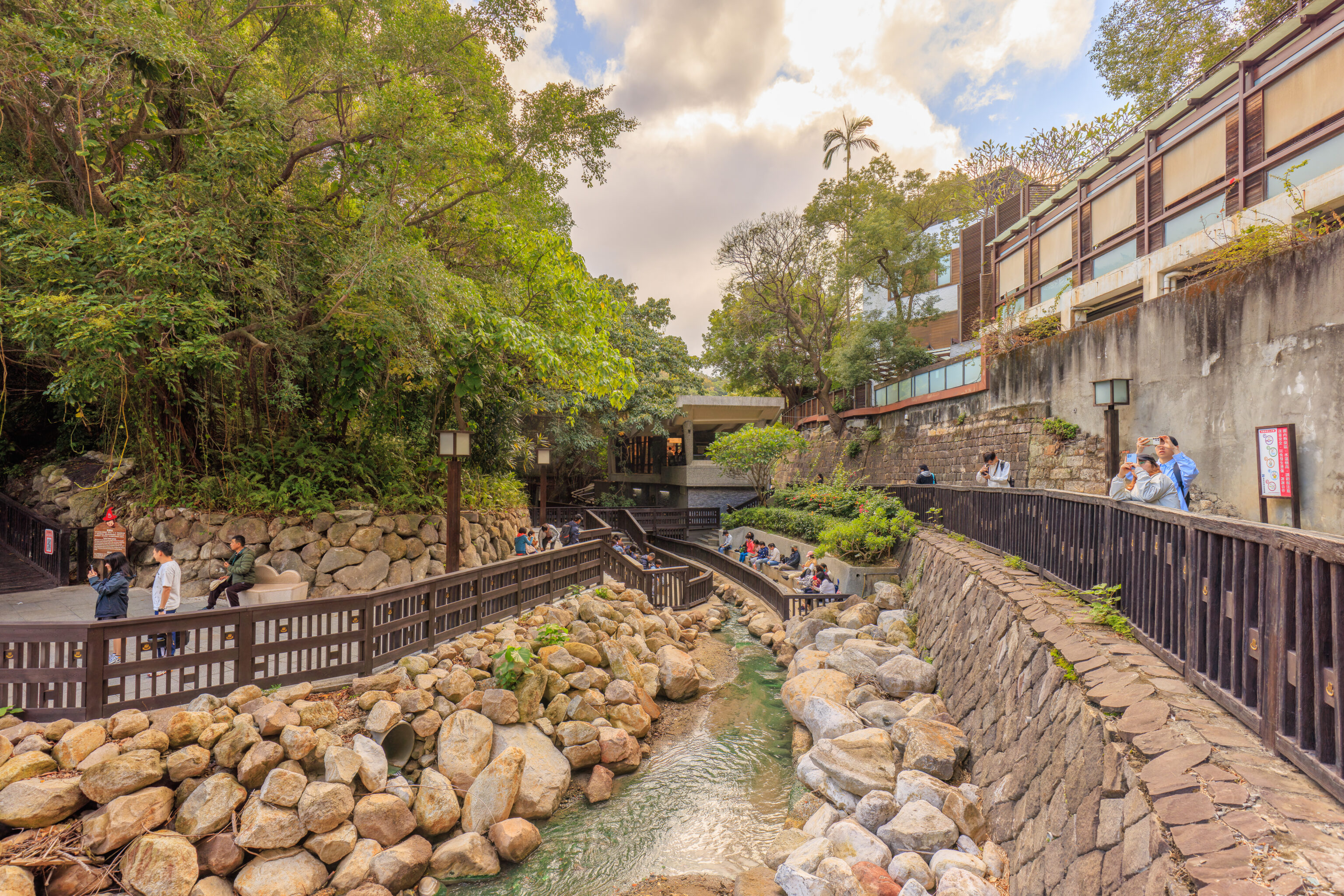
Looking back downriver, there is an area with thermally heated seating right by the river.
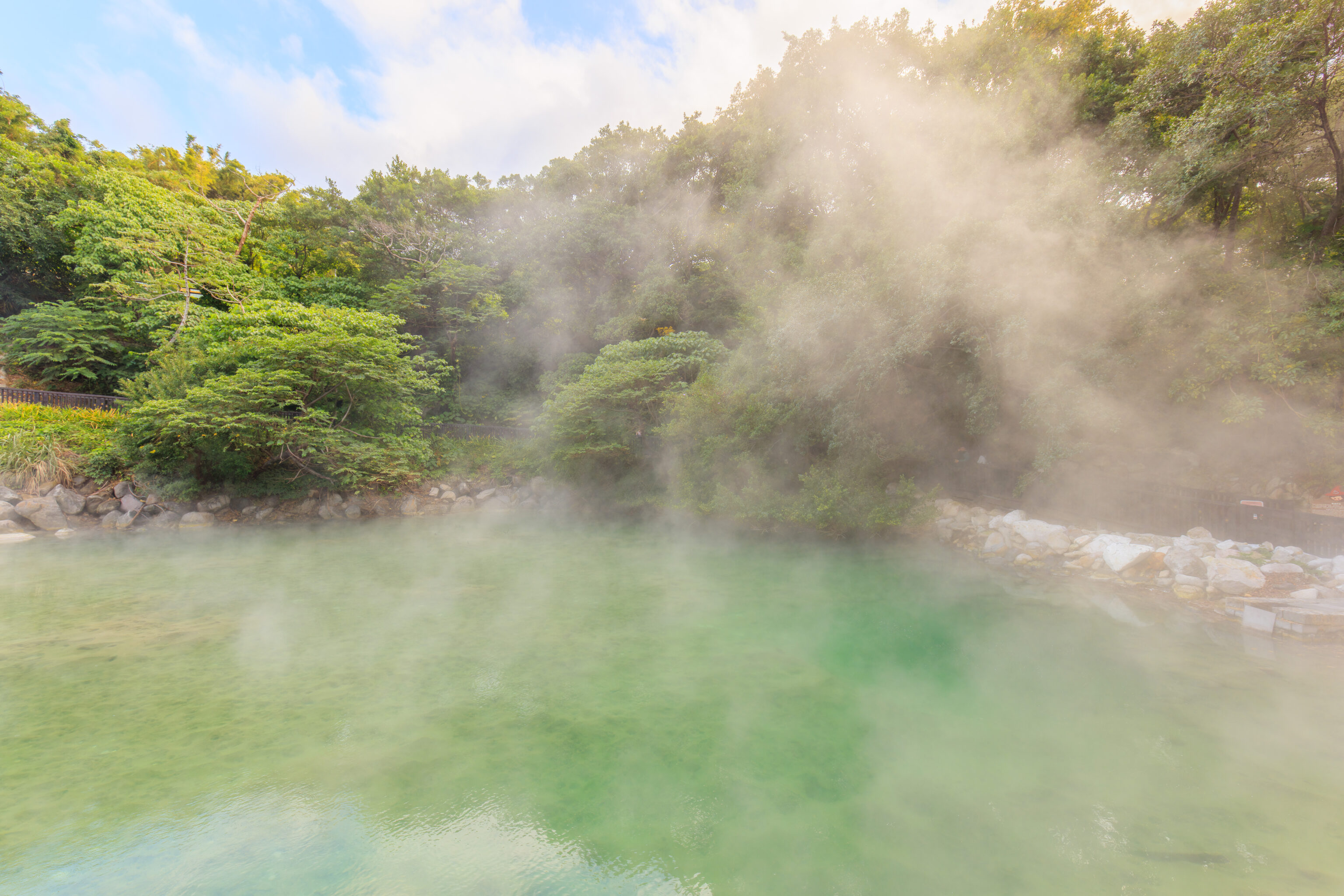
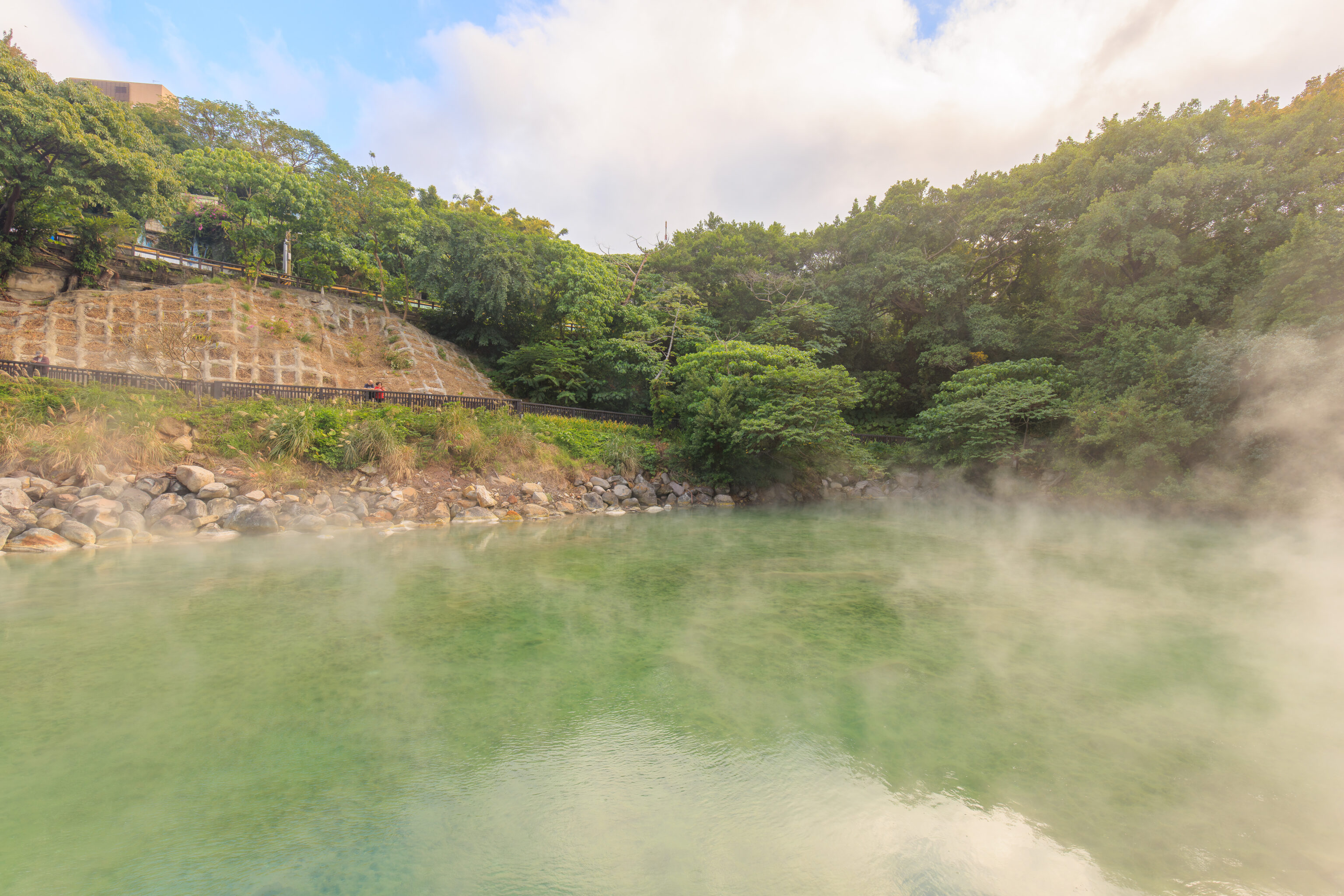
There is a path that goes around the lake. We started walking around it clockwise.
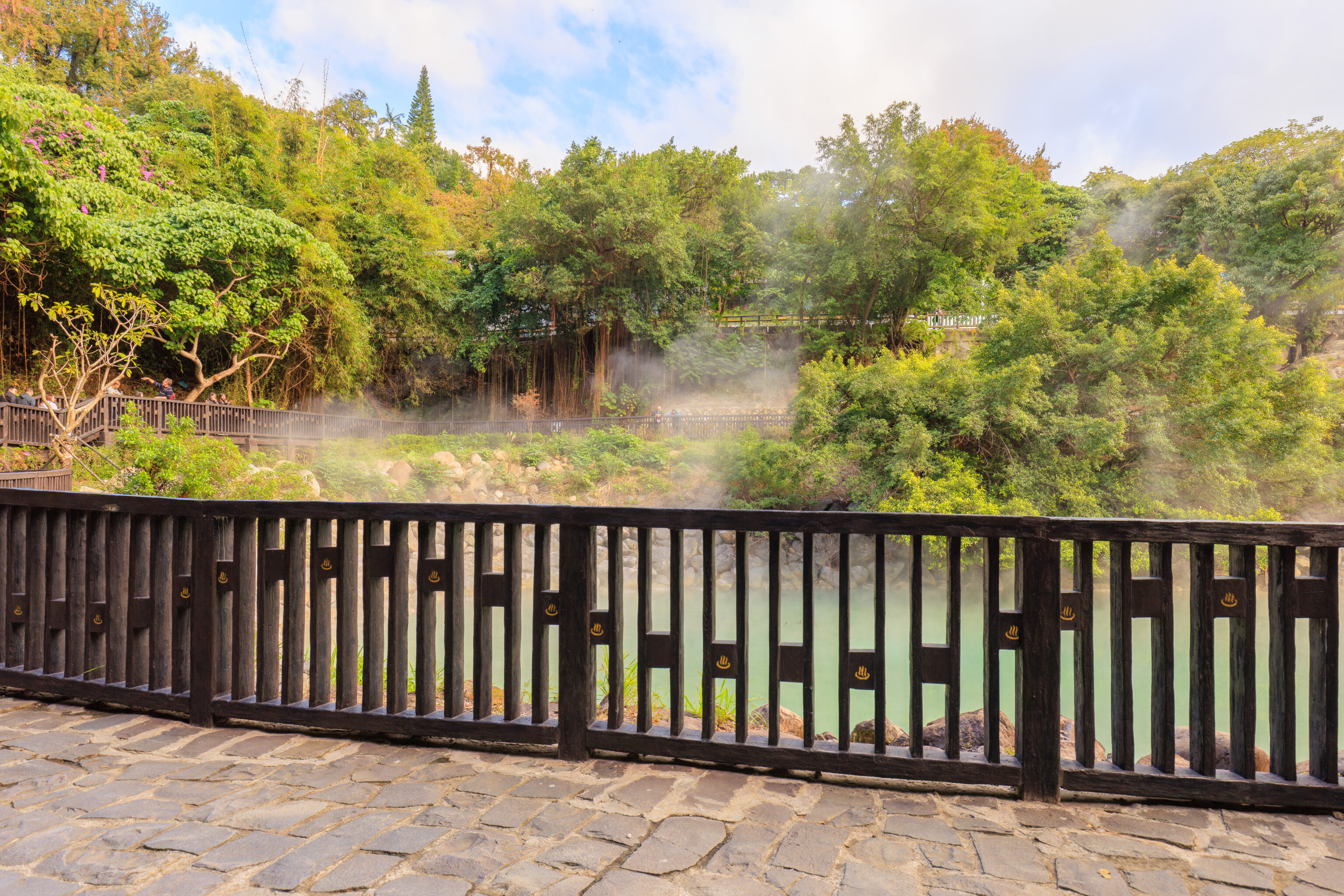
The path was lined with benches to sit and enjoy the view. There was a bit of sulfur smell but it wasn’t too bad. A nearby sign explains a bit about this thermal area:
1. Thermal Valley occupies an area of around 3,500 square meters. It is a deep valley created before the eruption of the volcano. The water temperature of the hot spring gushing out from the valley is over 90 degrees Celsius, which is the highest temperature of any hot spring throughout the Tatun Volcano Group. In earlier times, many tourists were injured when boiling eggs were still allowed here, and the quality of the hot springs was also affected. Therefore, the Taipei City Council decided in 1993 to transfer the management of the hot springs to the Taipei Water Department, which is tasked with maintaining the area through water source management measures. 2. The hot spring in the Thermal Valley is from the hot water from the deep inside the volcano, which is acidified by the infiltration of volcanic gas and mixed with surface water when it rises near the surface. The spring is commonly known as green sulfur because of its green color, which resembles jade. The hot springs contains large amounts of sulfate minerals and trace amounts of a radioactive substance - "radium". After a long period of precipitation, the crystallized surfaces of rocks along the Beitou River bed became the only rare mineral in the world named after a place in Taiwan, called "Beitou Stone", which is found only in Beitou and Tamagawa Onsen in Akita, Japan. However, a portion of the Beitou River has been legally designated as the "Beitou Stone Natural Reserve" and access to it is restricted. Visitors can see some Beitou Stone on display at the Beitou Hot Springs Museum and the Thermal Valley.
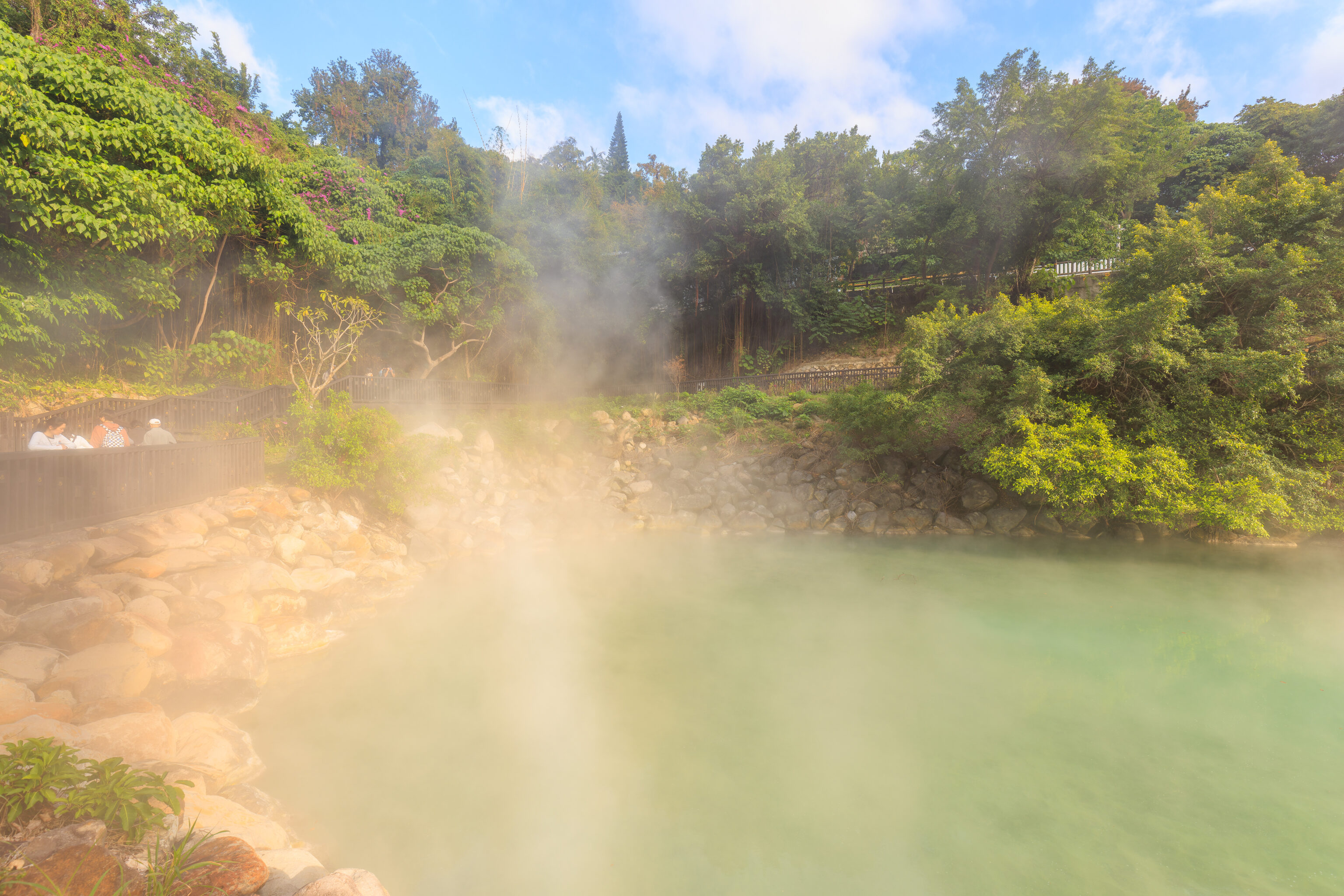
The sky was partly cloudy so the scene alternated between bright and sunny and a bit dark and cloudy.
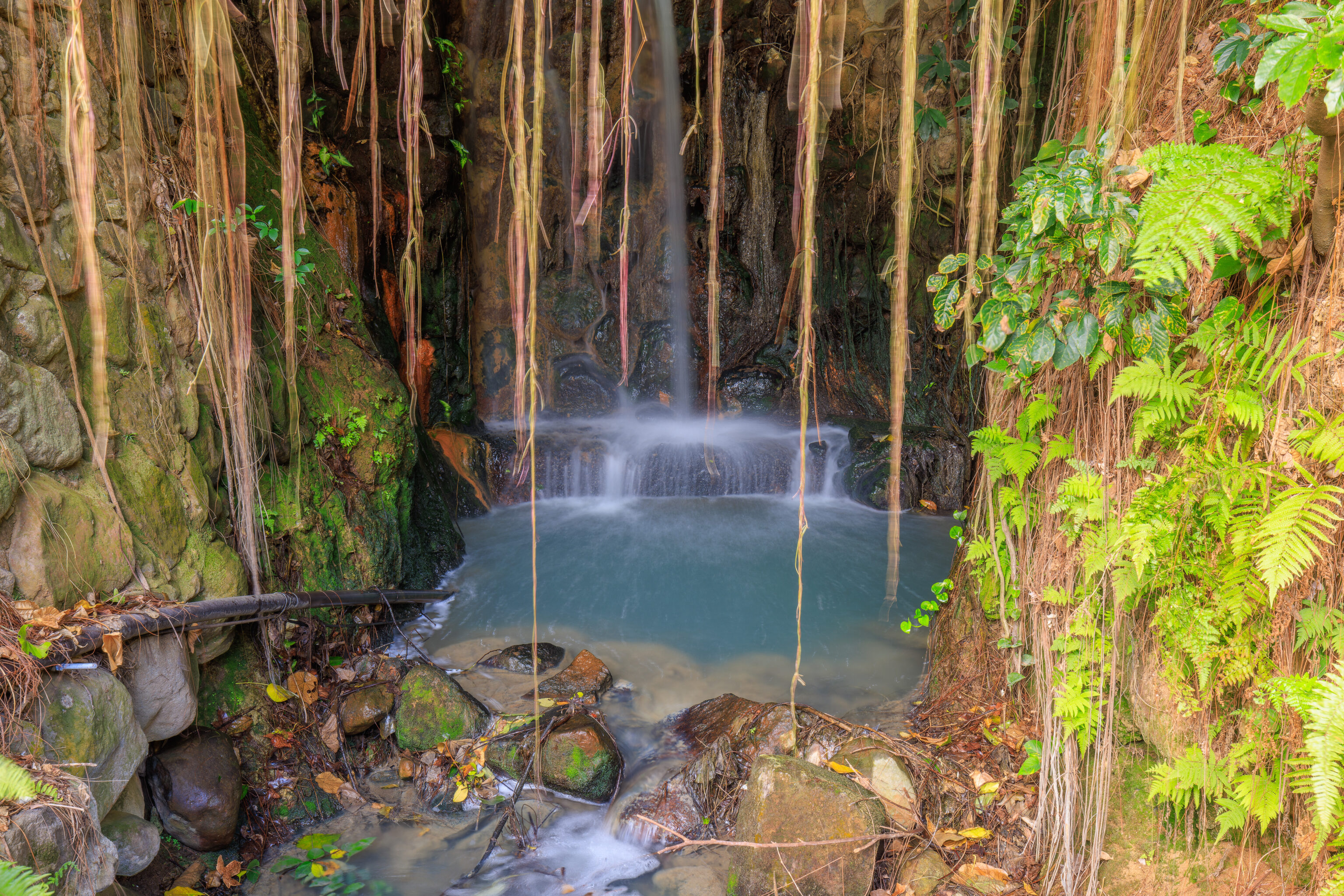
There is a small waterfall named the Witch’s Rock Waterfall at the northern end of the thermal lake. A sign reads:
In the tranquil mountain forests, the witch prays and blesses all things. The words of prayer are transformed into the sound of a clear spring, energizing the streams of the mountain. While appreciating the beauty of the waterfall, one might be able to listen to it and discover the beautiful silhouette hidden in the swirling most of the hot springs.
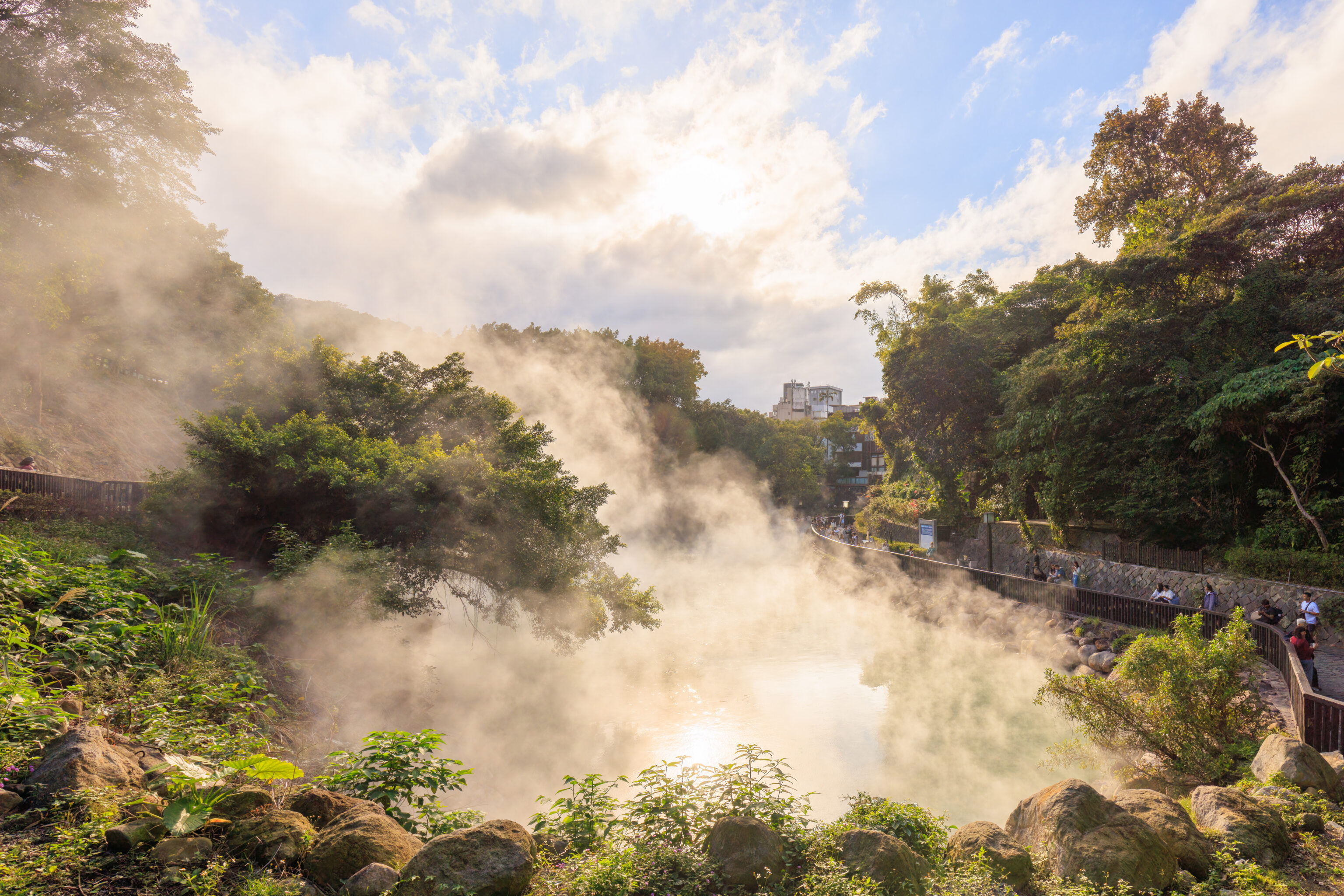
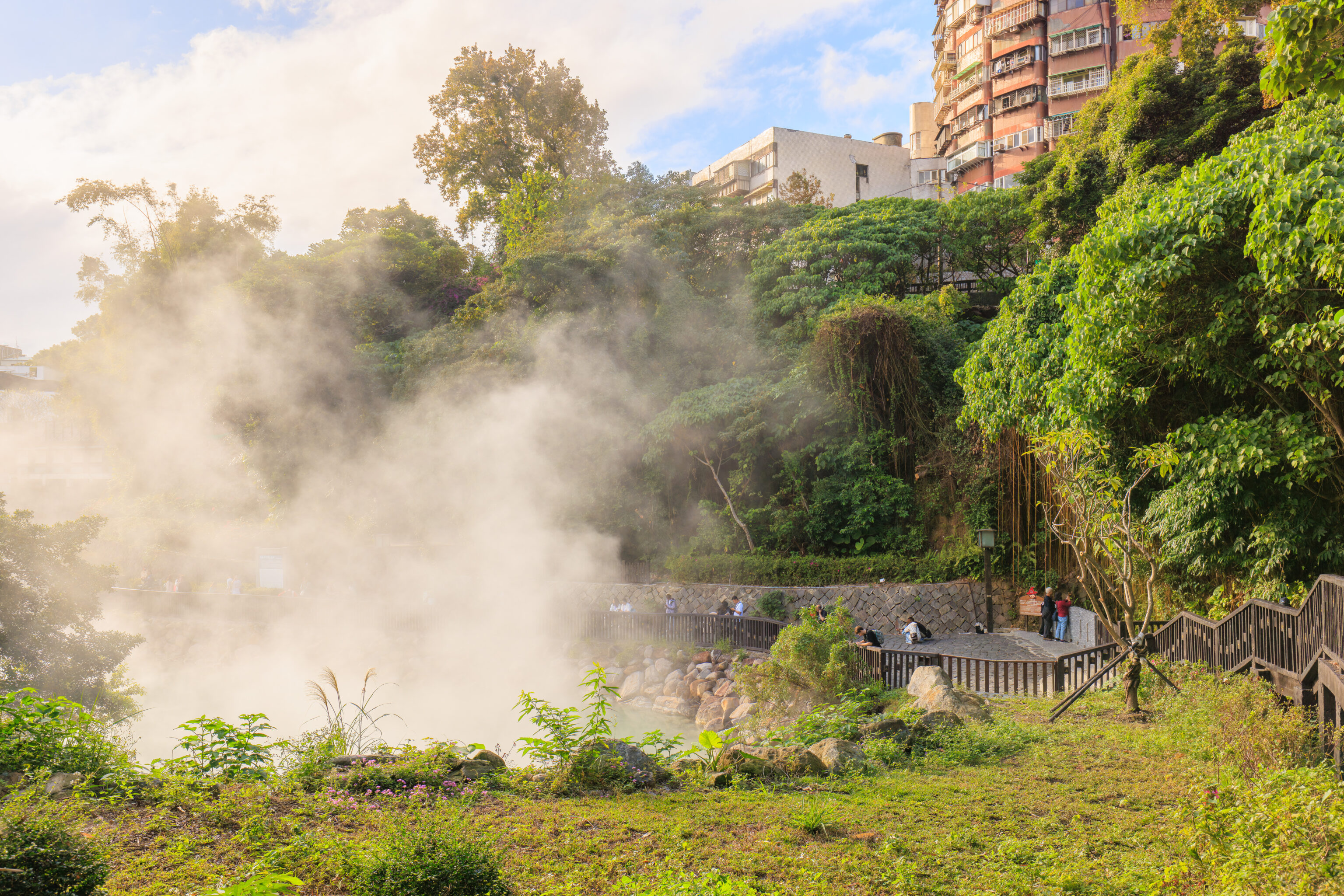
The path beyond the waterfall ascends up stairs and remains higher in elevation as it loops around the southeastern side of the thermal lake.
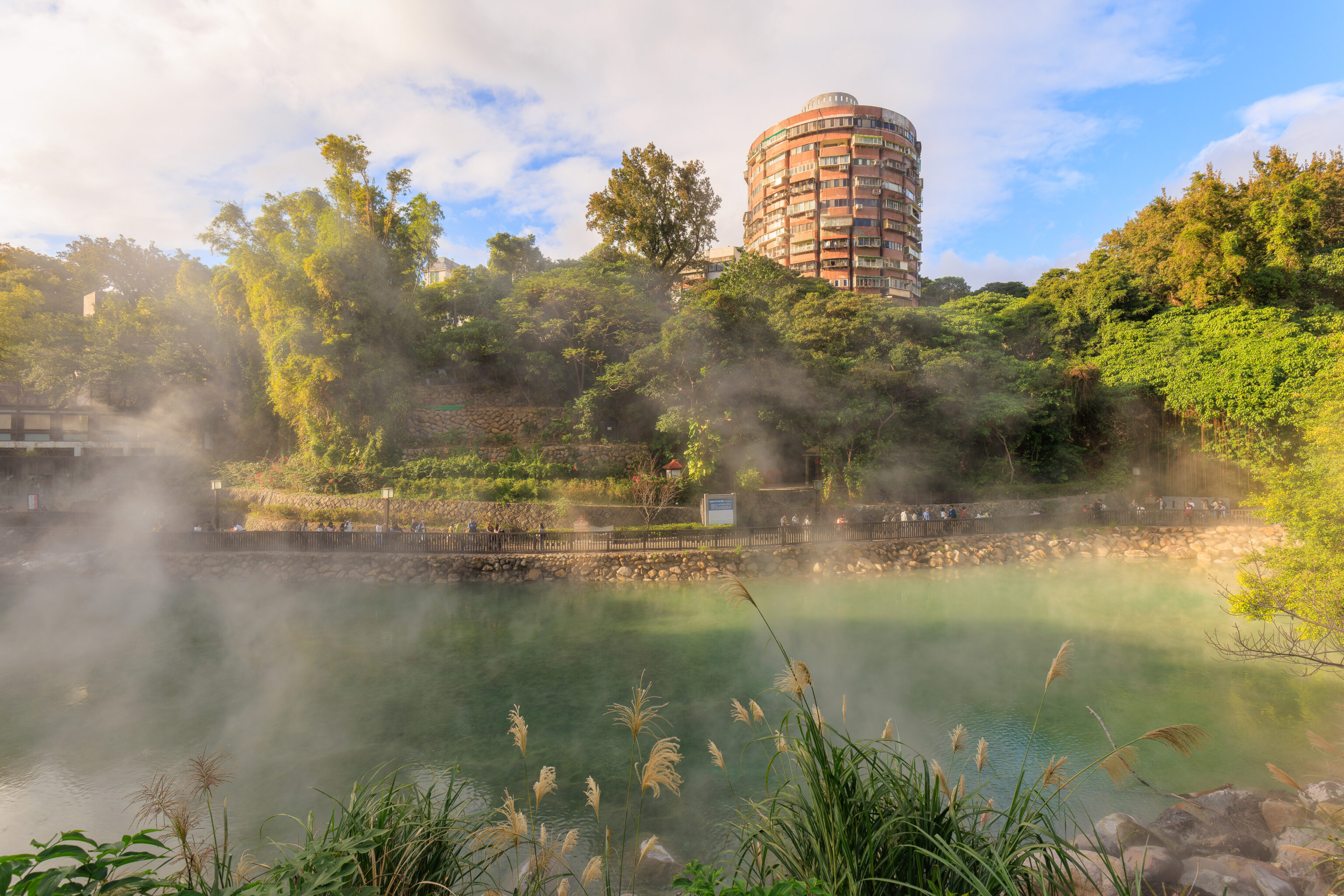
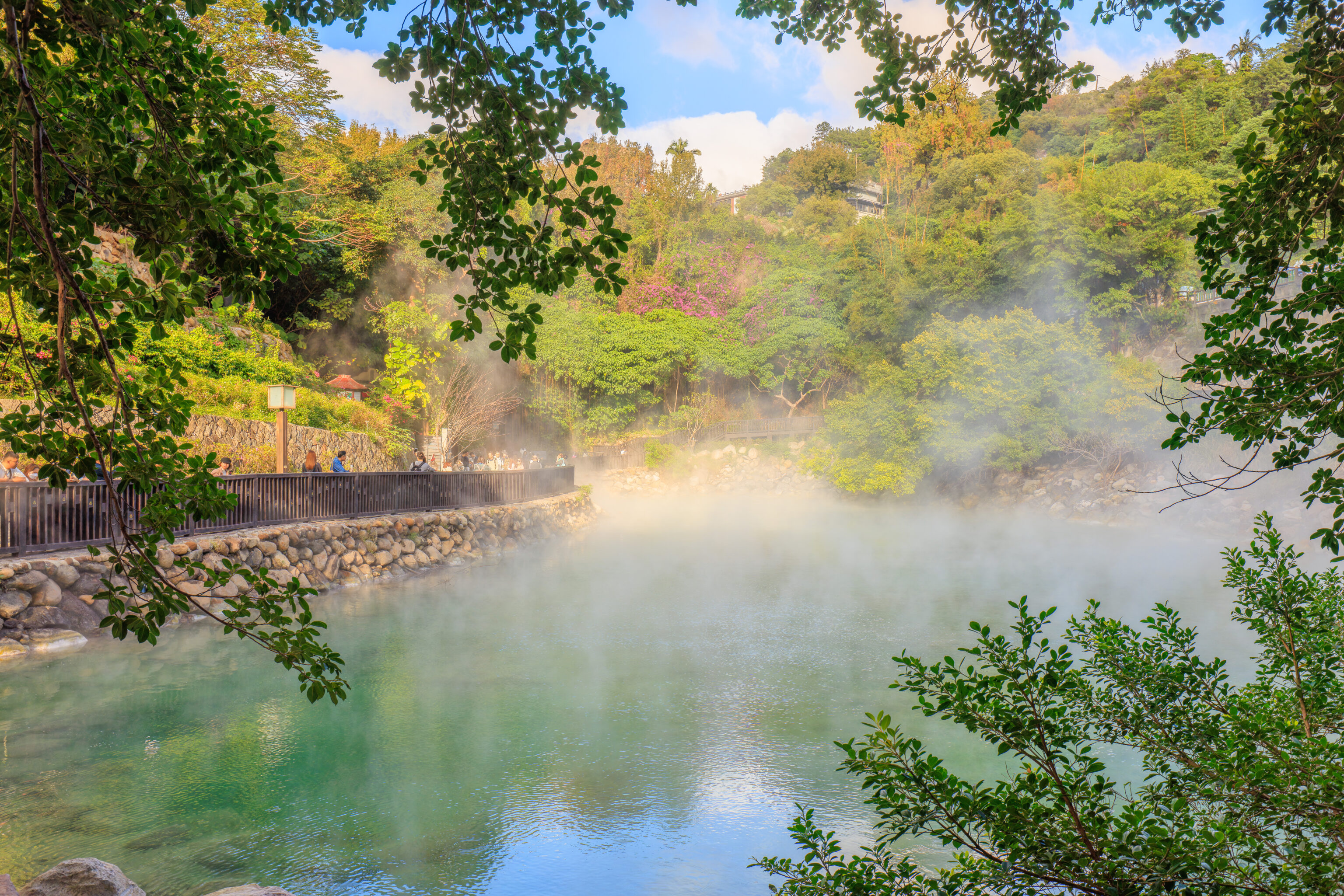
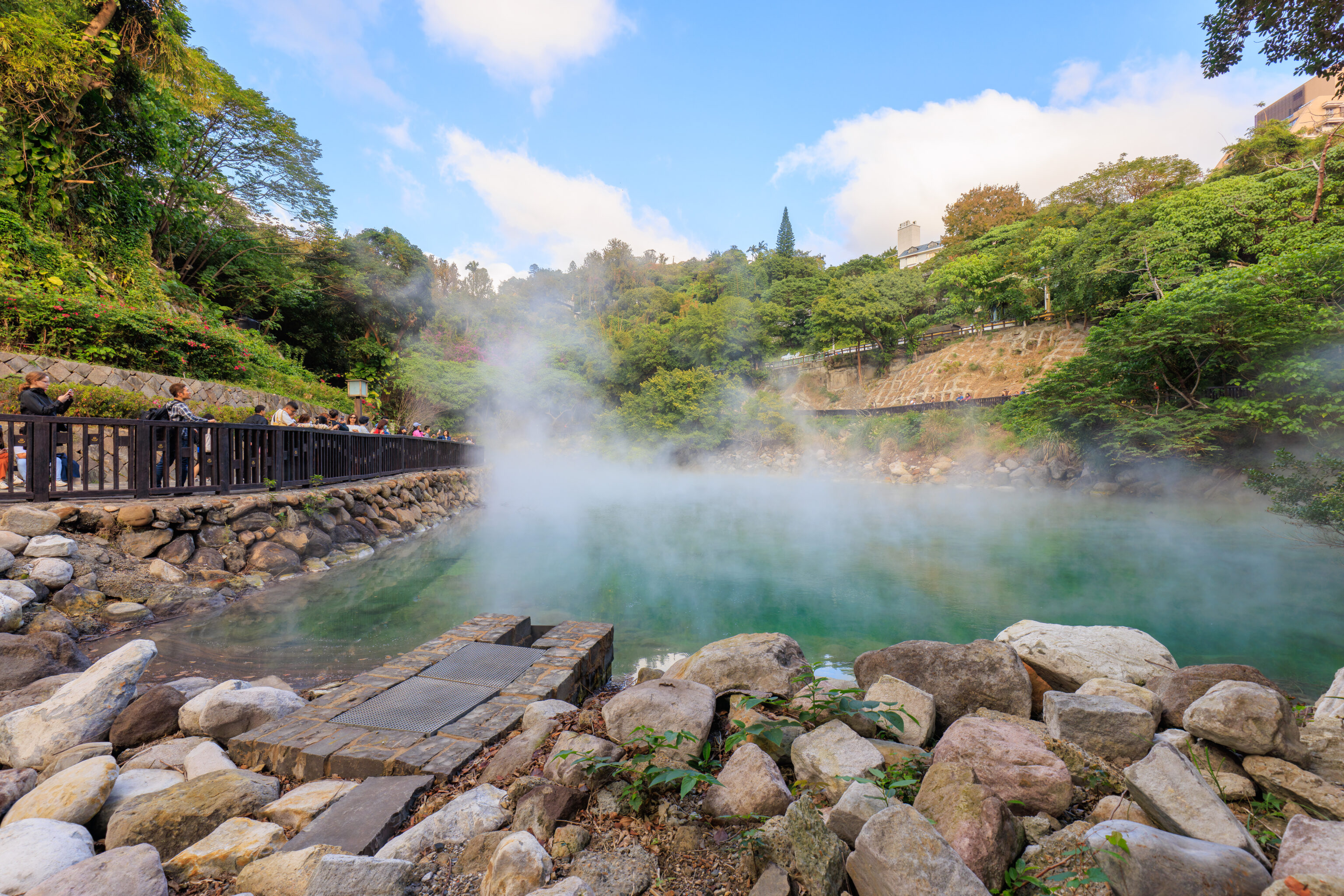
We continued along the path, making our way back to the west where we started. It seems that the intended walking direction may be counter-clockwise, based upon a sign here:
Trail of Divine Springs Walk around the lake with changing heights, immerse in the beautiful lush scenery made of mountains, water, mists, and springs. Escape from the hustle and bustle of modern life for a bit, and bask in the quiet serenity blessed by natural energy. The variations in the lake color and light creates scenes that are sometimes misty, sometimes clear and pure. Let the restlessness of the mind and body melt away like clouds of smoke.
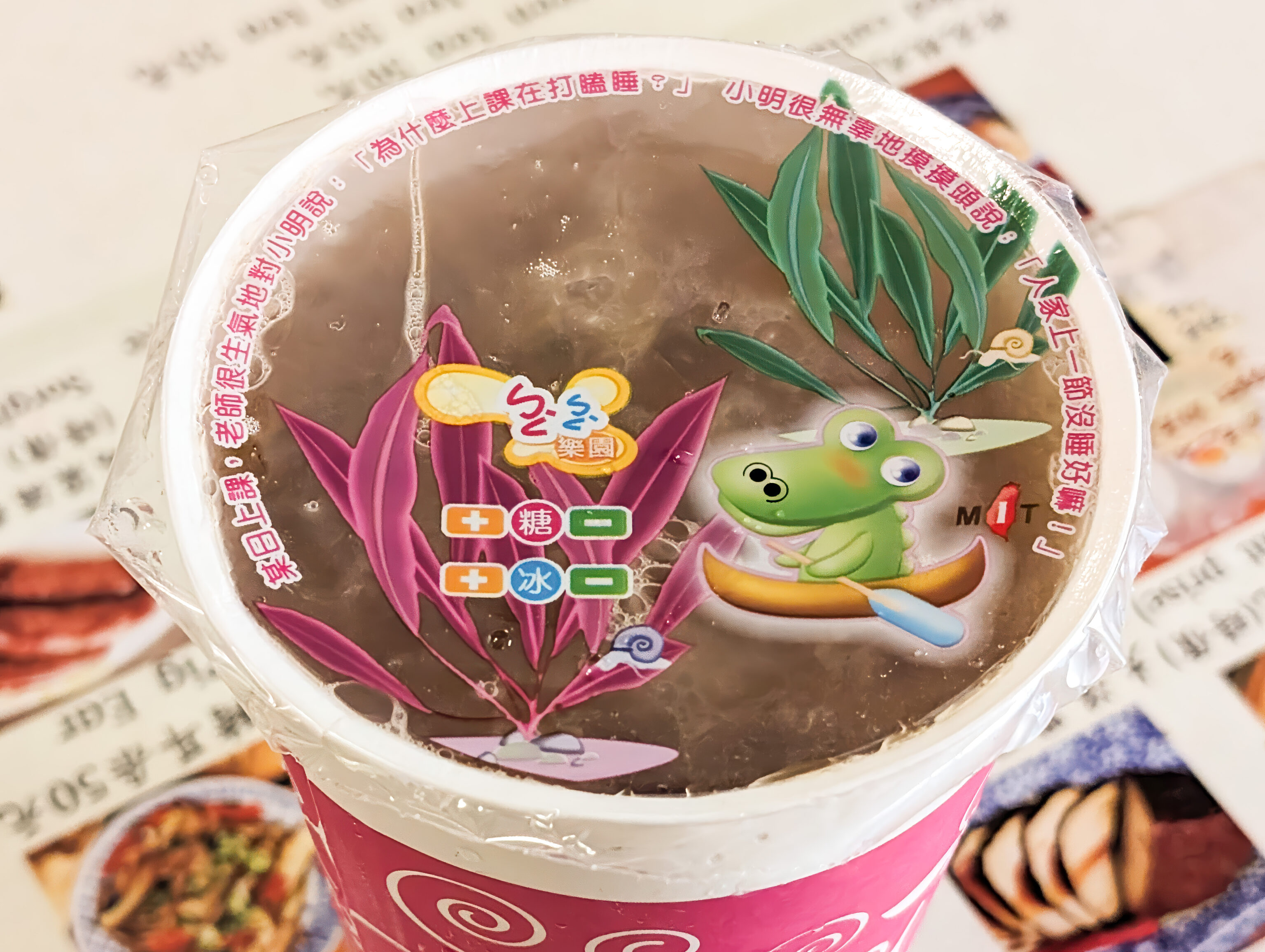
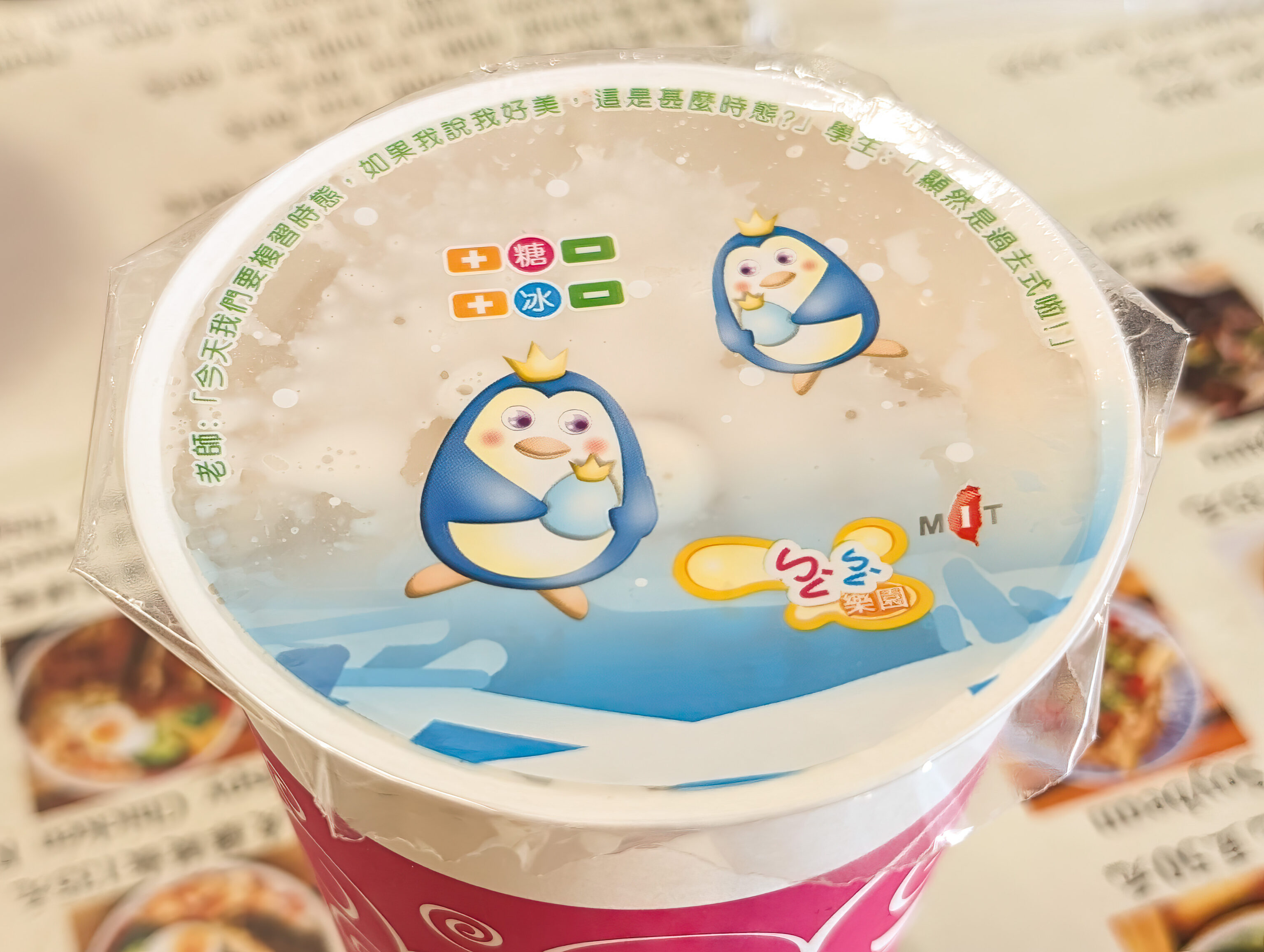
We stopped by a small cafe as we walked away from the thermal lake. It seems to be labeled as Tea Colors Cafe on Google Maps. We got a pair of drinks.
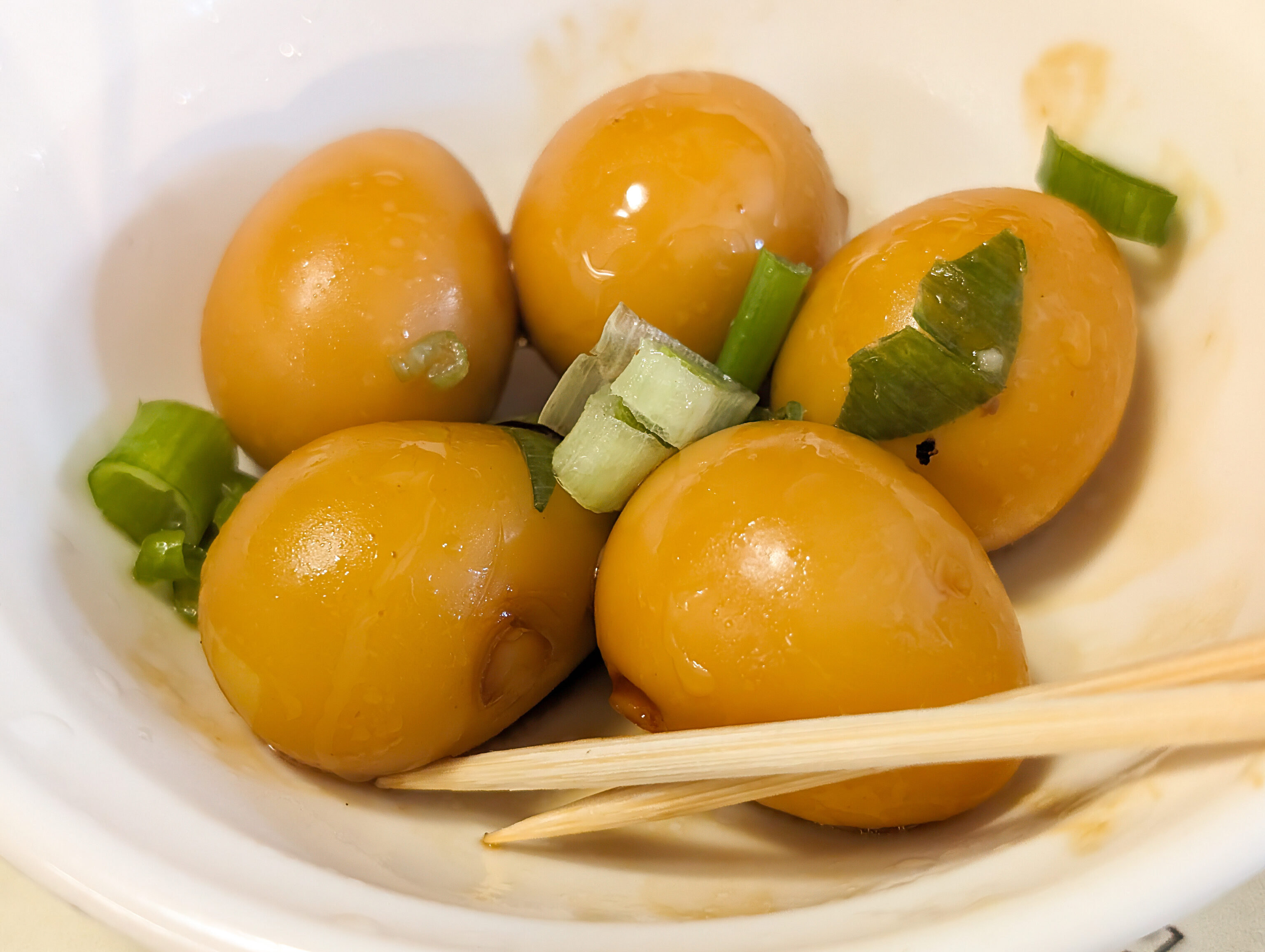
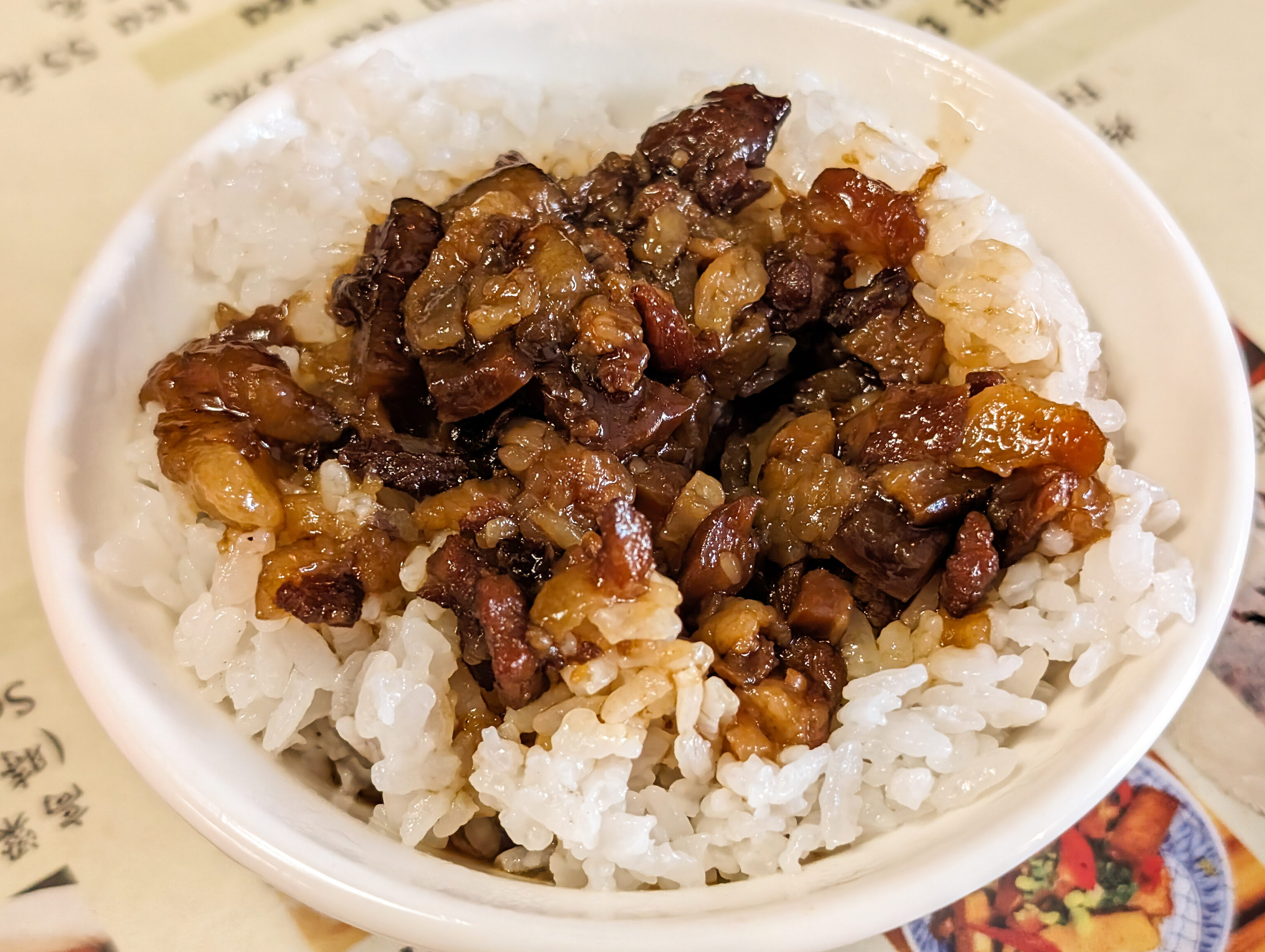
We also ordered some quail eggs and lu rou fan (braised pork rice). It was a nice snack! The proprietress was a bit absent minded so it took awhile to get our food and to pay!
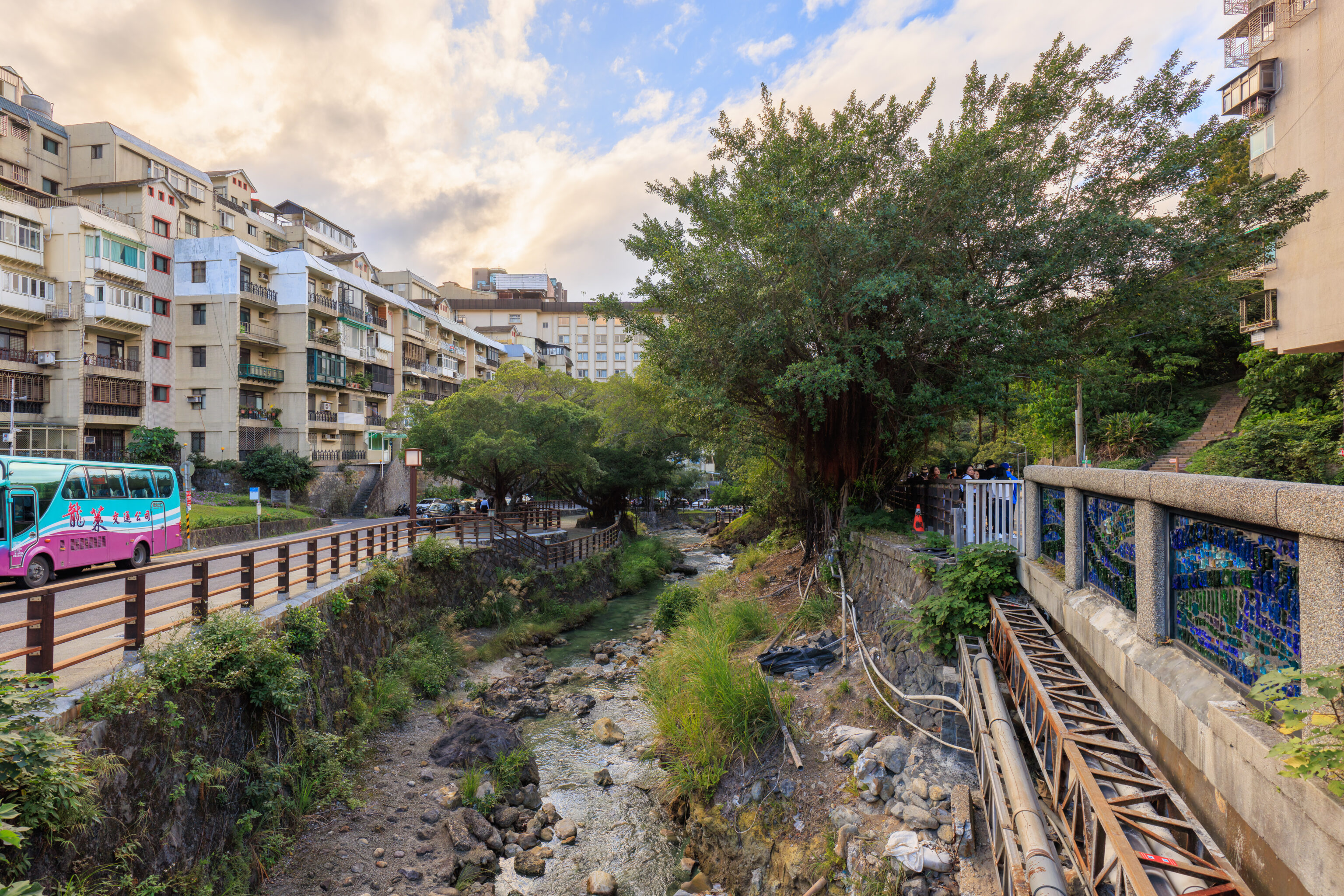
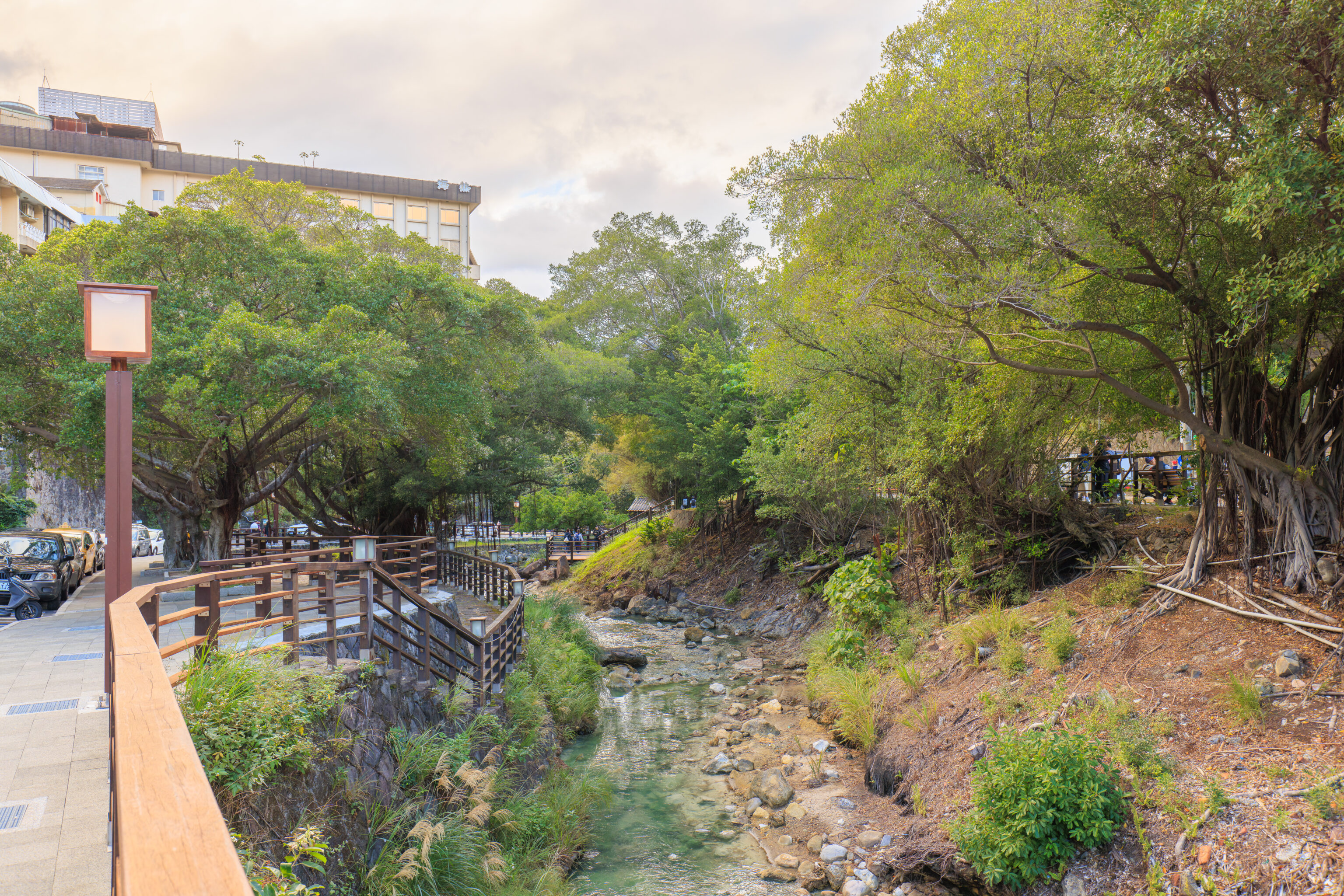
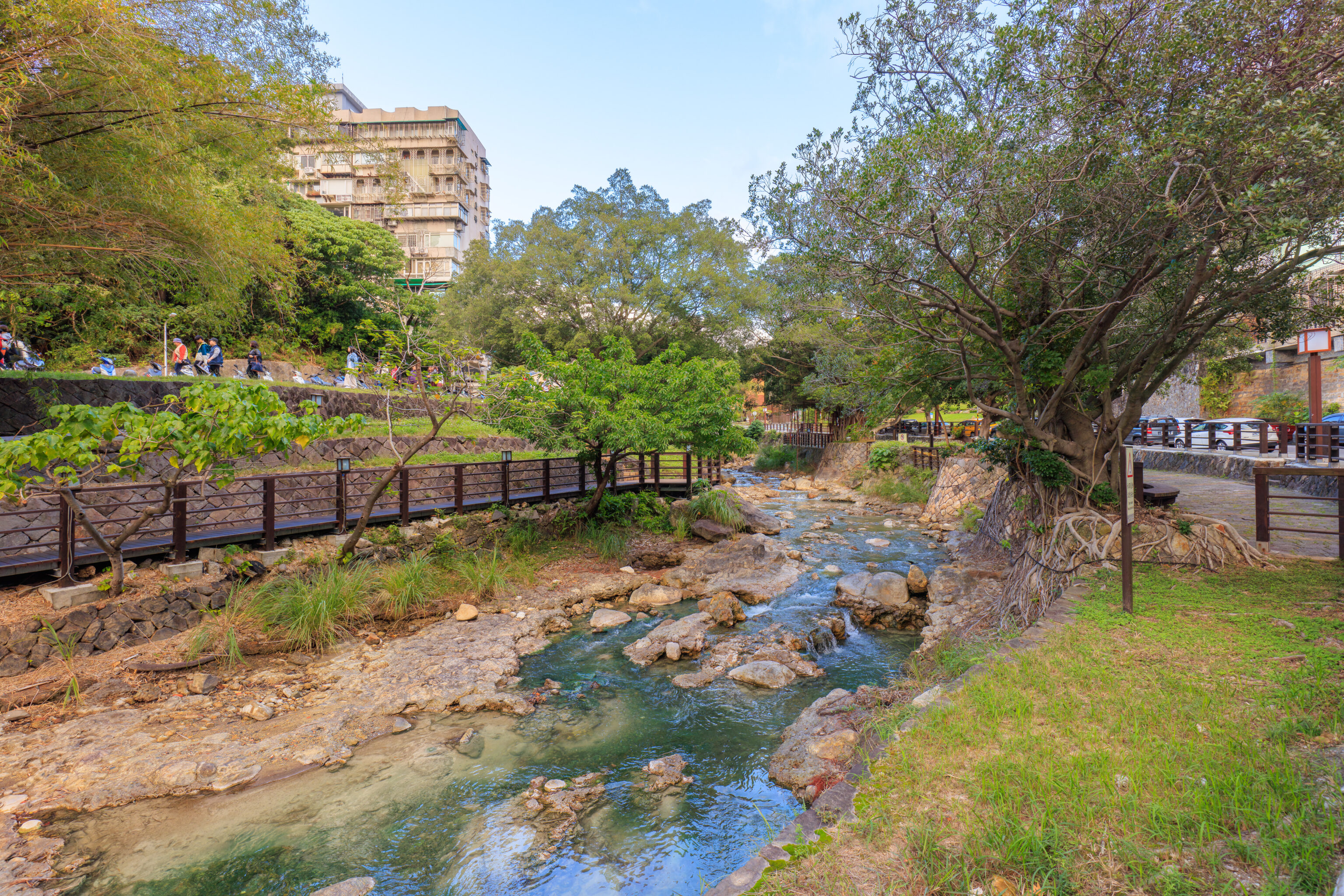
We continued walking to the west as we wanted to try some of the restaurants near the train station. We mostly took a different path from the way we walked when we arrived.
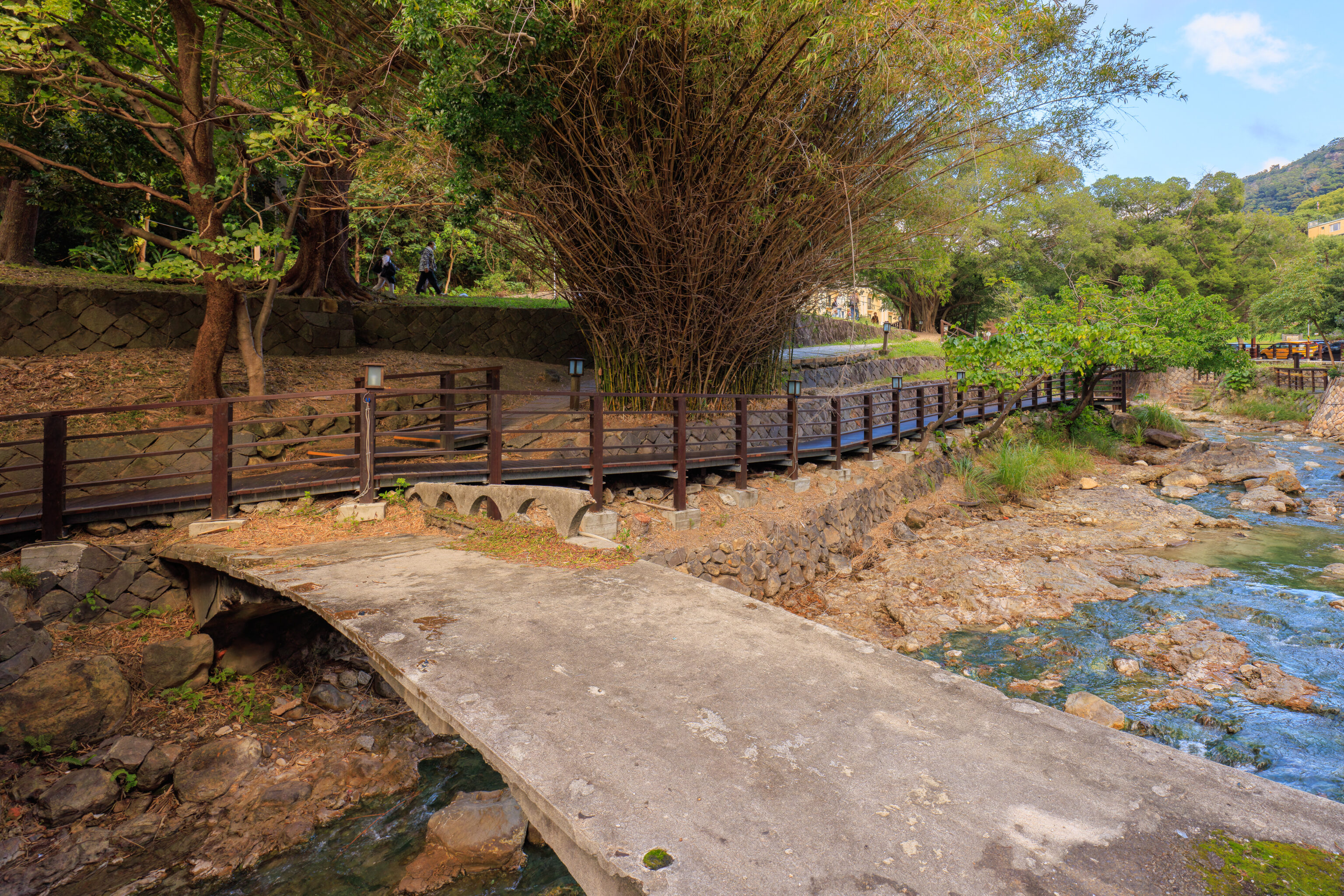
This is the remains of the Guitar Bridge. A sign explains:
The construction of this bridge was estimated to have taken place between the 1950s and 1960s, in the post-war period. The bridge is made of reinforced concrete and is named "Half Moon Bridge" due to its half-circle arch handrails. In 1966, a Taiwanese movie called "Guitar in the Hot Springs Village" starring Huang Qiuta and Chen Yunqing extensively featured scenes filmed in Beitou. One of the scenes shows the male and female protagonists sitting on the Half Moon Bridge at night, accompanied by the mist rising from the Beitou River. The play the guitar and share their feelings. This scene made the bridge a well-known attraction, earning it the nickname "Guitar Bridge." During the 1960s, many Taiwanese movies were filmed in Beitou. However, in the 1970s, the government implemented a Mandarin language policy, and at the same time, Taiwanese movies struggled to keep up with the trend of color cinematography due to their low budget. As a result, the box office declined. In the late 1970s, the government cracked down on entertainment establishments, and Beitou gradually became quiet. in the late 1990s, with the restoration and opening of the Beitou Hot Springs Museum and Beitou Park, as well as the opening of the Tamsui Line of the metro, people once again discovered the charm of the local hot springs village. It has become a must-visit historical tourist destination for visitors coming to Taipei from other places.
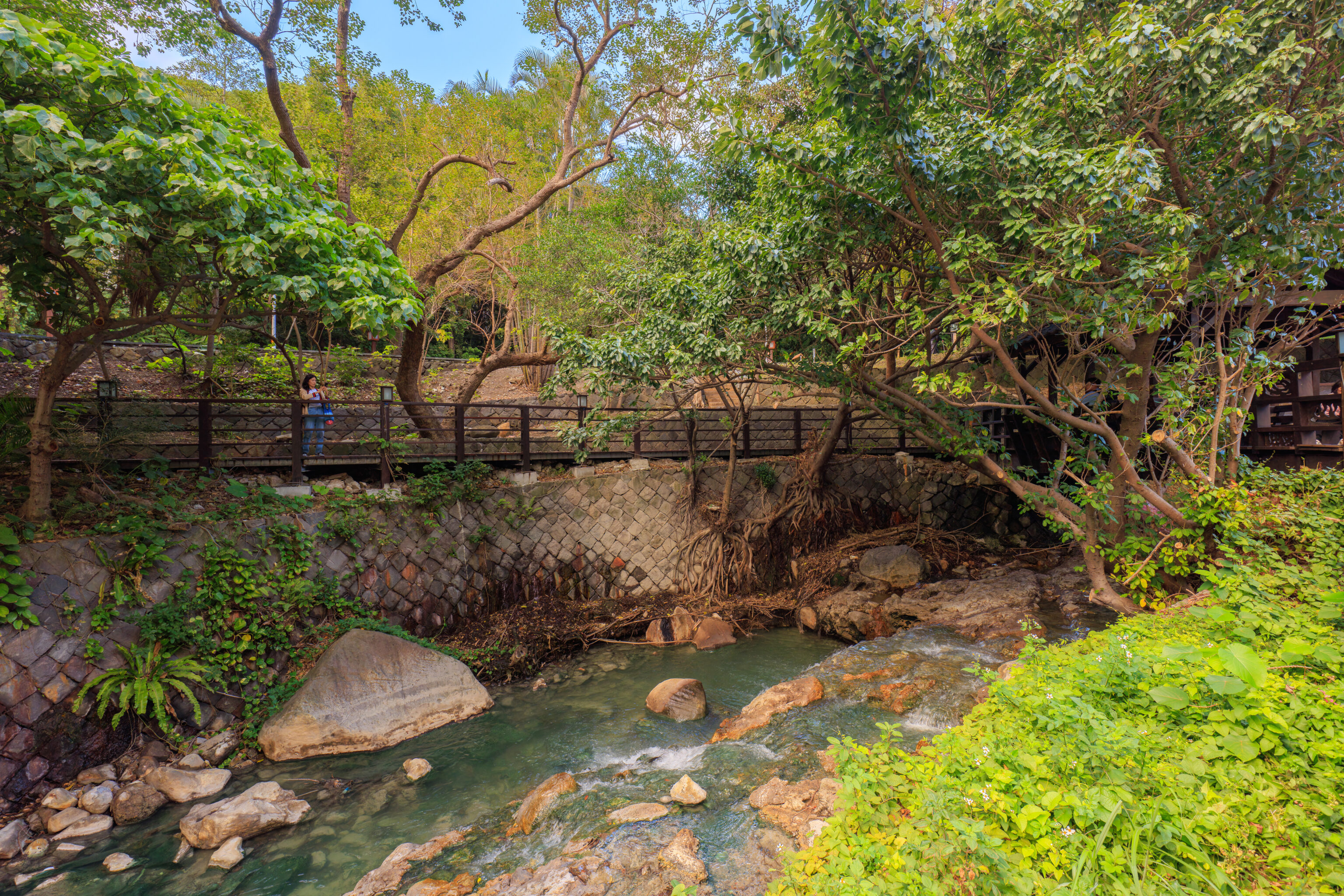
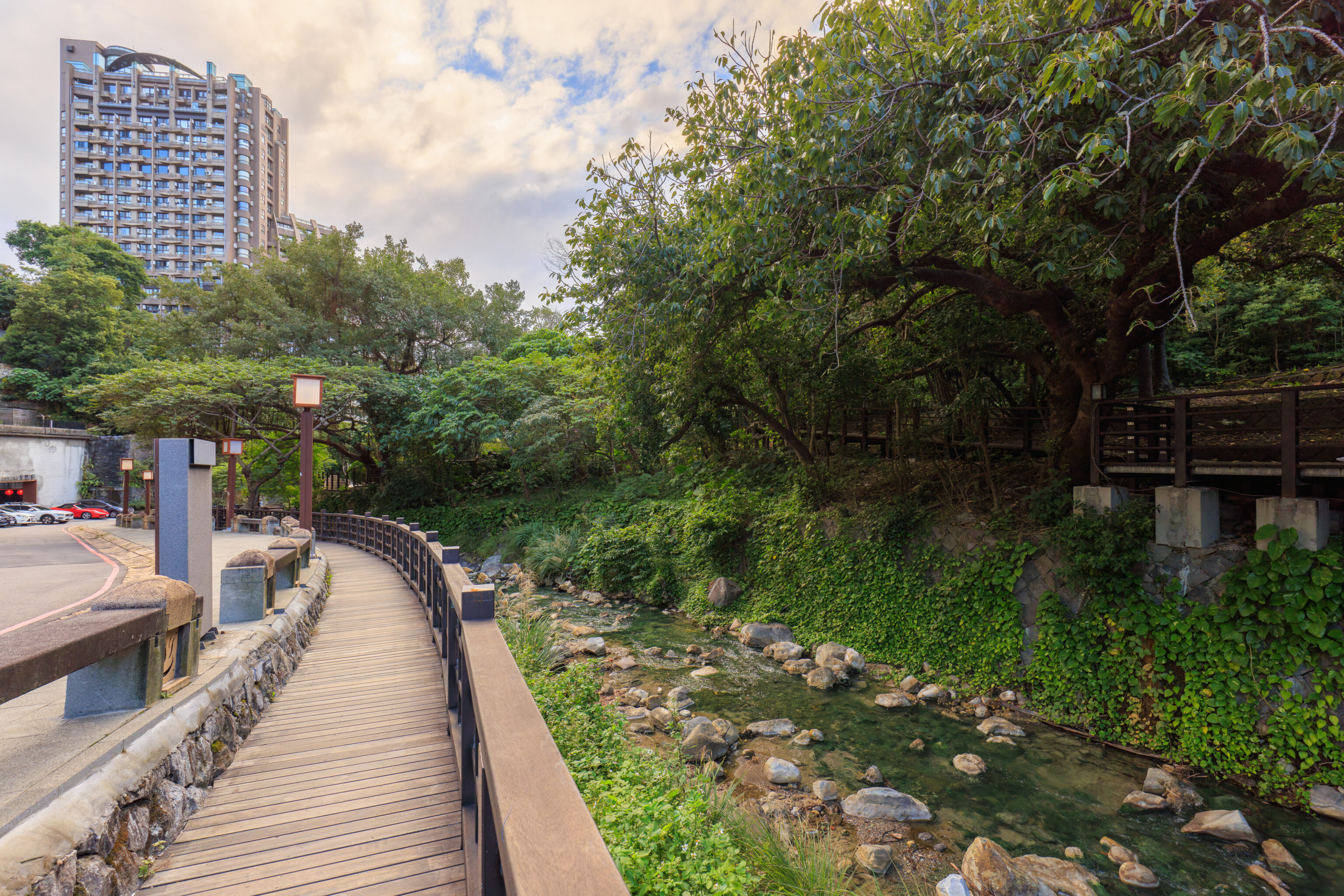
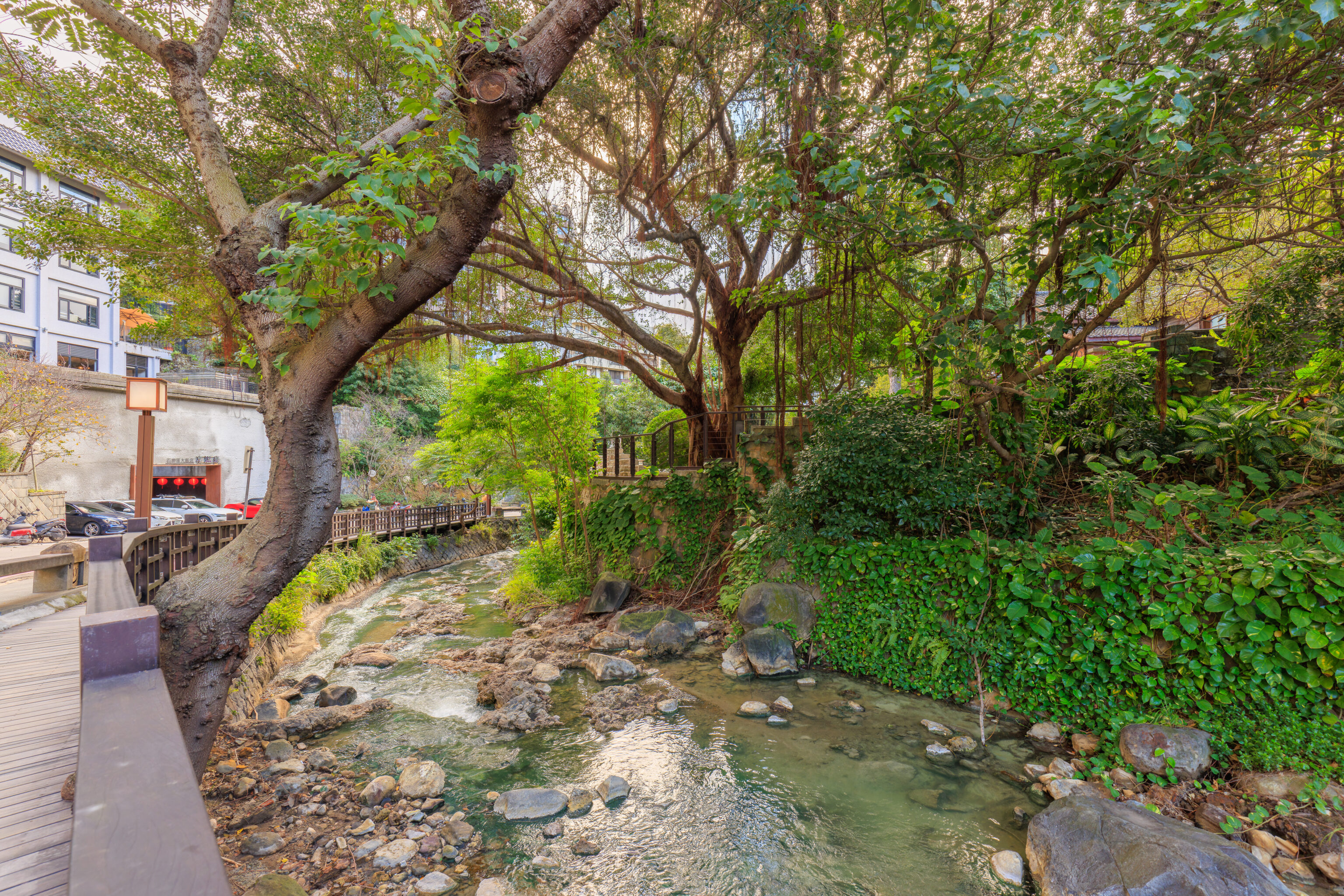
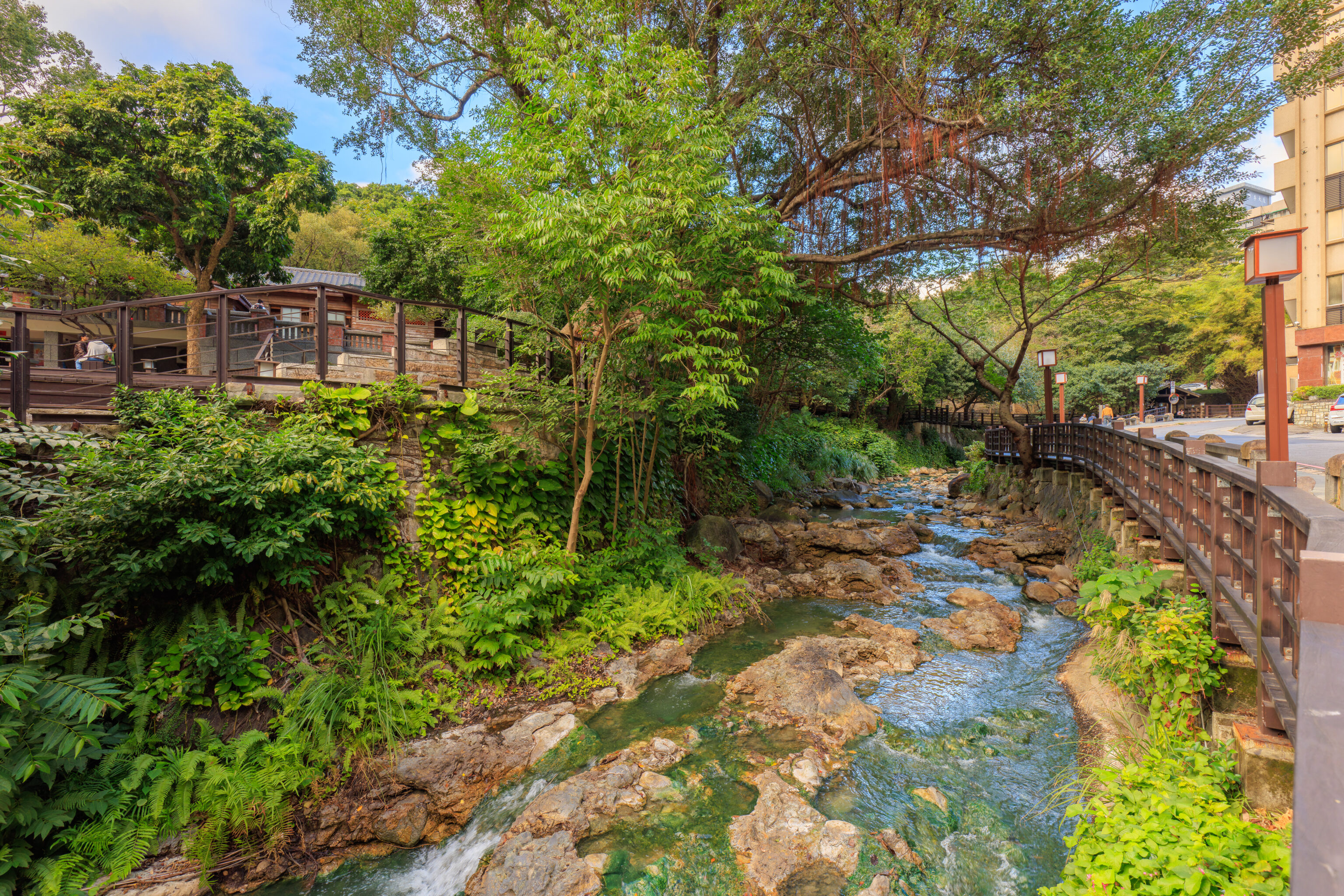
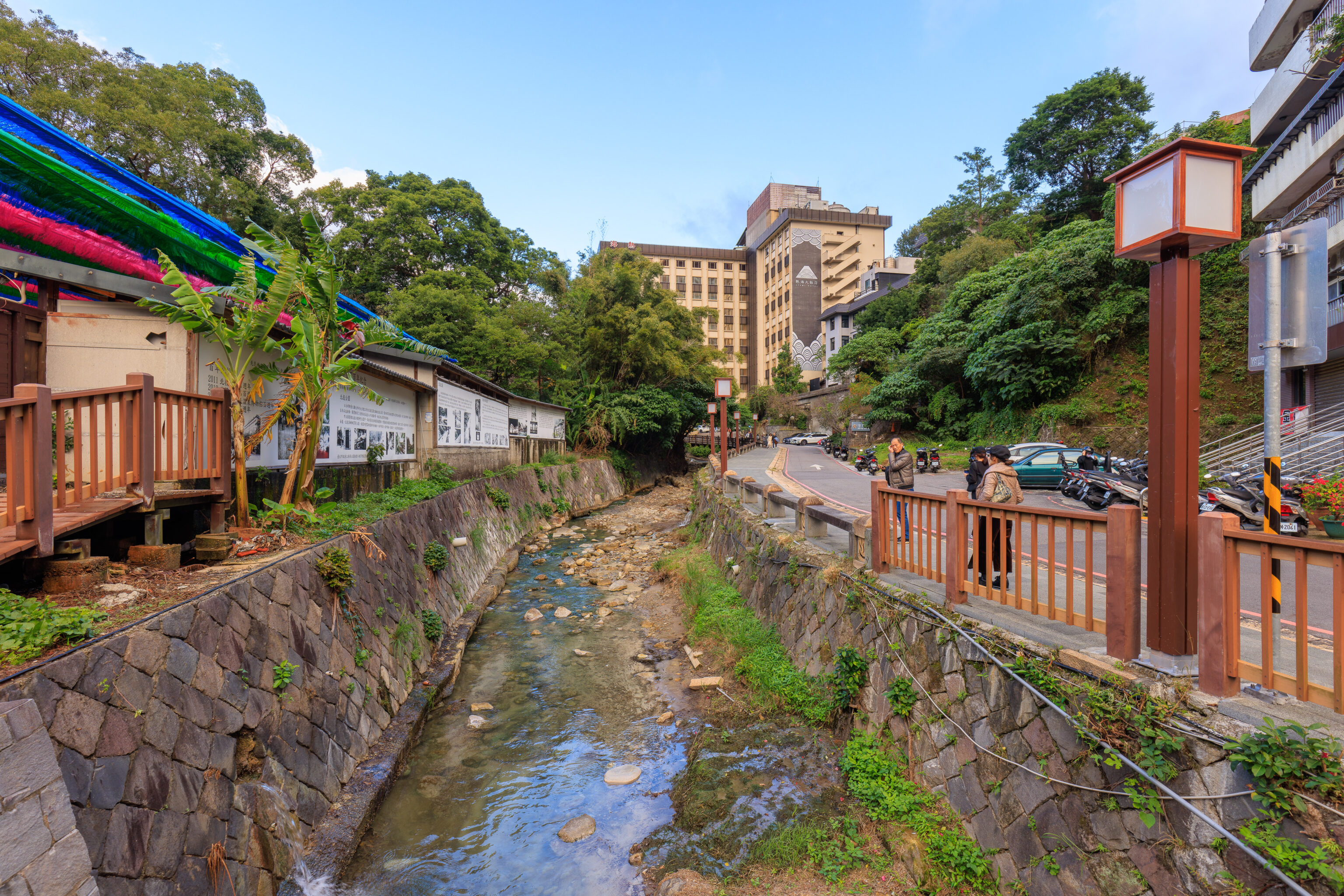
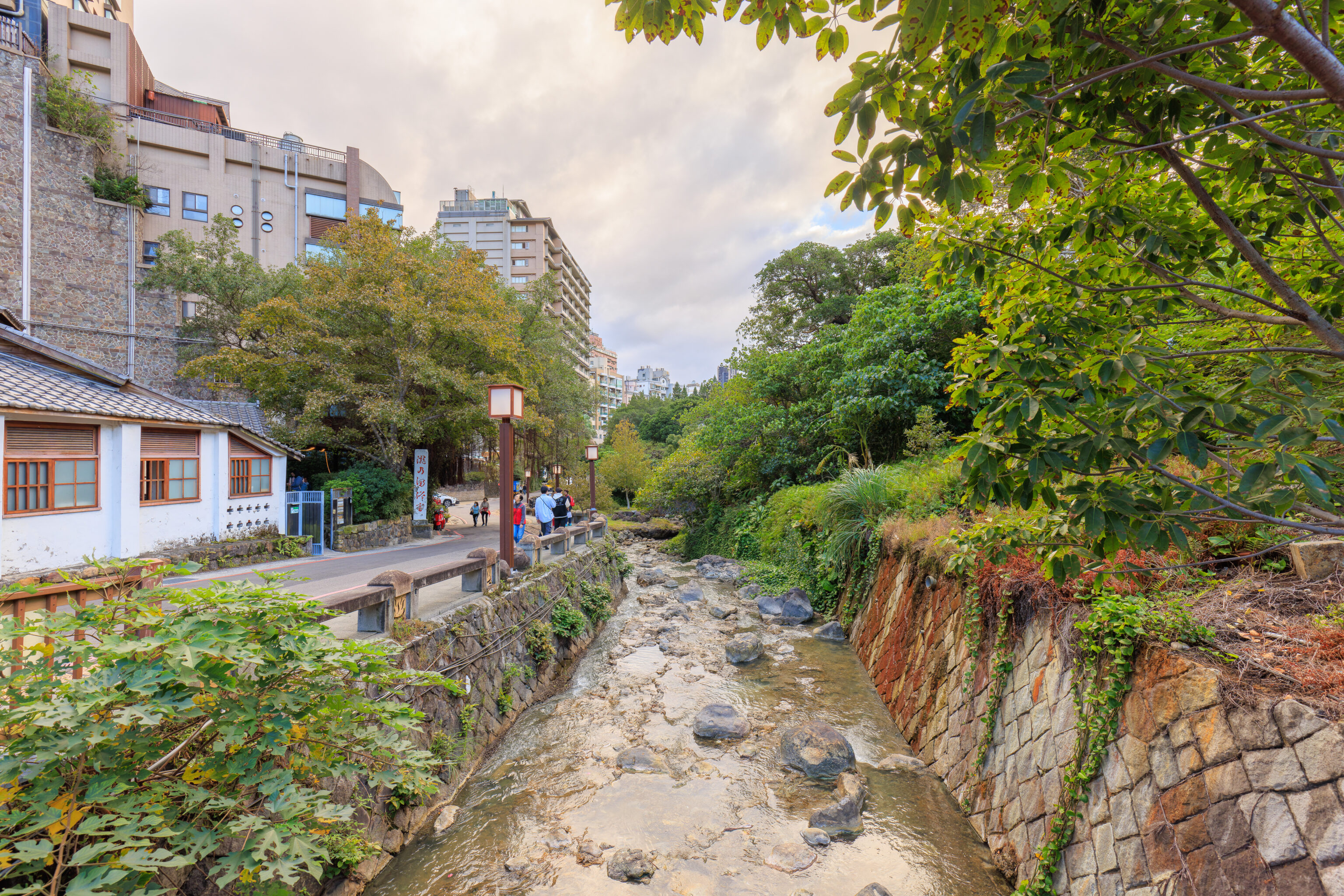
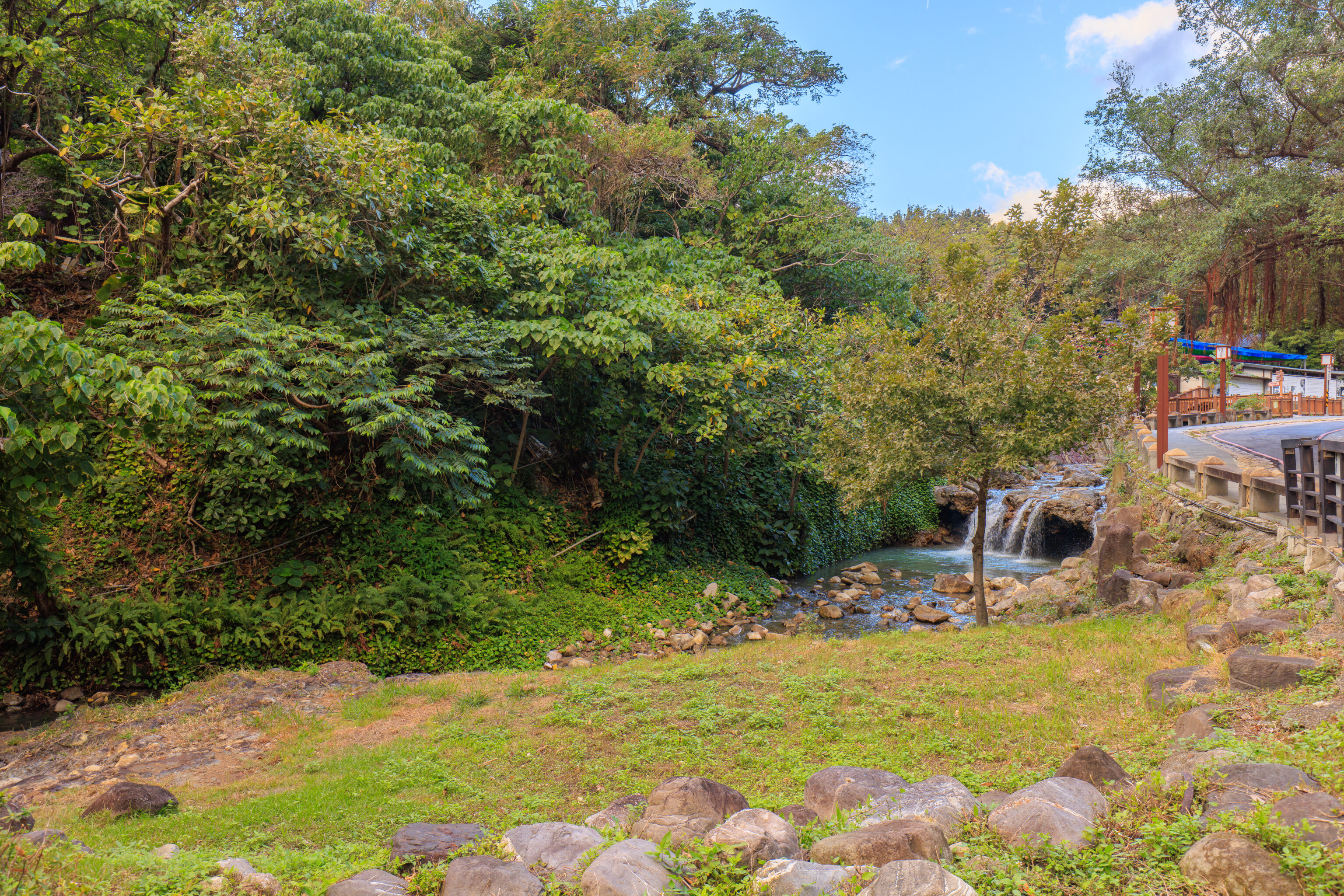
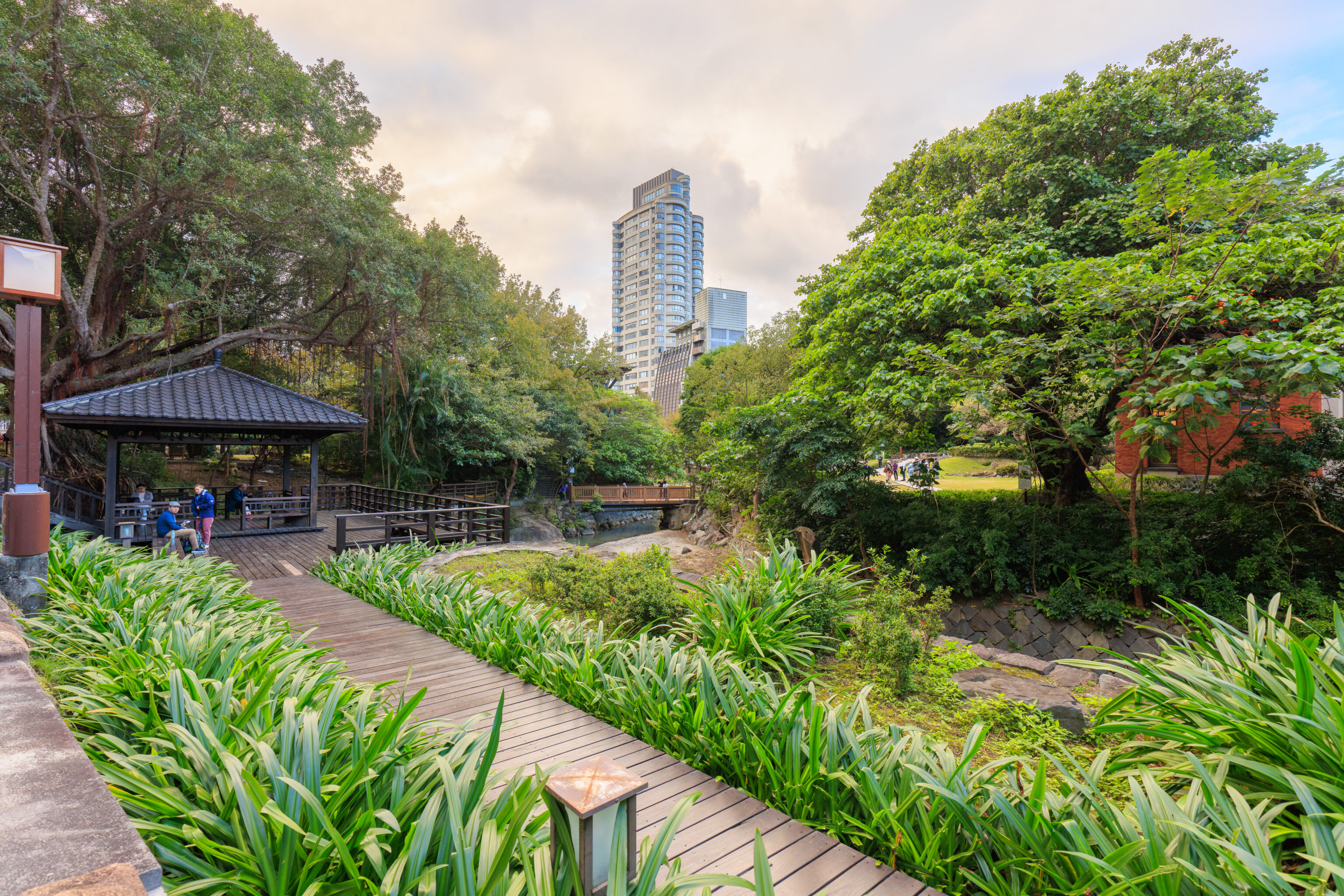
We continued walking to the west…
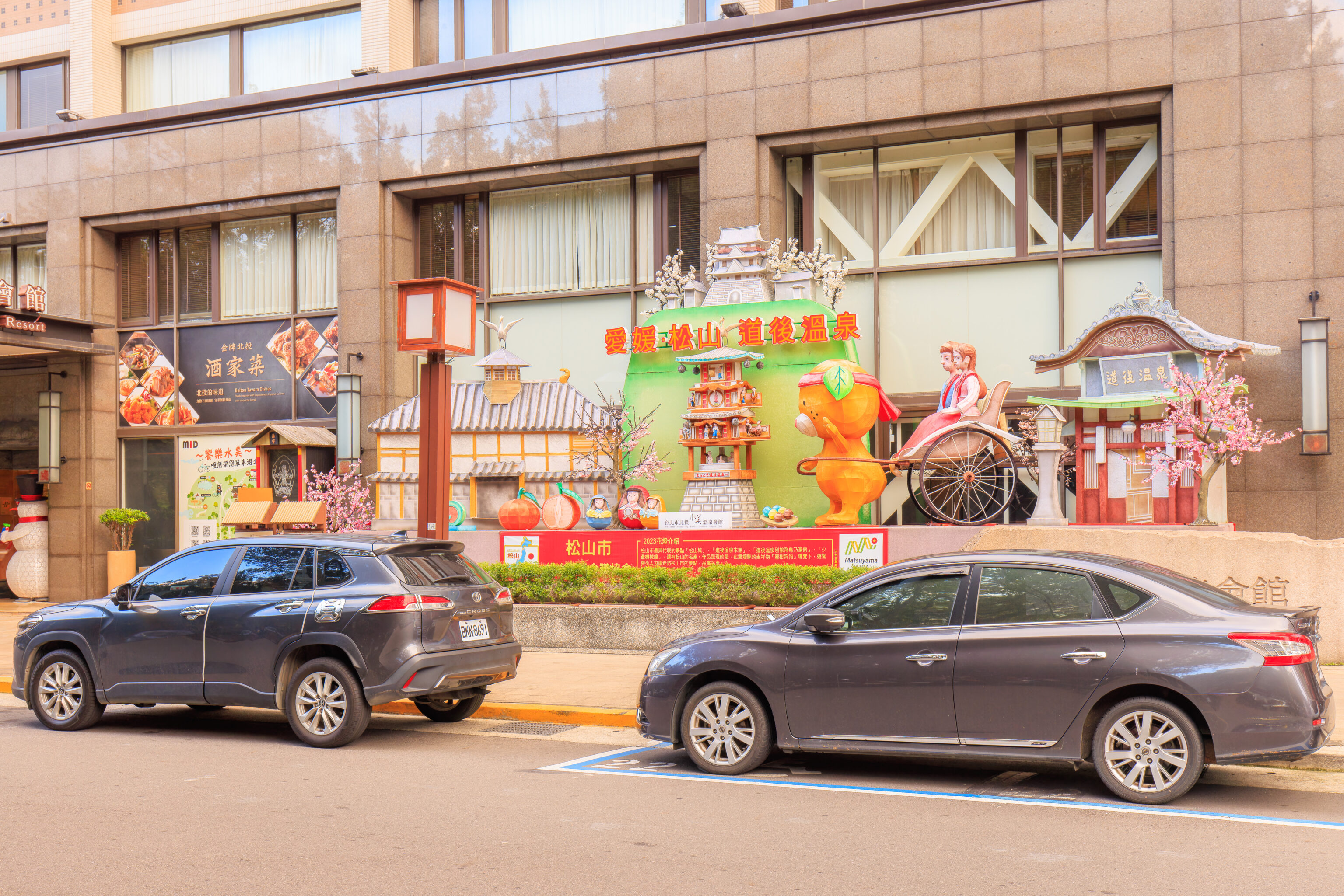
This display was in front of one of the hot spring hotels, near the western edge of Beitou Park.
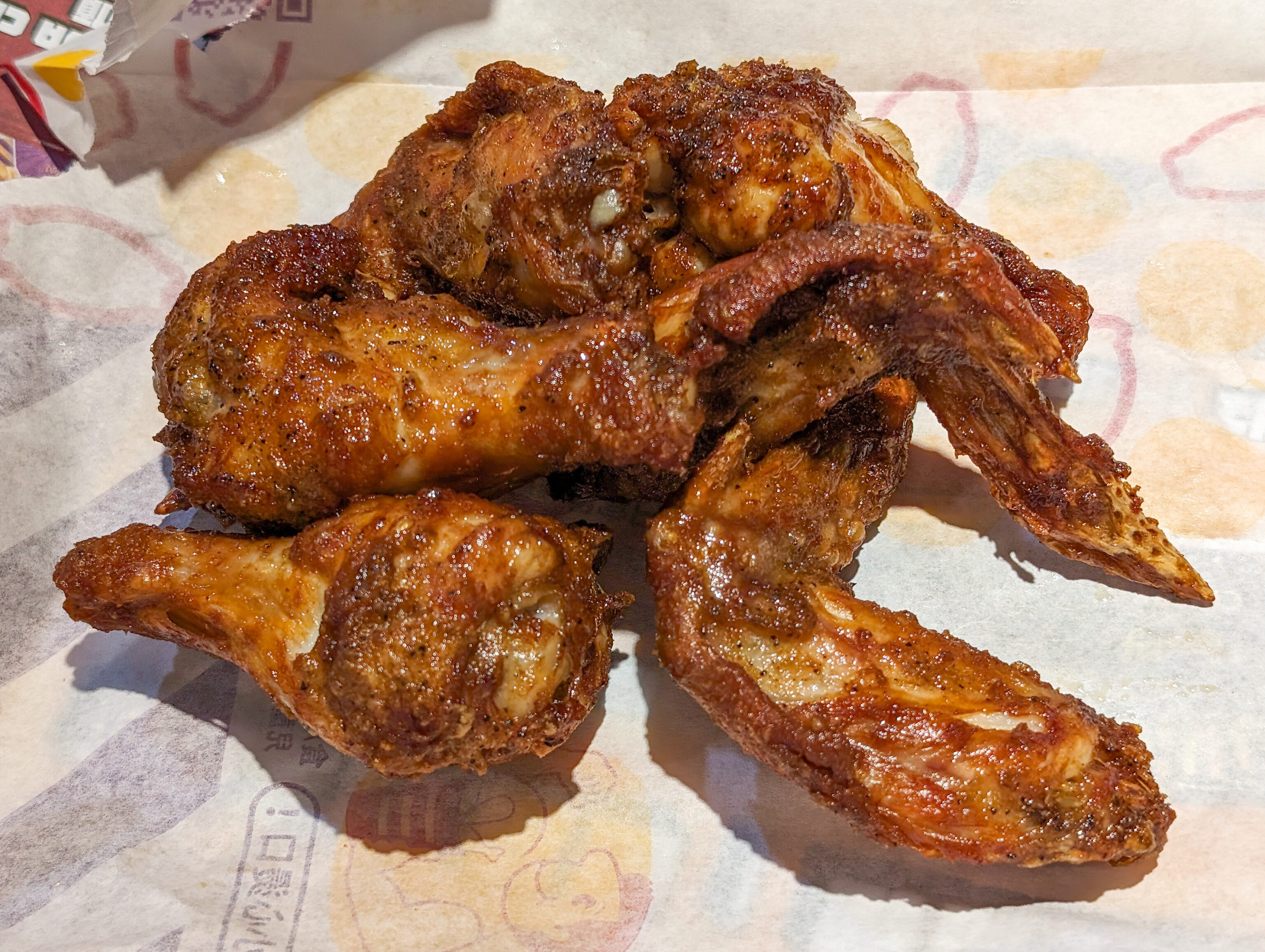
We decided to try TKK Chicken, a Taiwanese fried chicken chain that has some locations in the US. Their locations in Taipei generally have mediocre ratings. We decided to give it at try. It ended up being a disappointment. The chicken that they sell in the US is better, at least based upon their Ellicott City, Maryland location when they manage to prepare the chicken correctly.
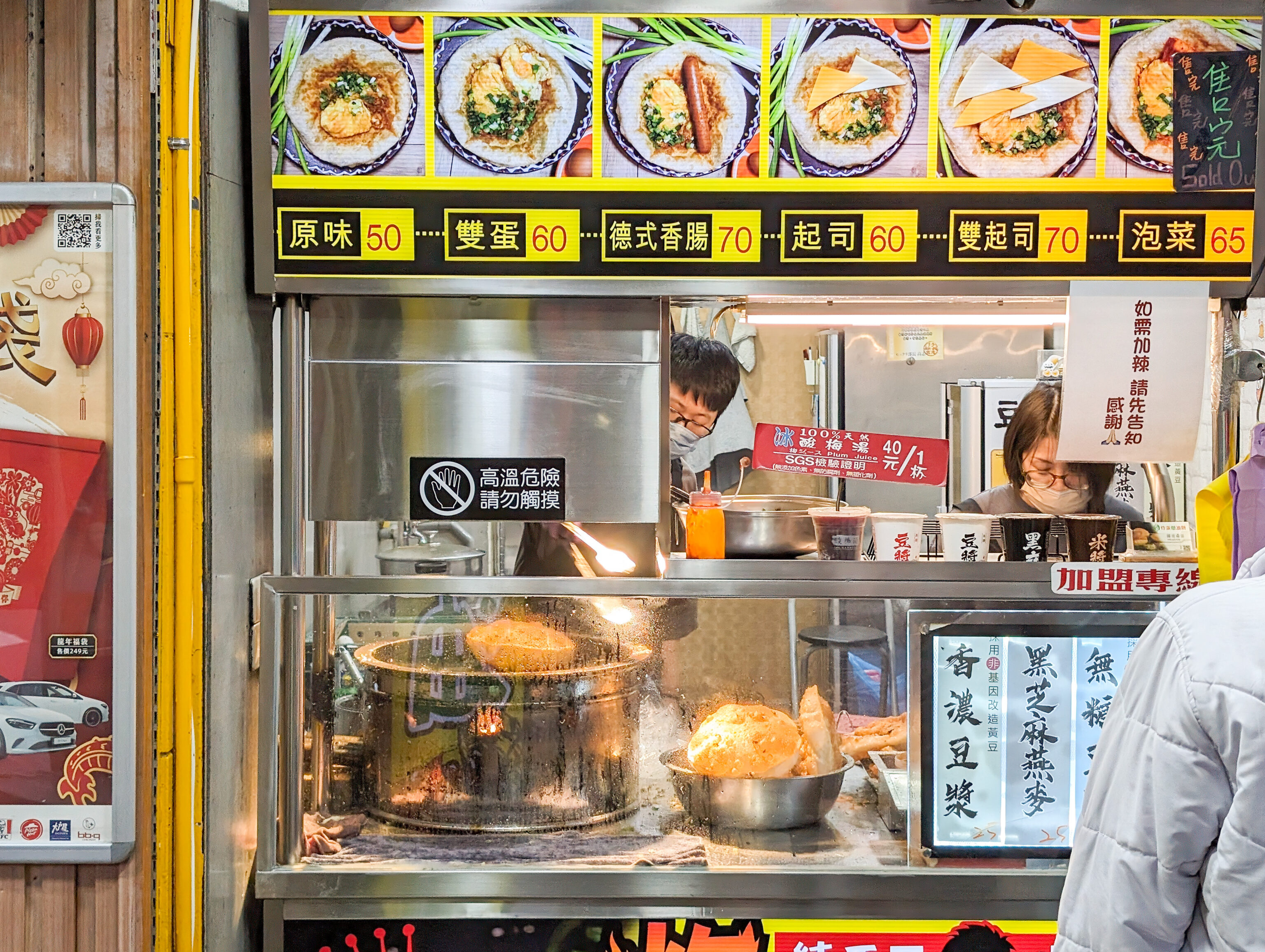
This small take away shop, 北投炸彈蔥油餅 Beitou Bomb Scallion Pancake, had a good sized queue so we decided to give it a try! It is basically a bing (pancake is the standard but poor English translation for bing as it is nothing like a pancake) that “explodes” like a bomb. It doesn’t actually explode, of course, it just puffs up.
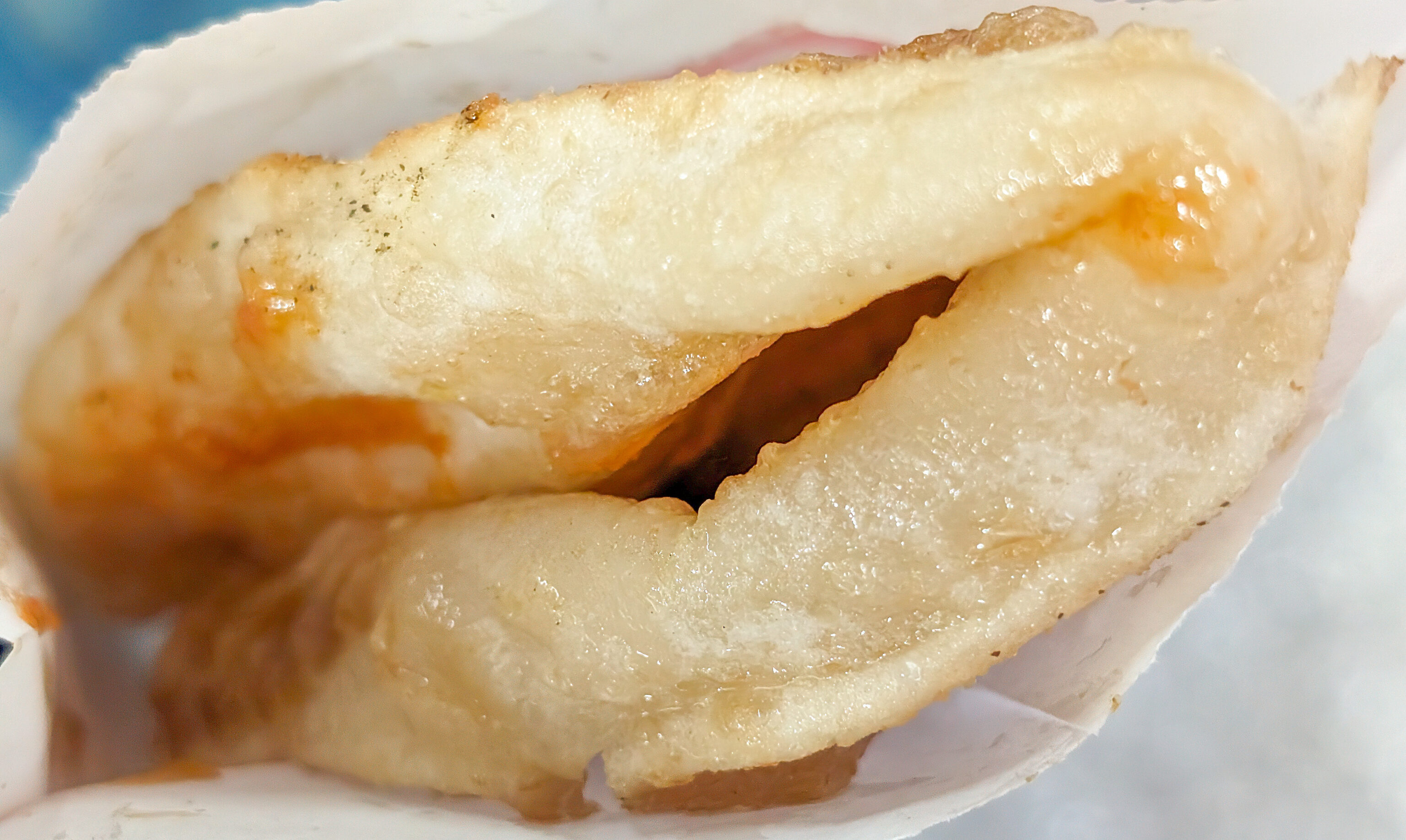
The final product doesn’t really photograph well. It was tasty, though lacking in scallion flavor.
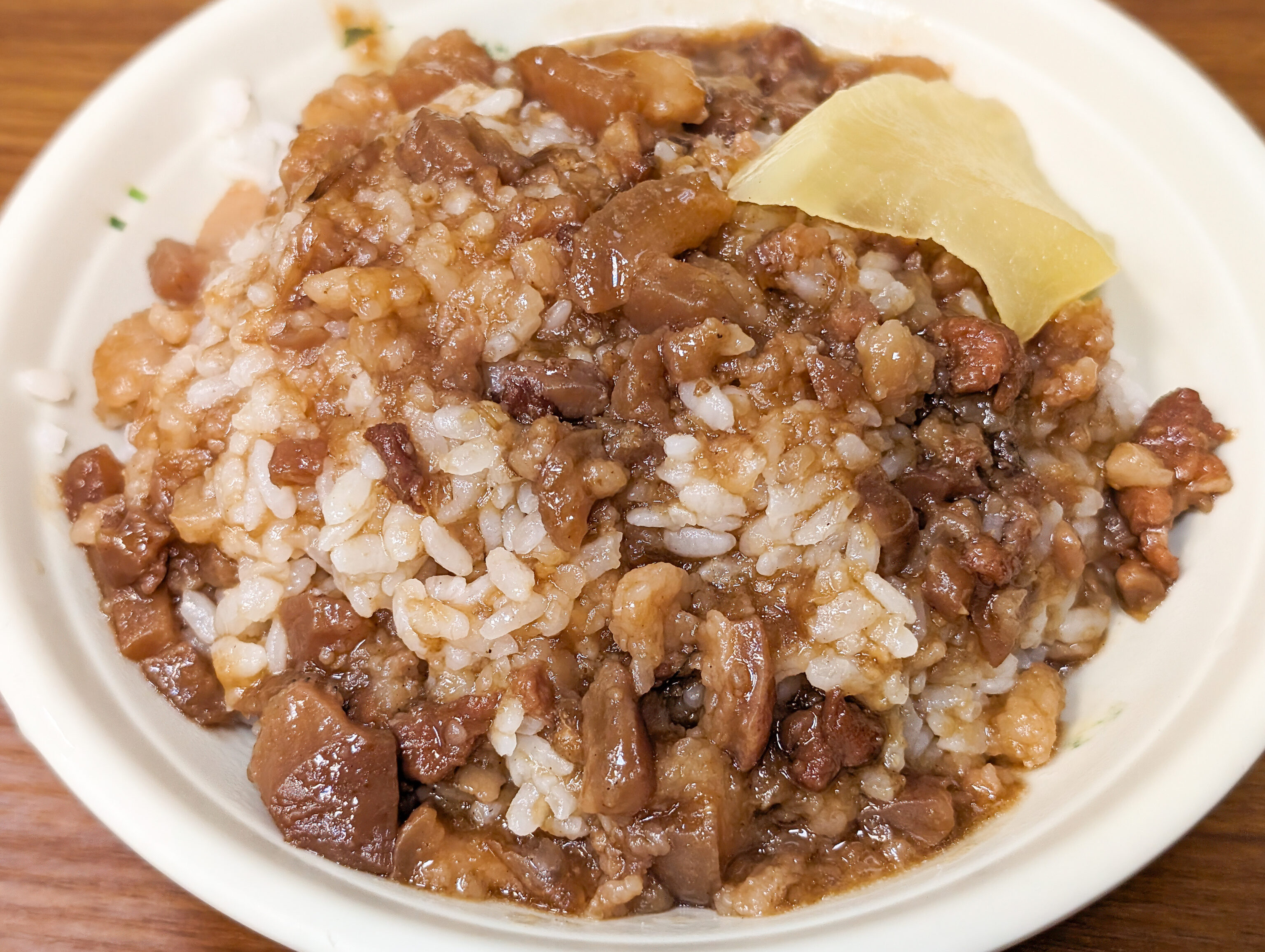
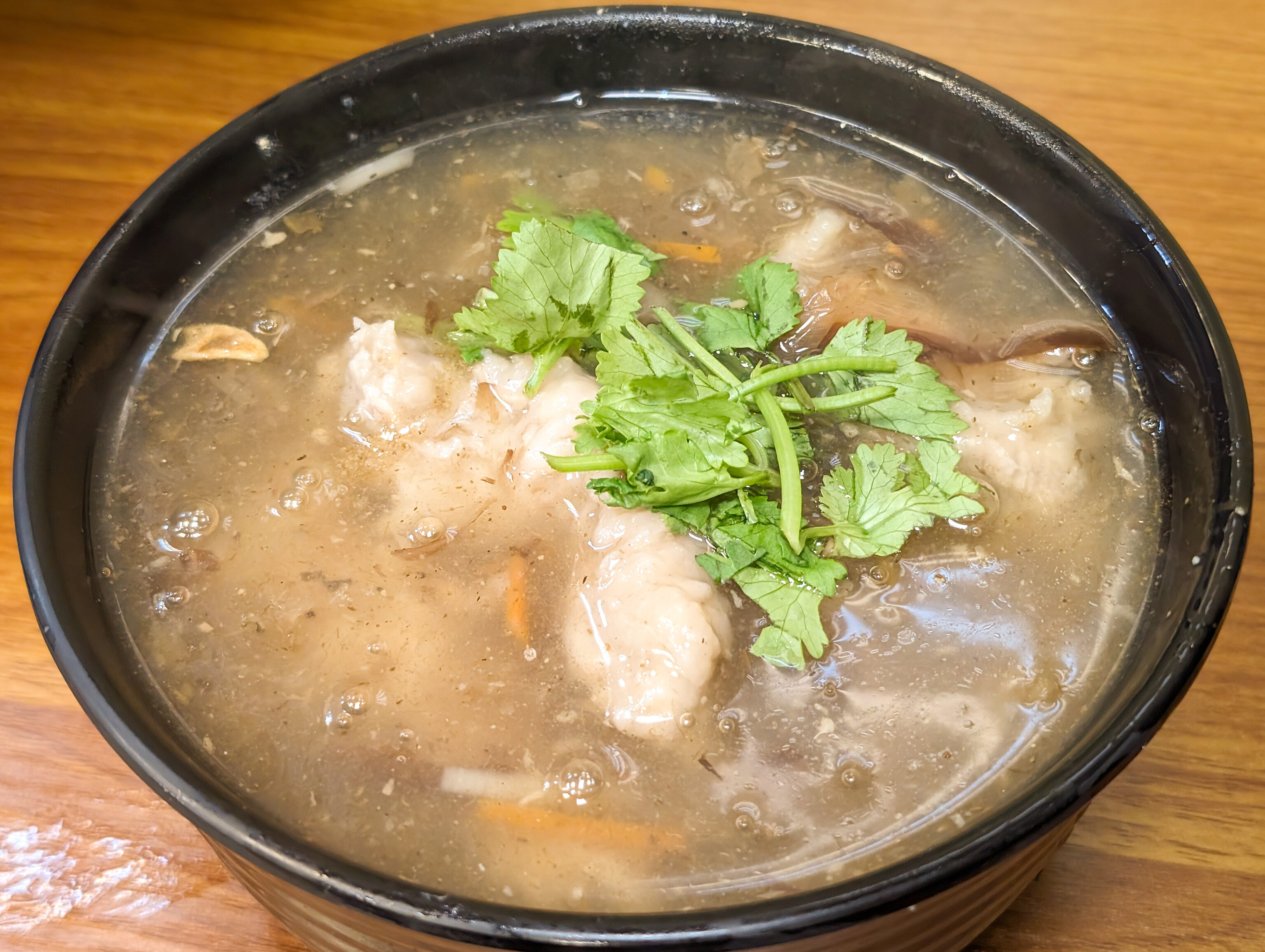
We then went across the street to get some food from 二四傳統小吃. We got their braised pork rice and a noodle dish. Both were good.
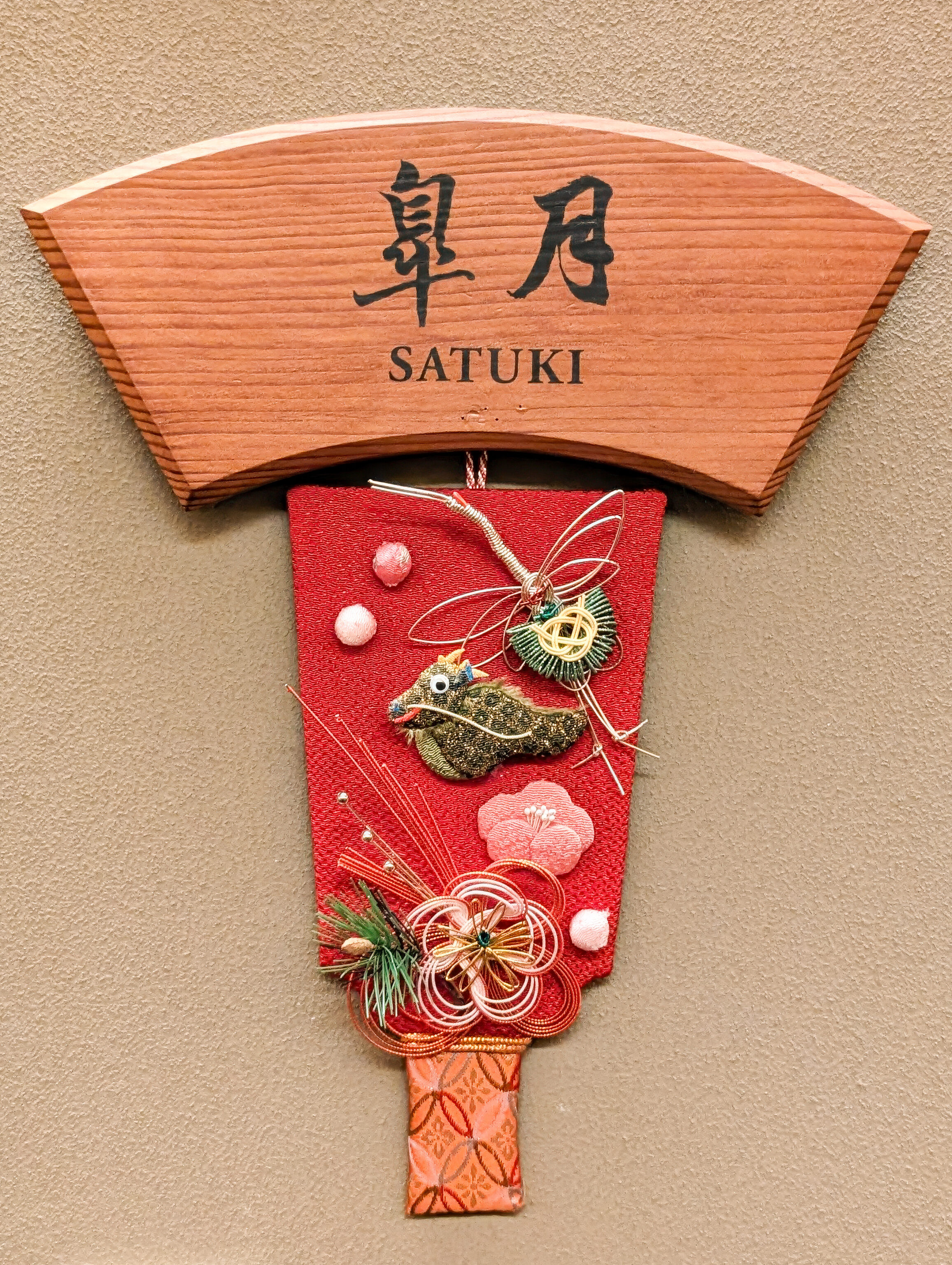
After eating, we headed over to Radium Kagaya. We were pretty early so had to wait a bit but we ended up being able to go into the hot spring room early. The rooms are all named, we had Satuki.
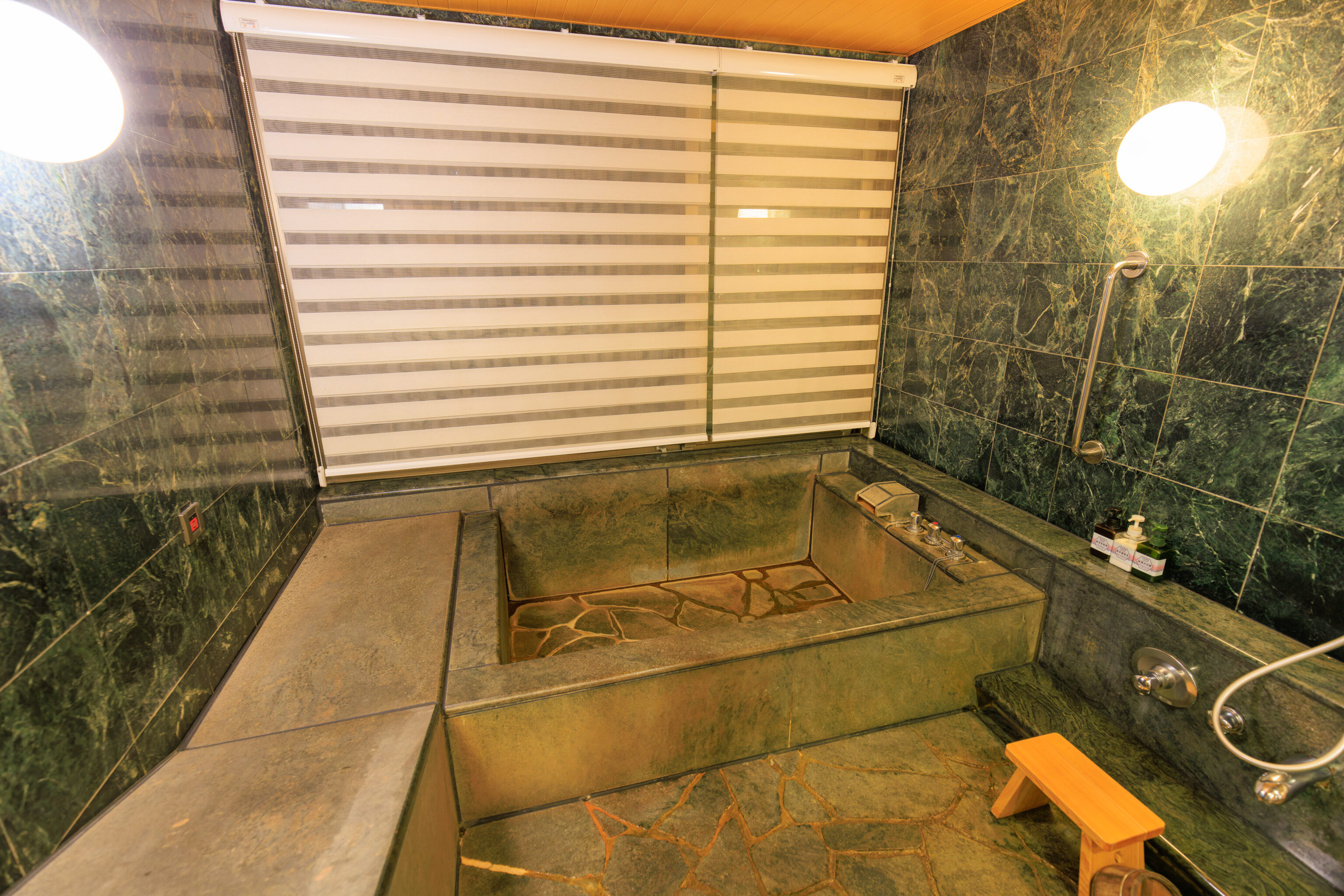
The room was fairly large with a room to sit and change as well as the actual hot spring bath room, which contained a shower and hot spring tub. It was definitely an enjoyable experience, particularly nice after a day of walking around.
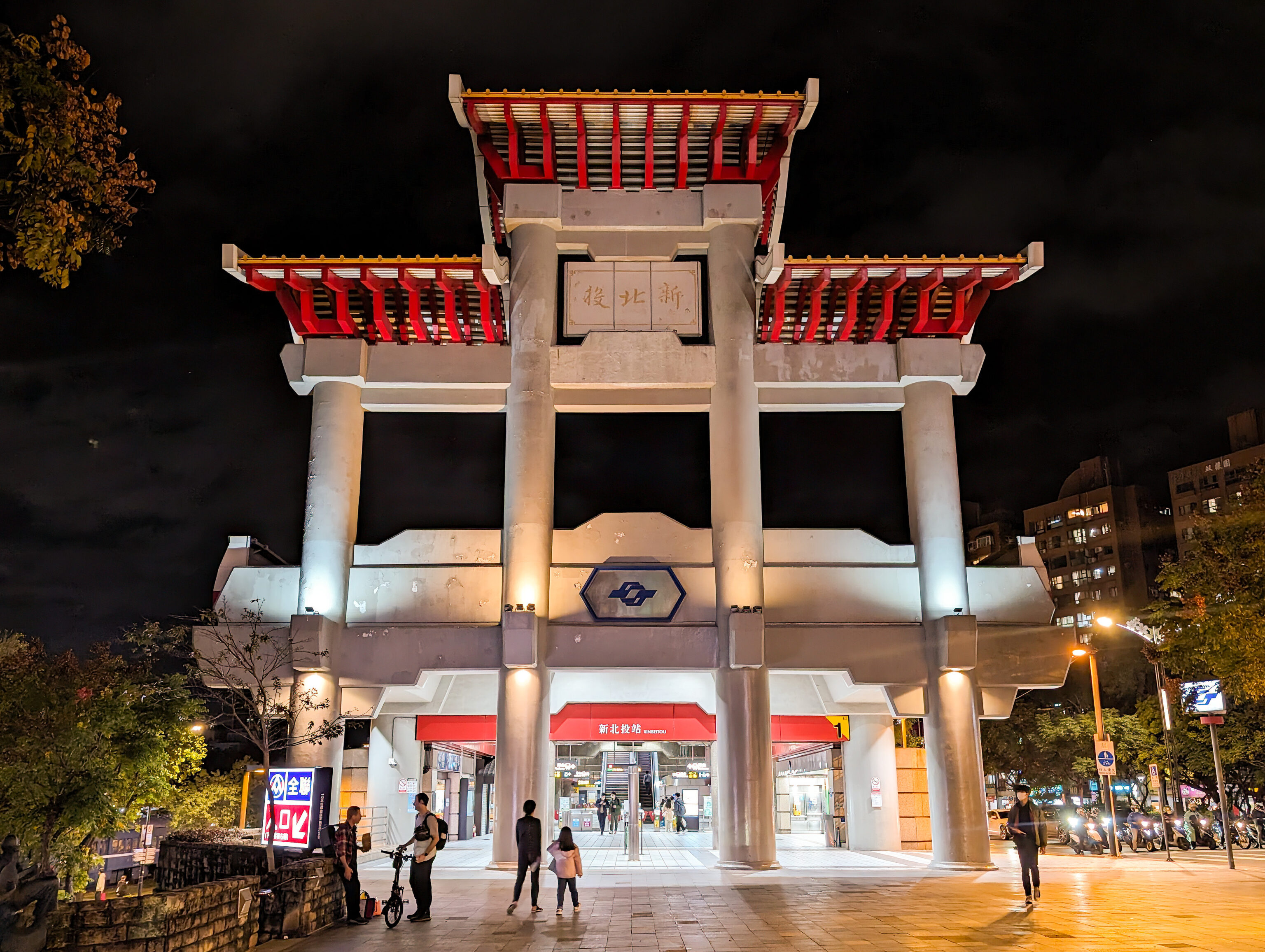
After, we returned to the MRT station to begin the trip back.
Taipei 101
It was around 9pm by the time we got back to the Taipei 101 MRT station.
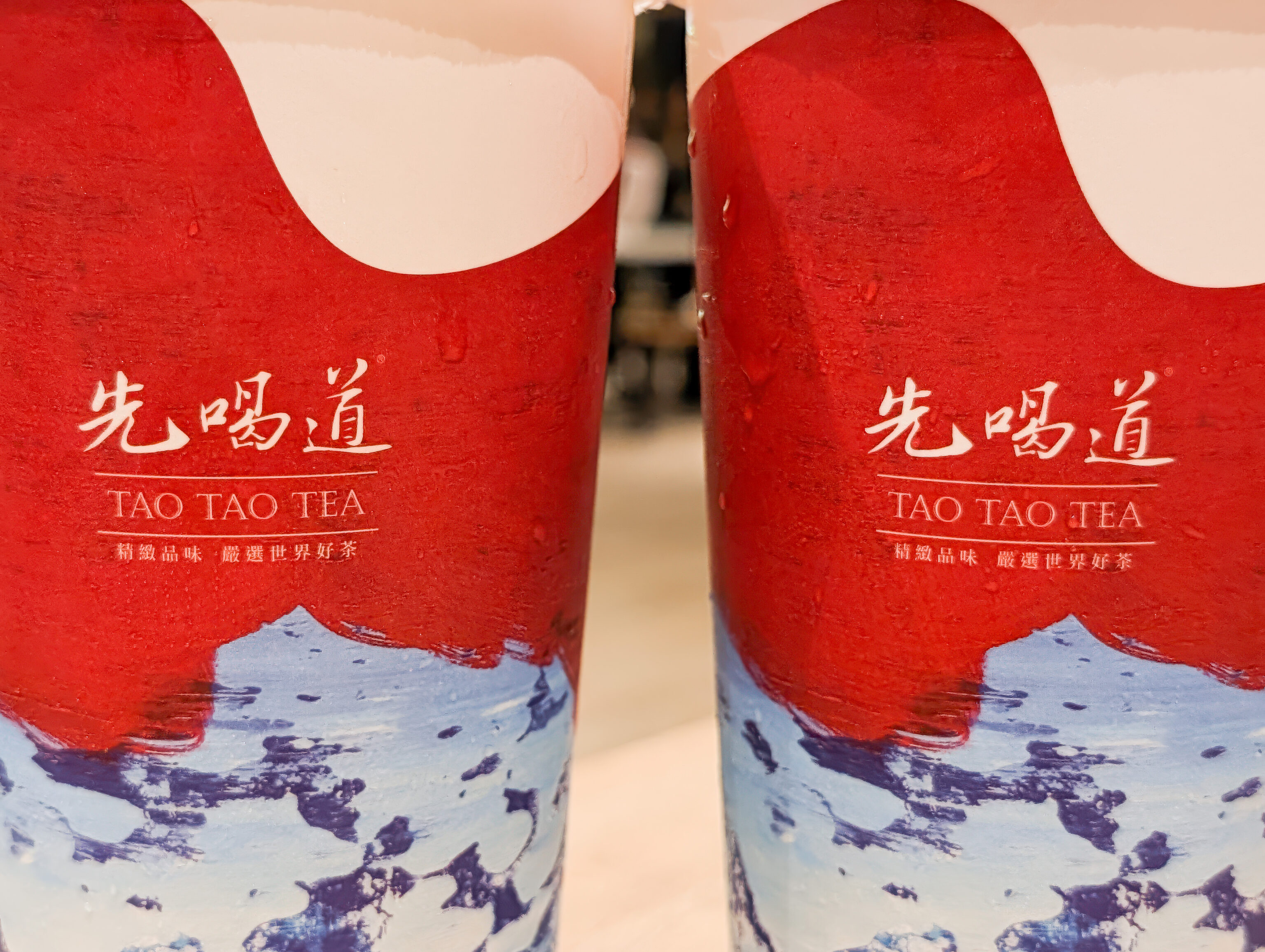
We decided to get some tea from Tao Tao Tea. Typically, we’ve been getting one milk tea and one fruit tea.
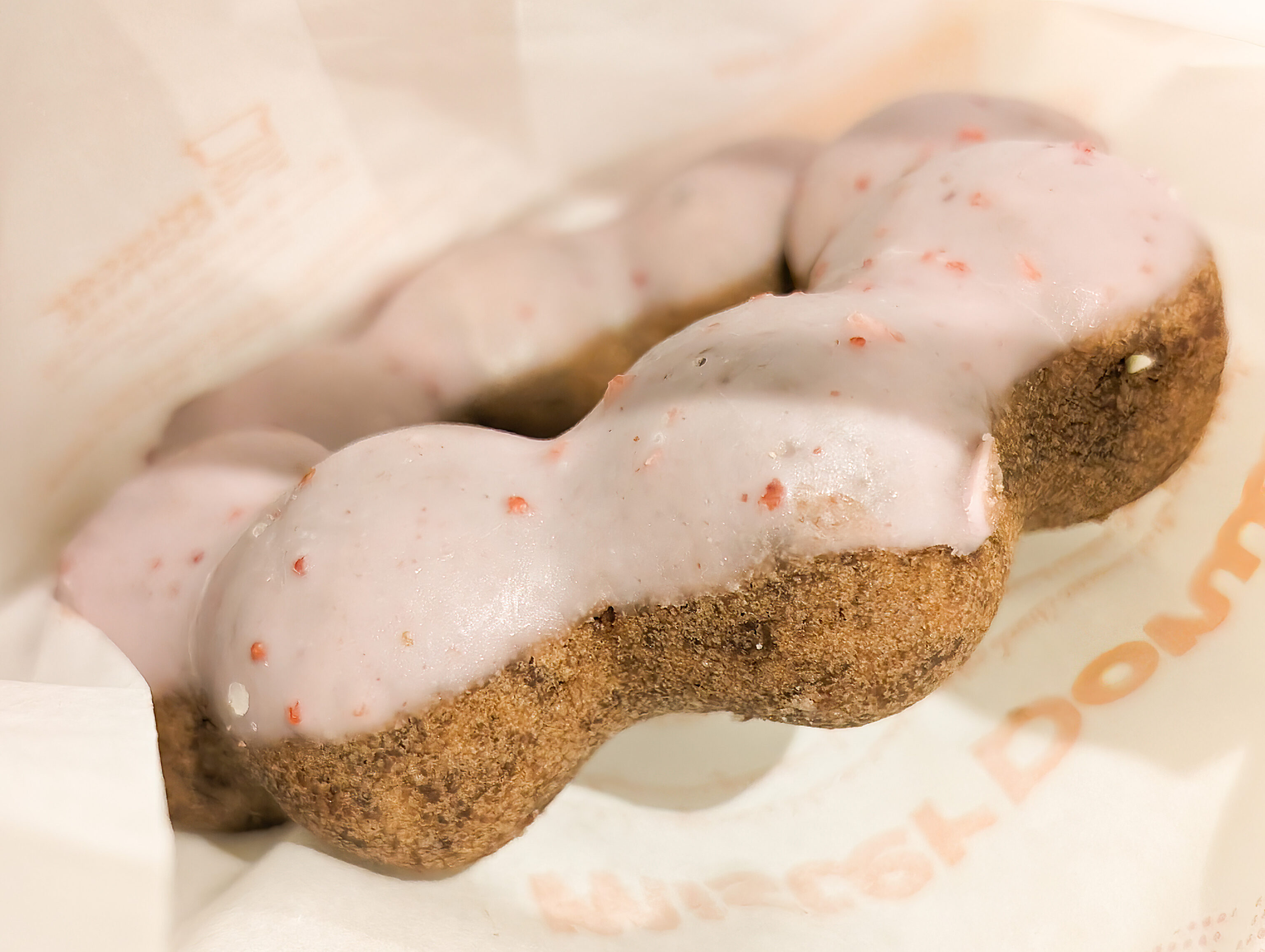
We also got a mochi donut from Mister Donut. It was better than expected. We then walked back to the Grand Hyatt to end our day.
Footnotes
- https://www.xbths.taipei/en/index.php: In Taiwan under Japanese rule, the Xinbeitou branch railway line was constructed, and “Xinbeitou Platform” was established in 1916 (Taisho 5th year) and later renamed as “Xinbeitou Station” in order to boost the hot springs tourism in Xinbeitou region. ↩︎
- https://hotspringmuseum.taipei/about/history: Daikichi Imura, the magistrate of Taipei Prefecture under Japanese Colonial Government, built the Beitou Public Bathhouse in June 1913 ↩︎
